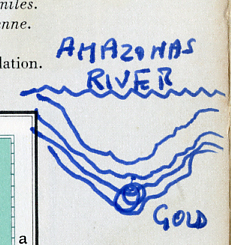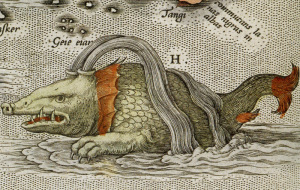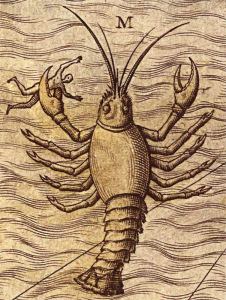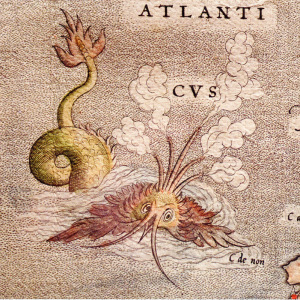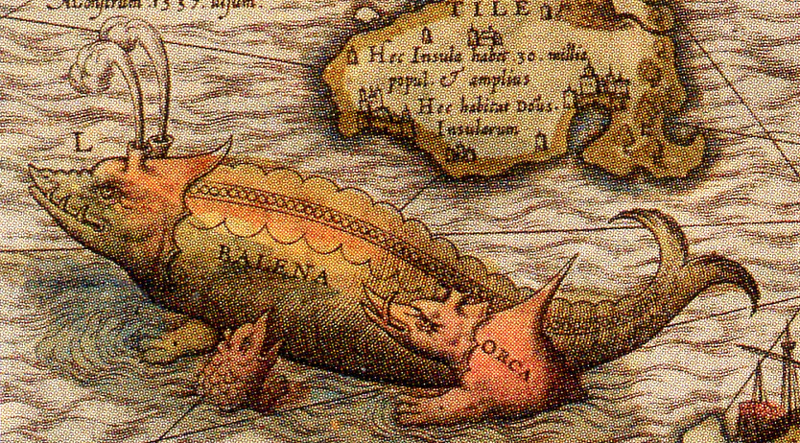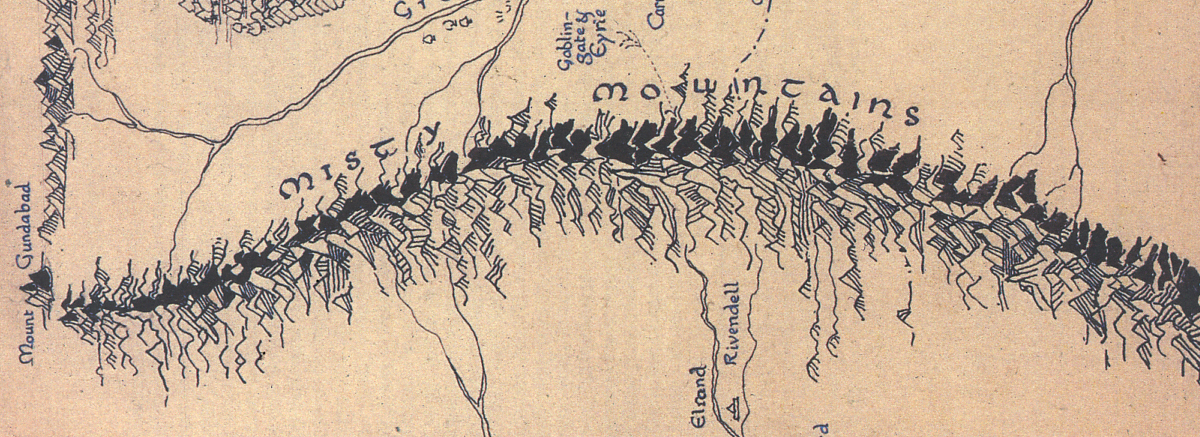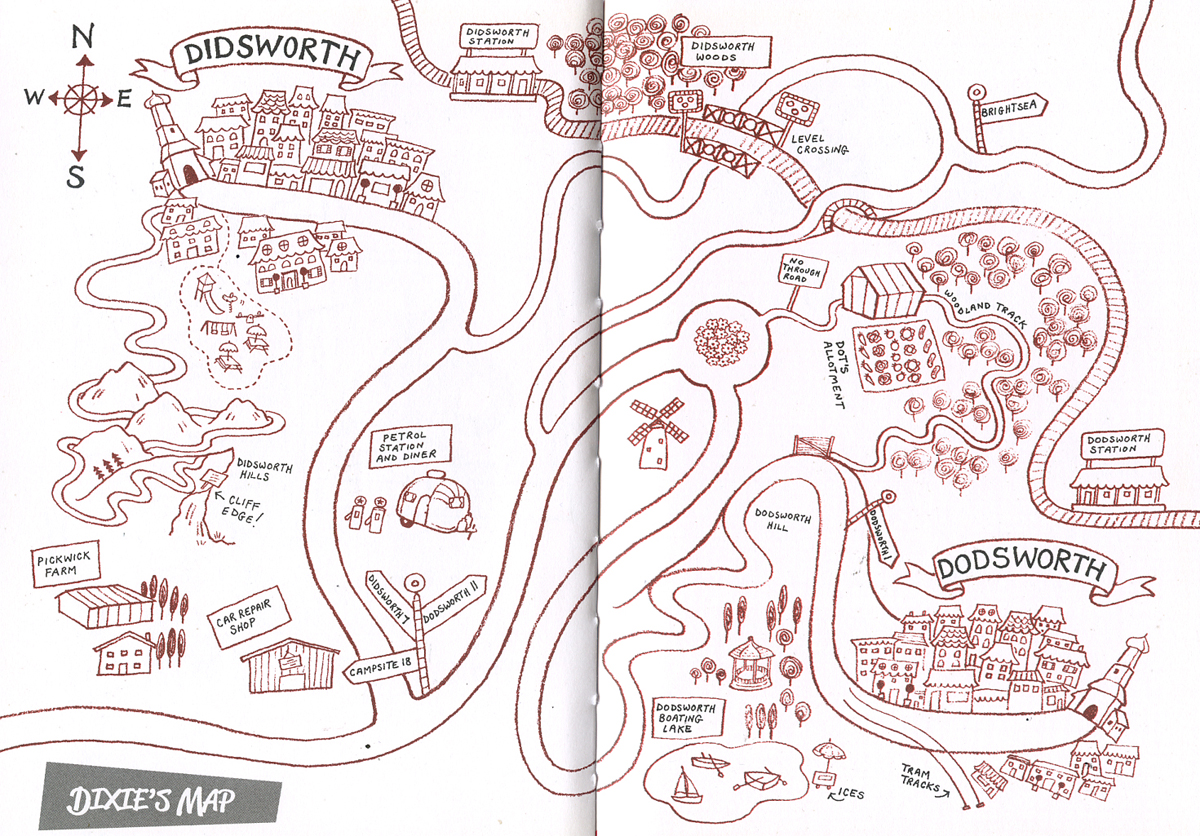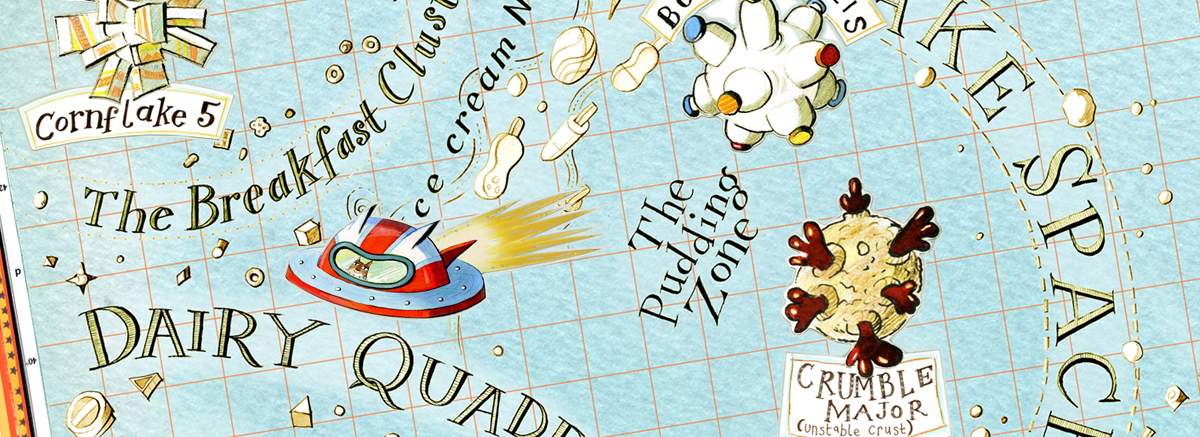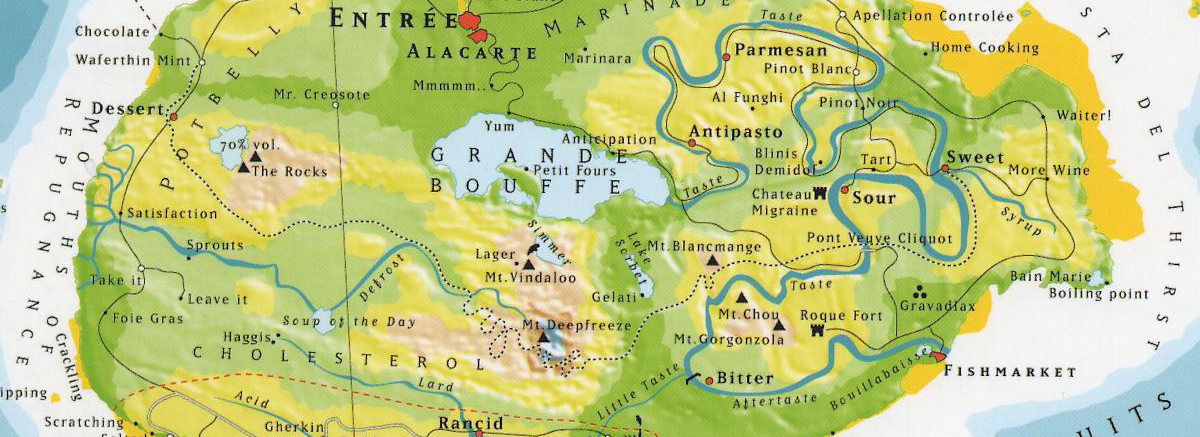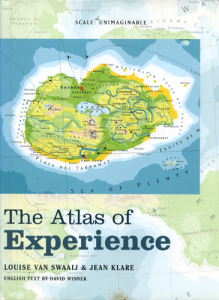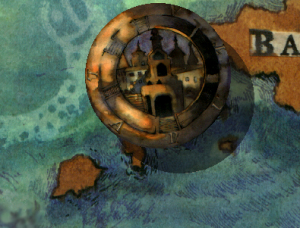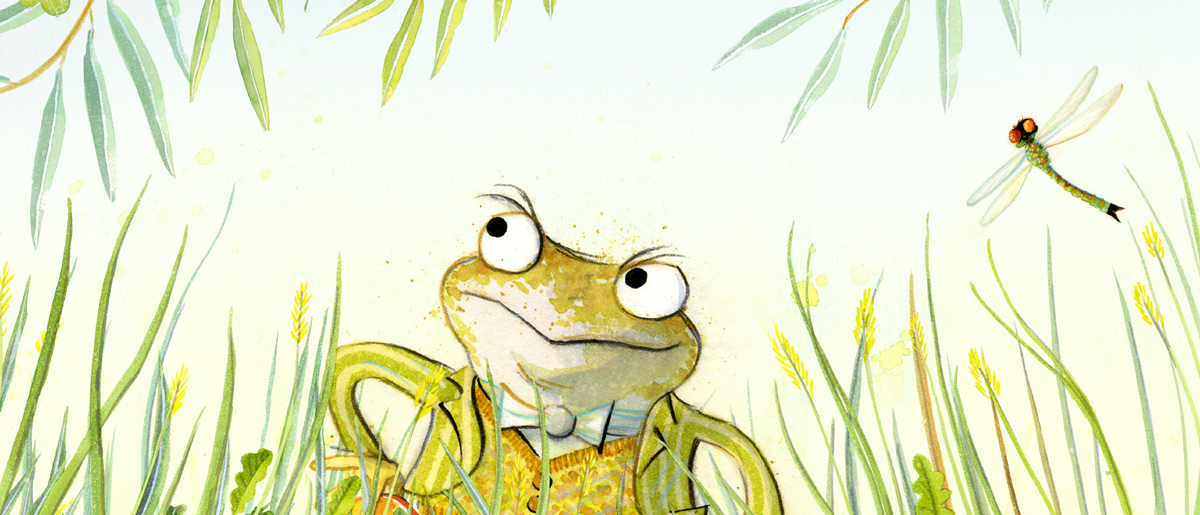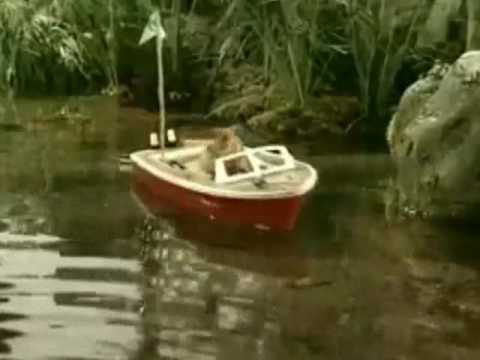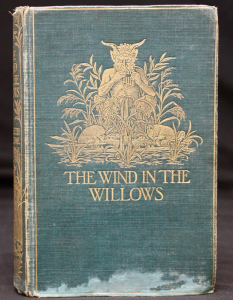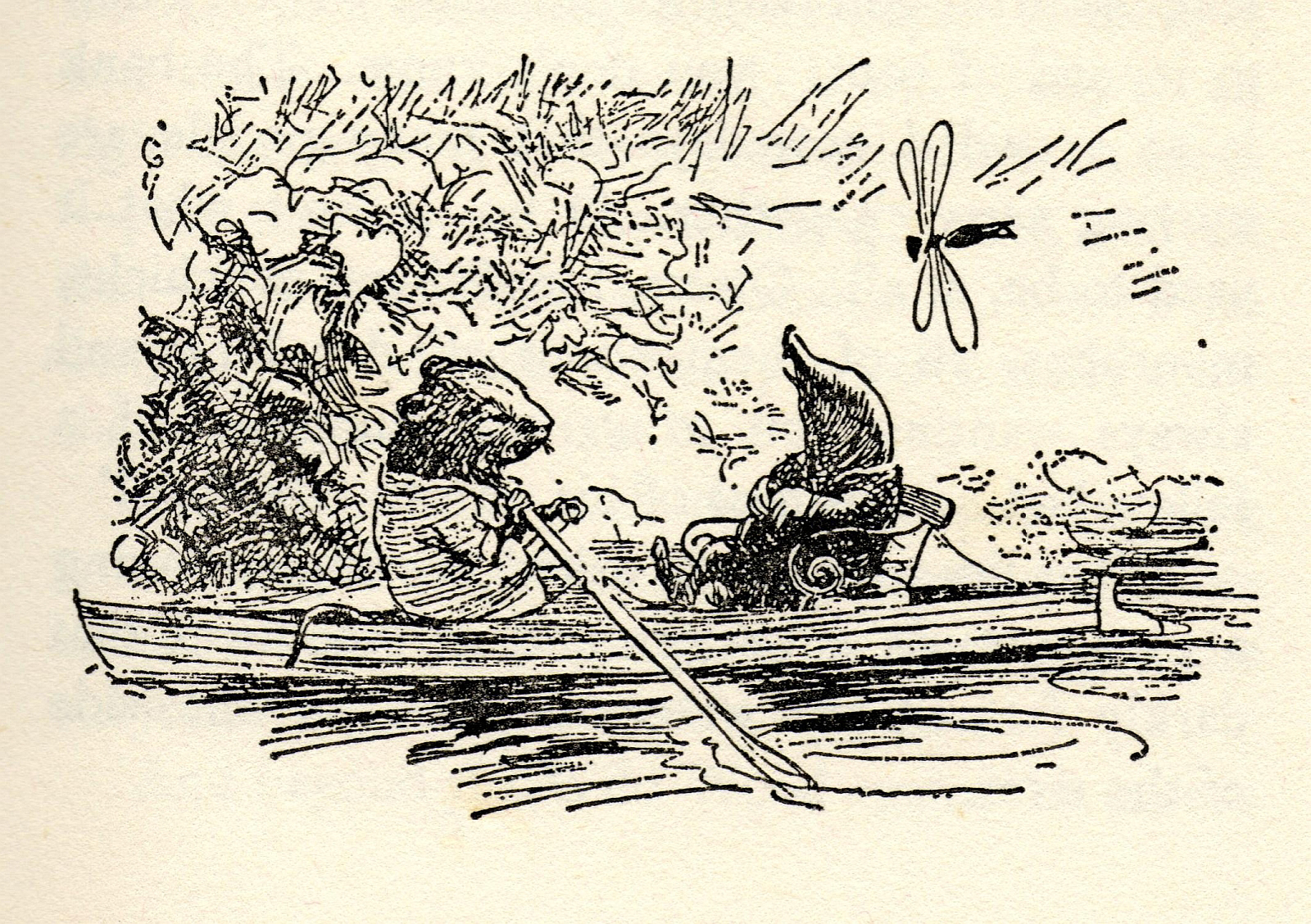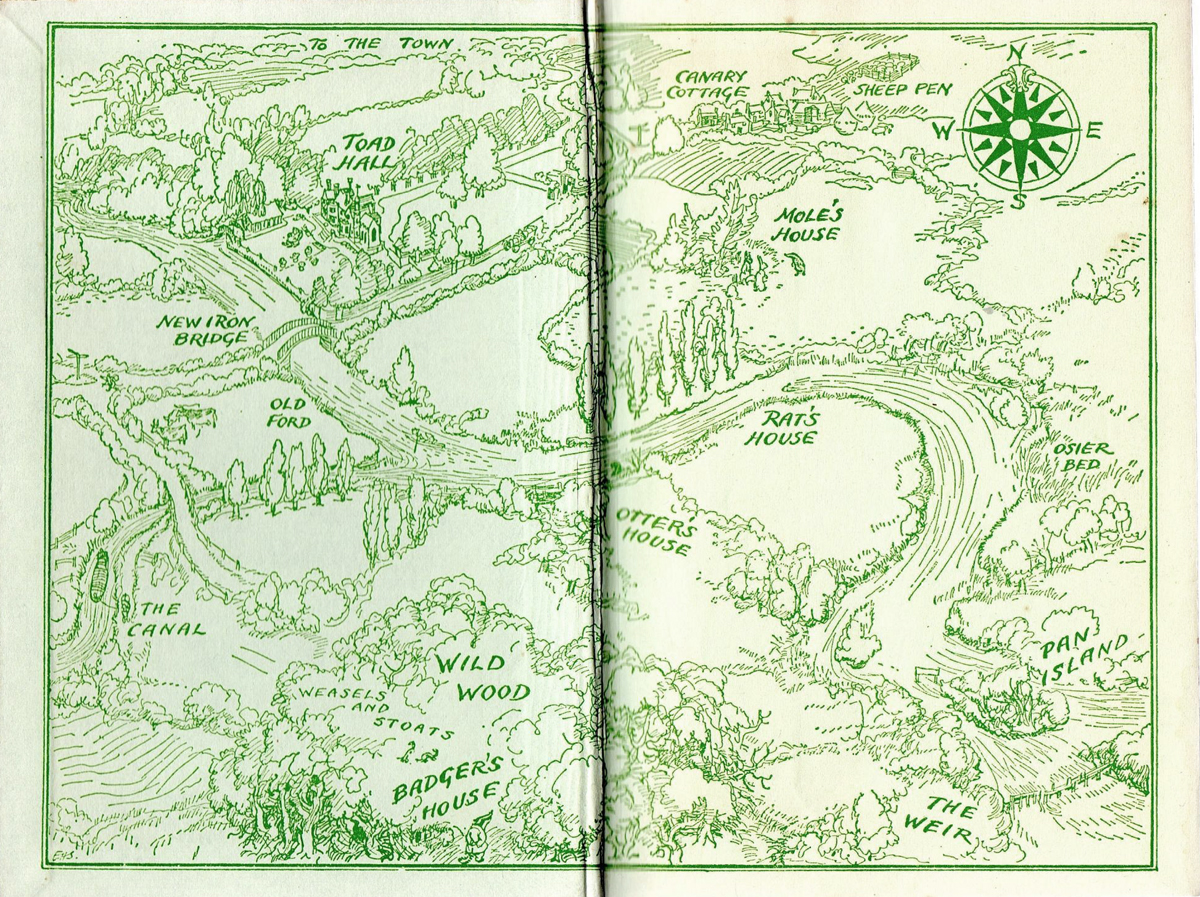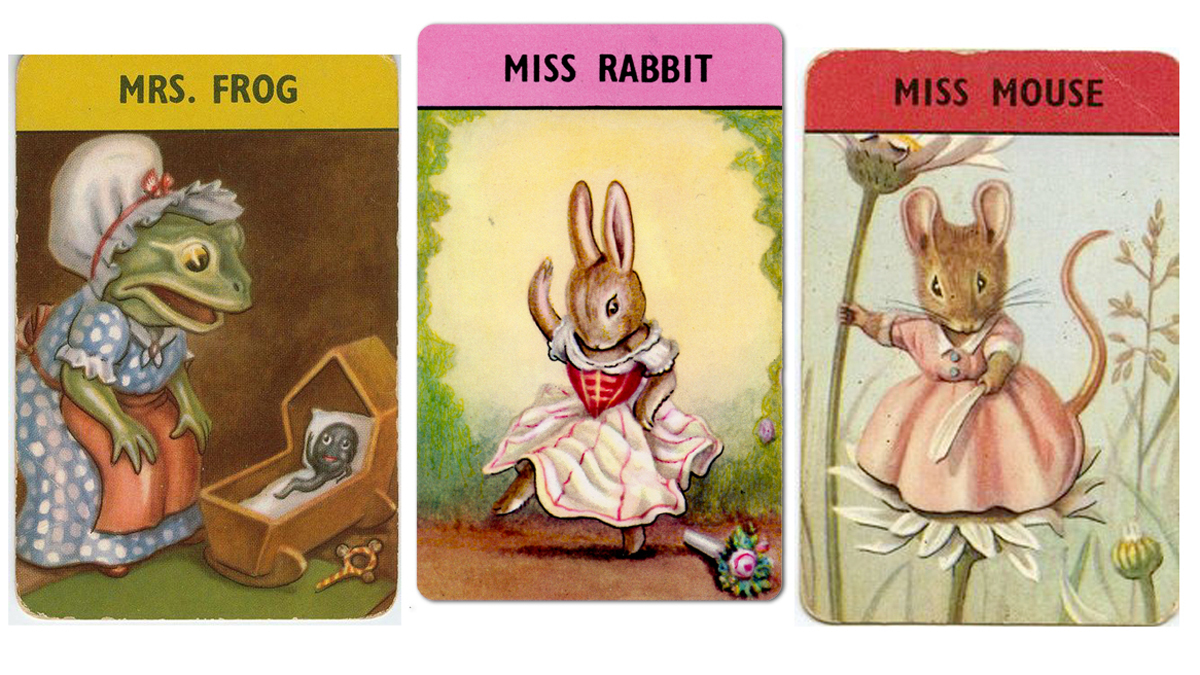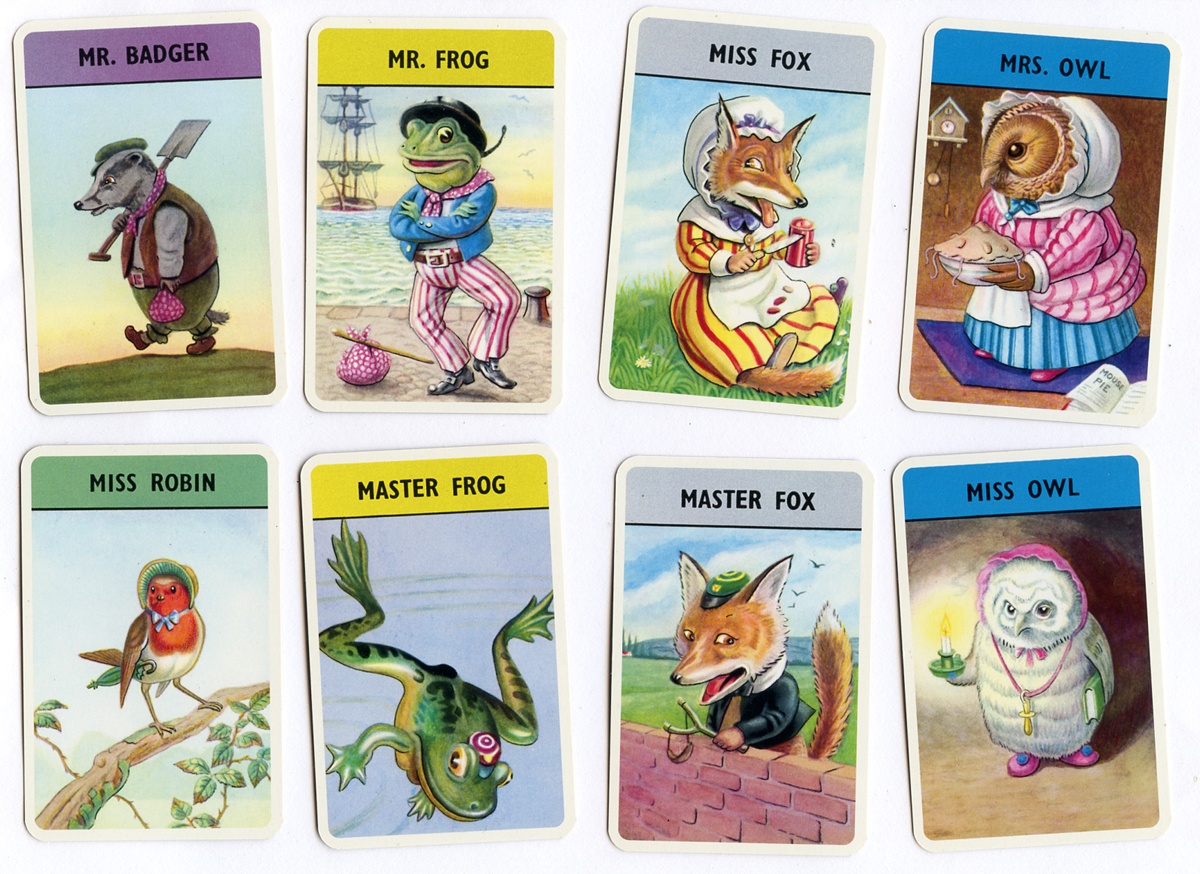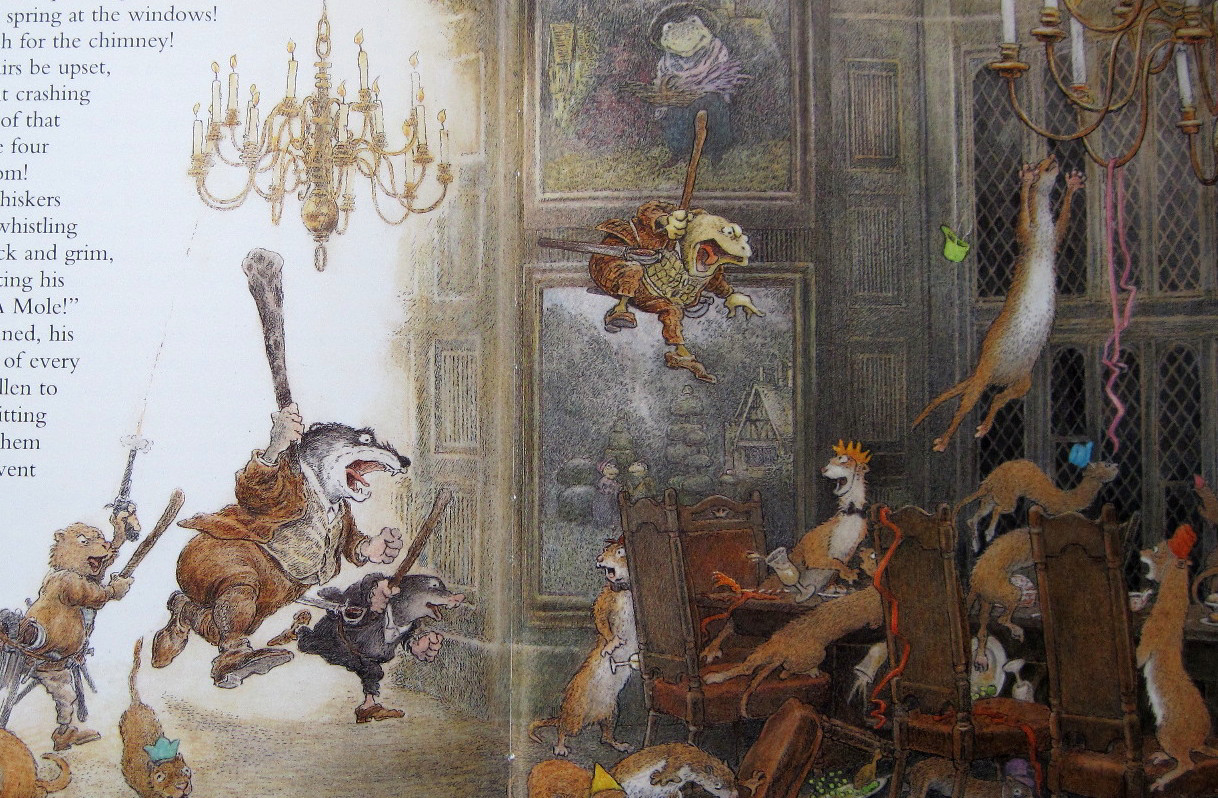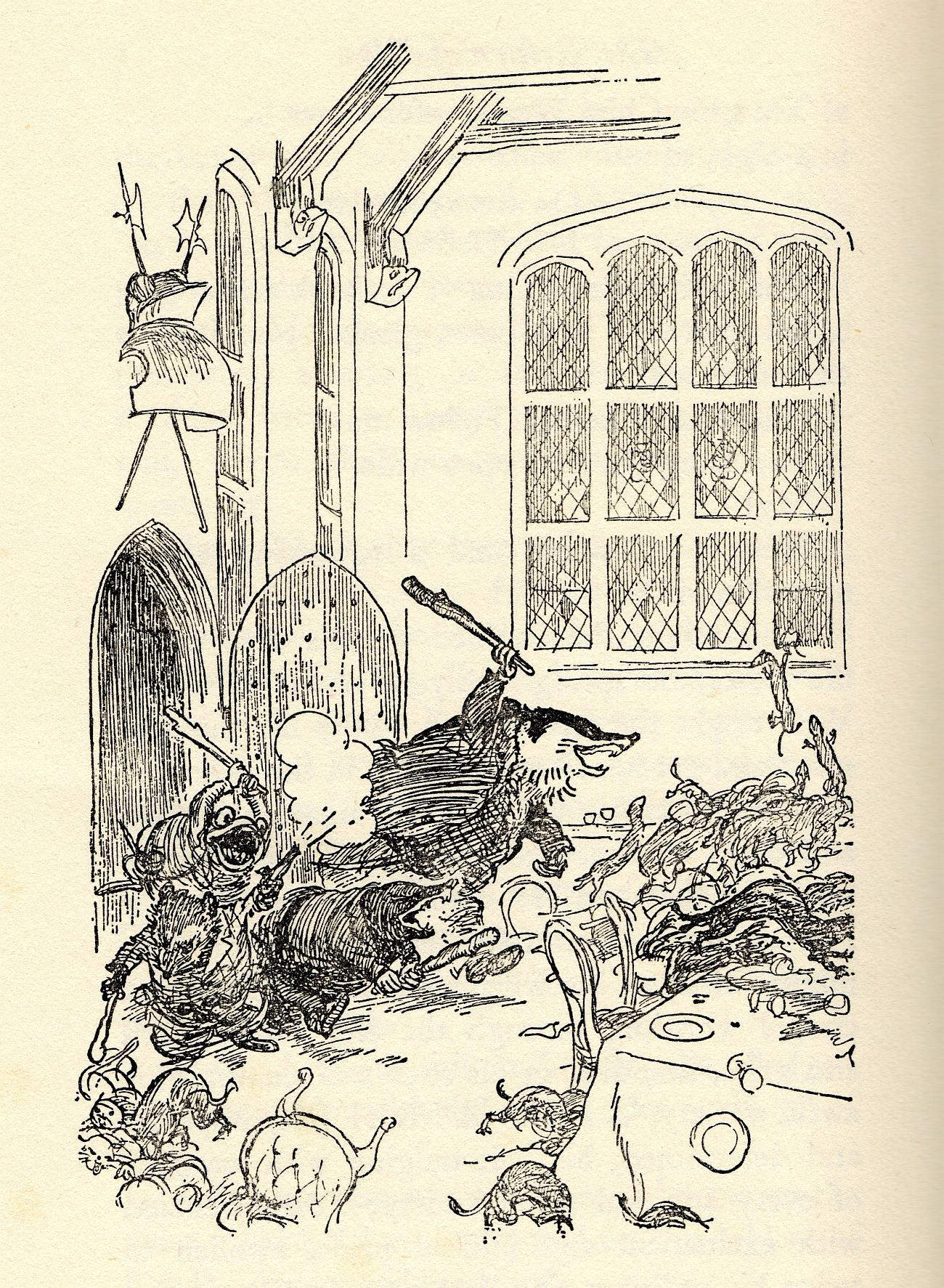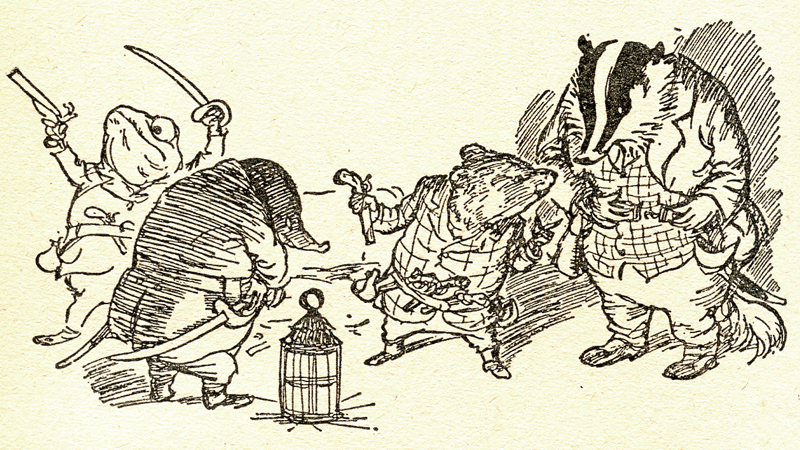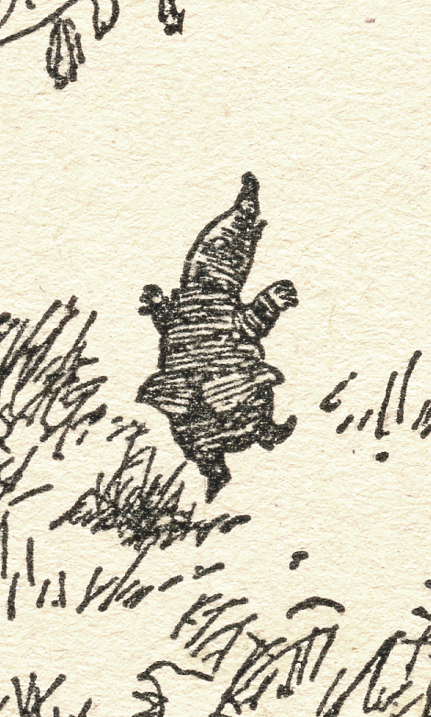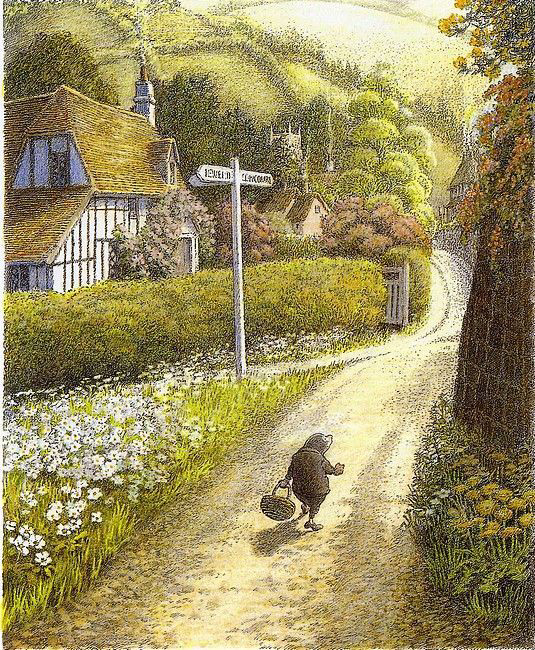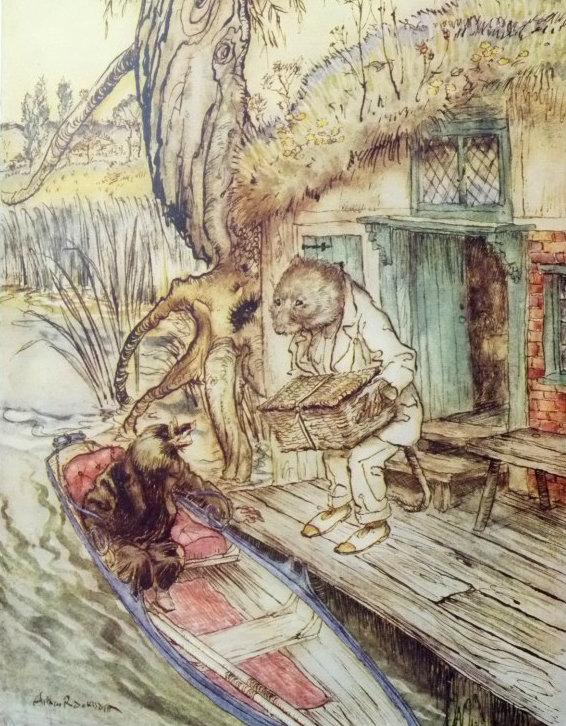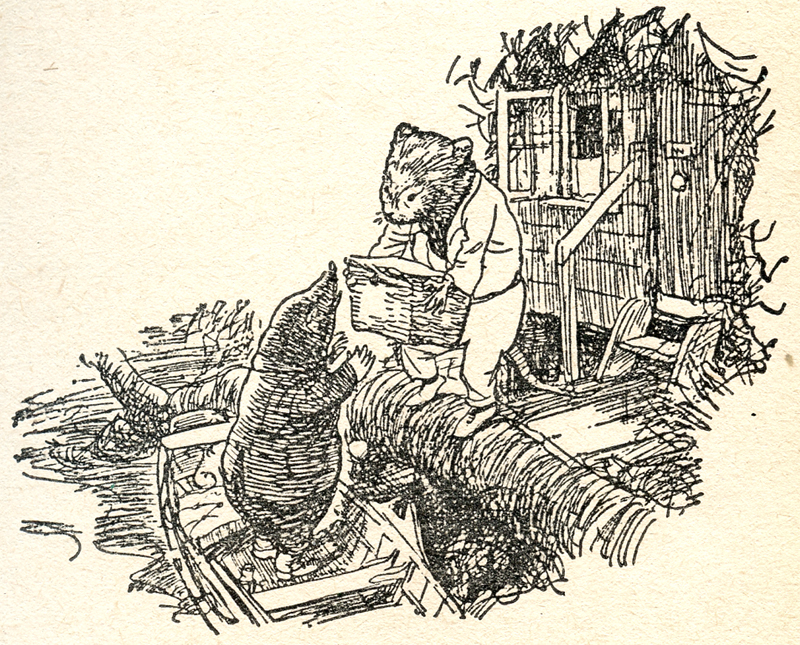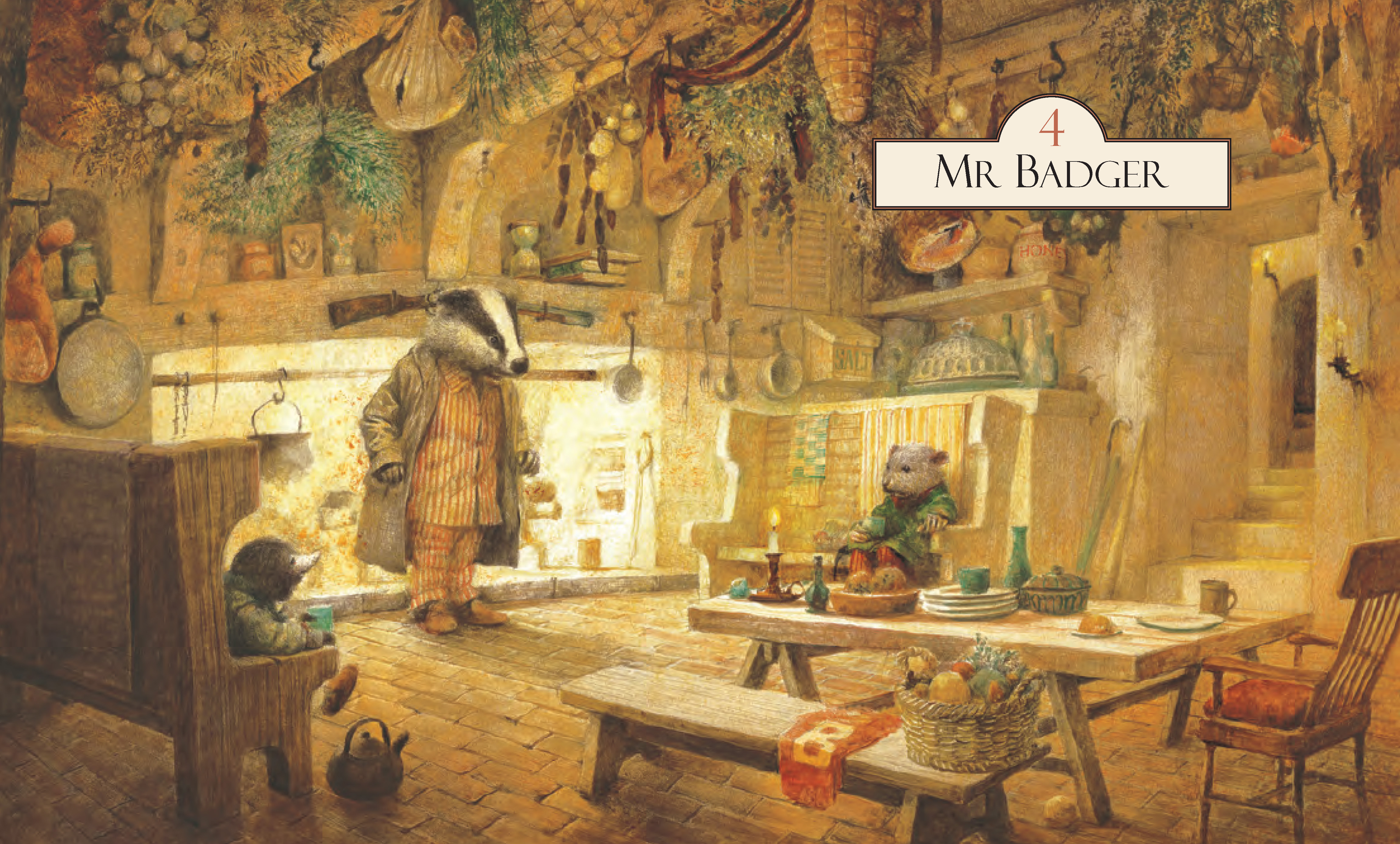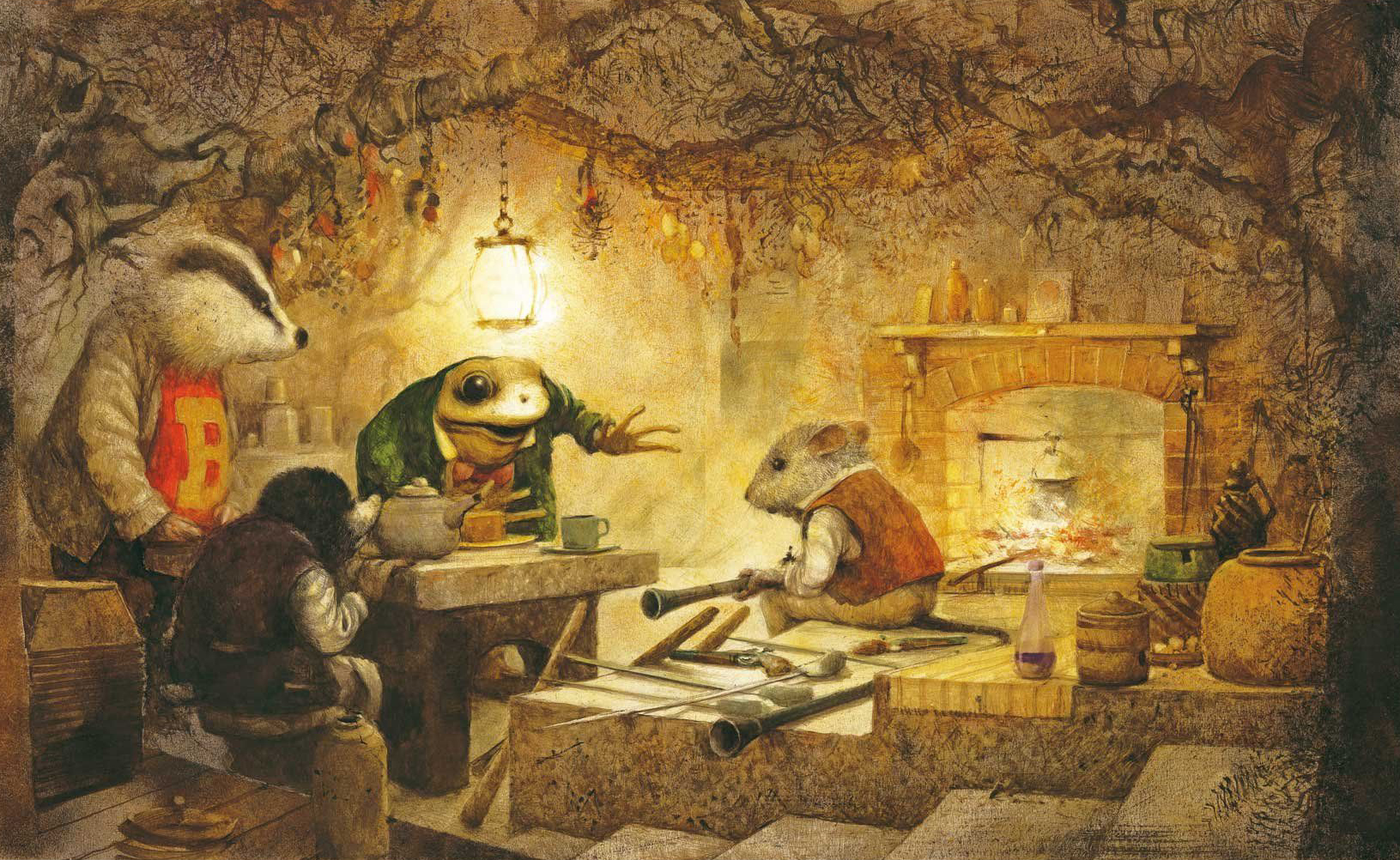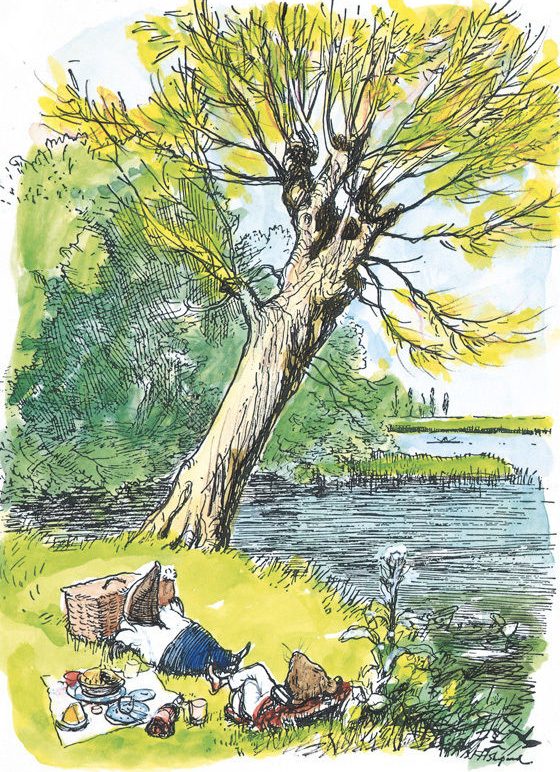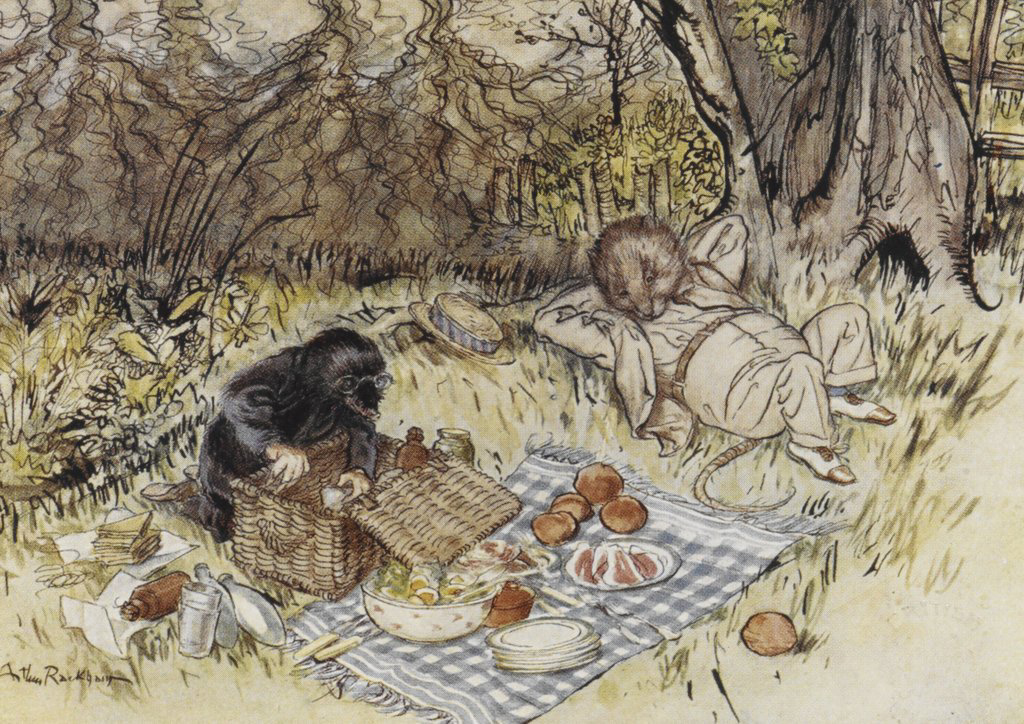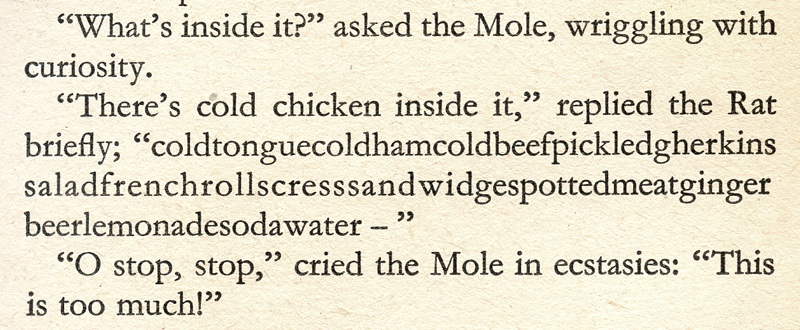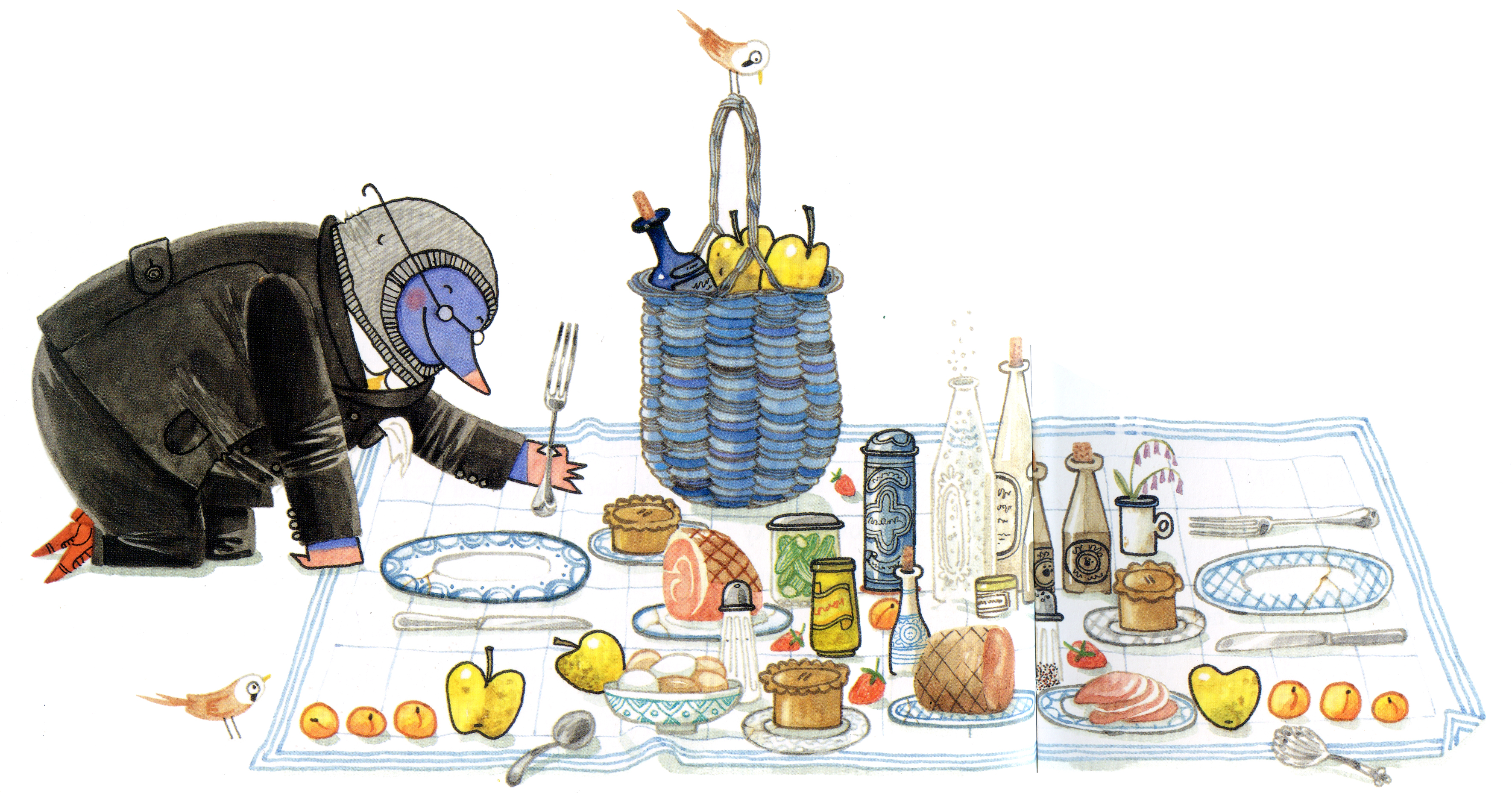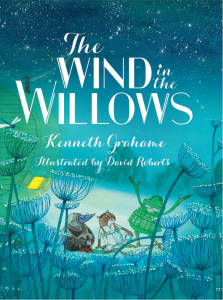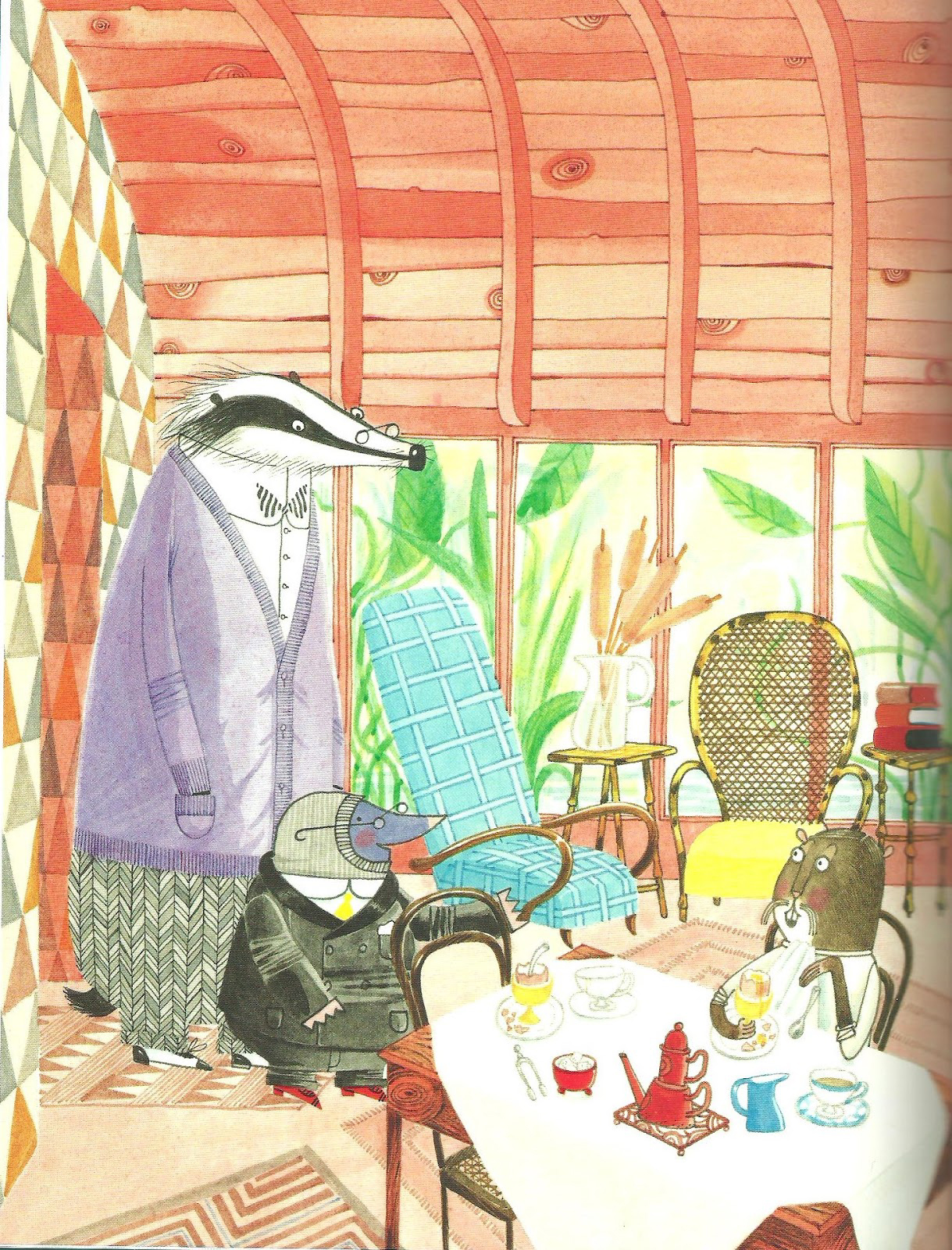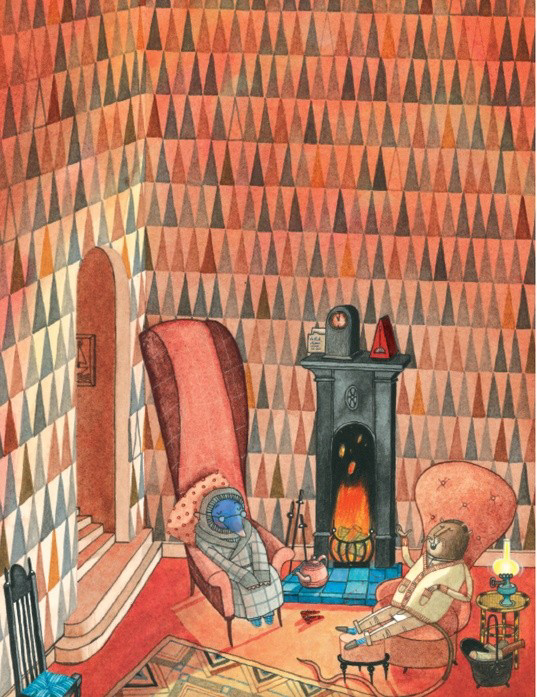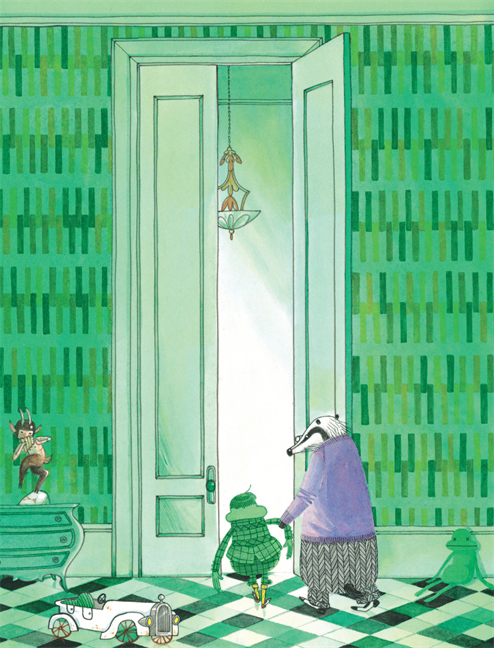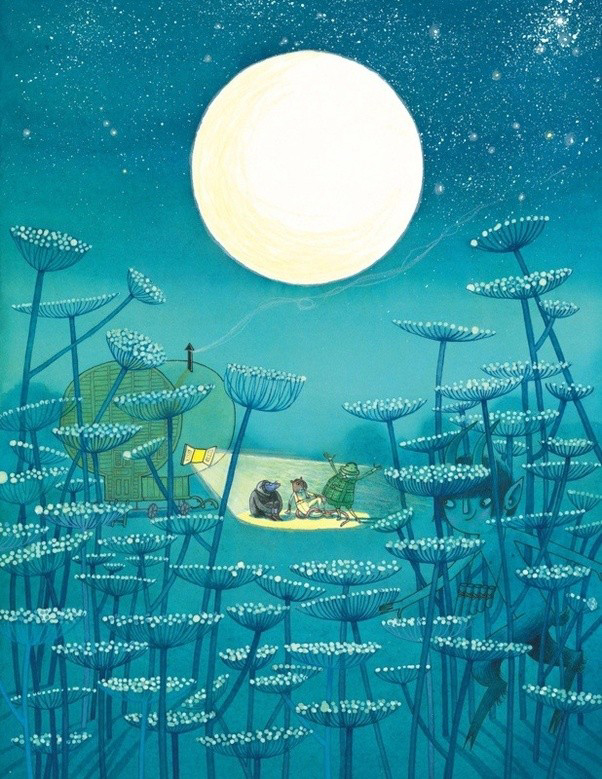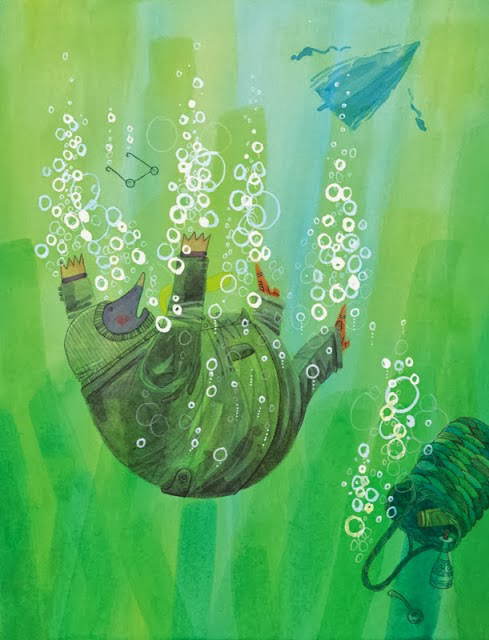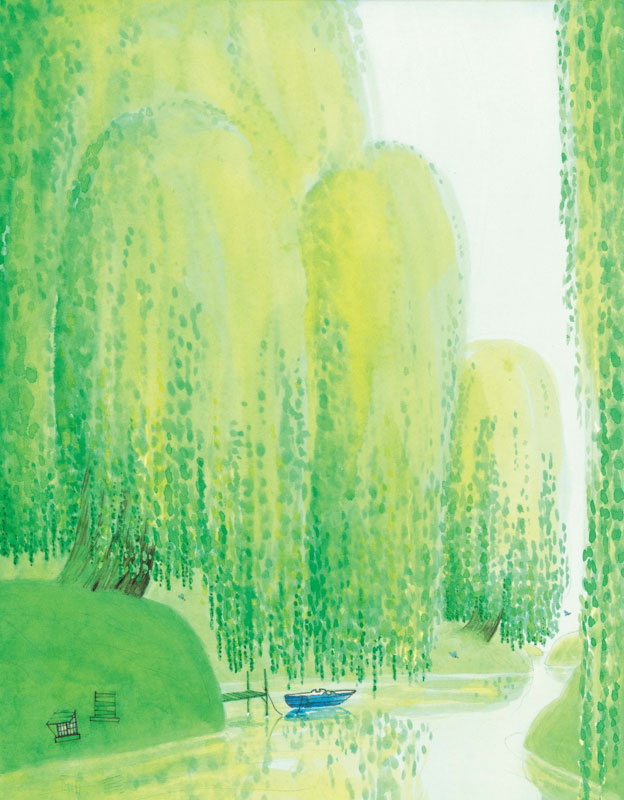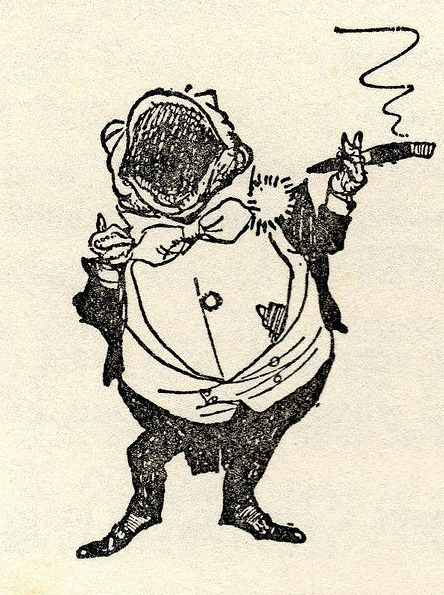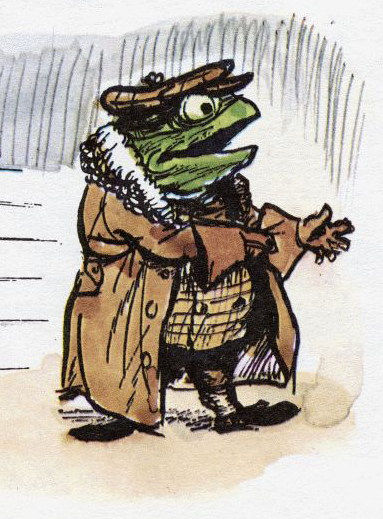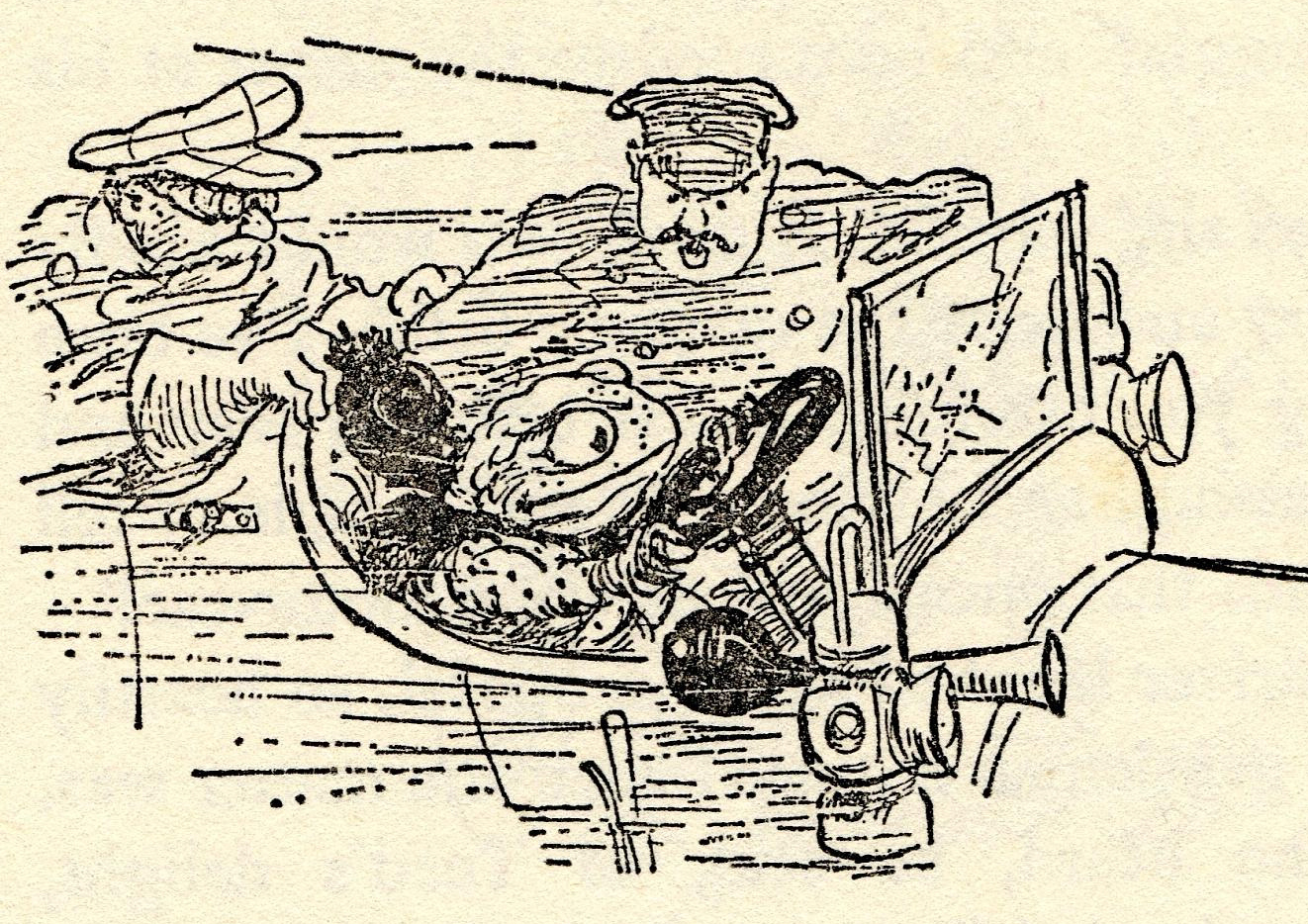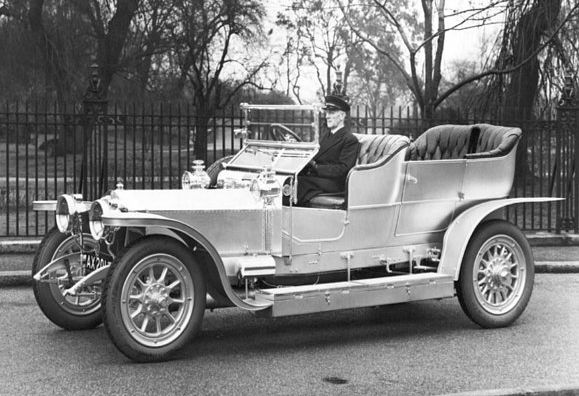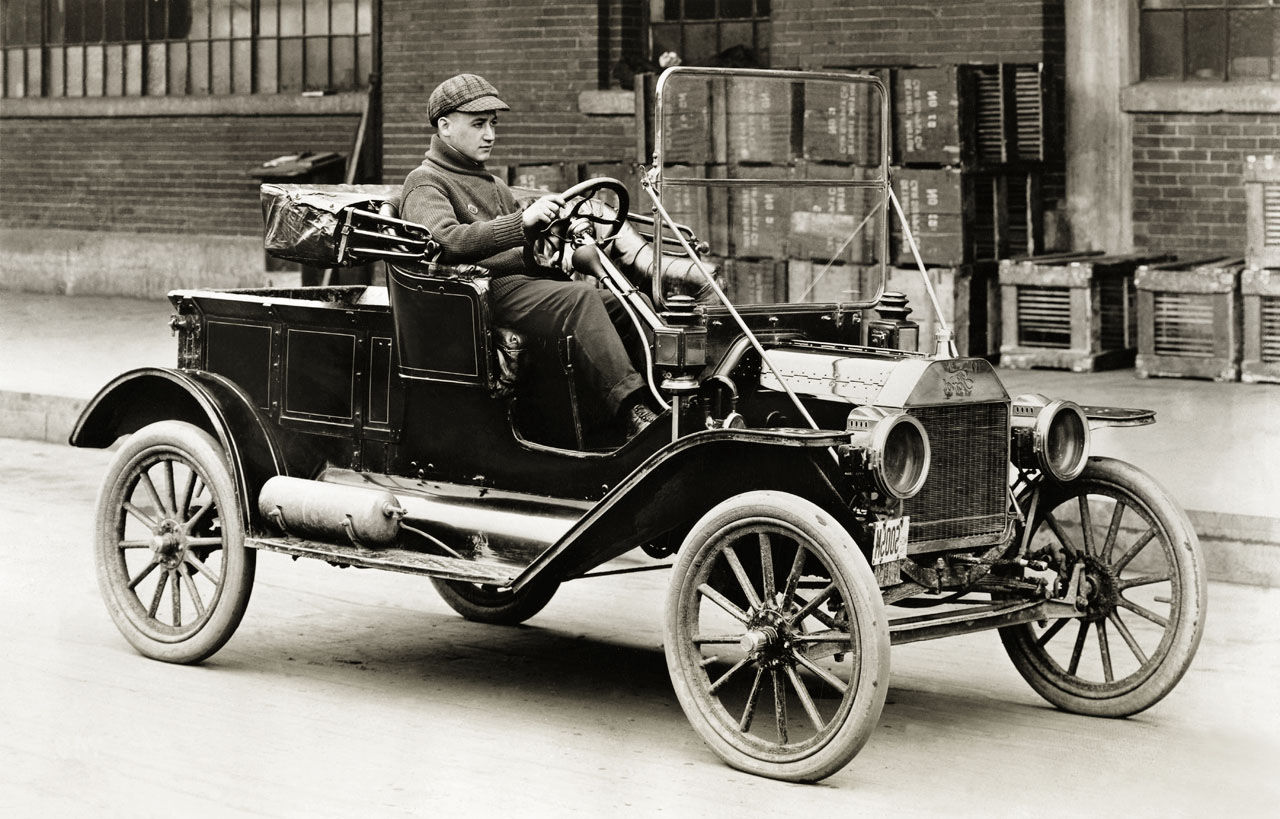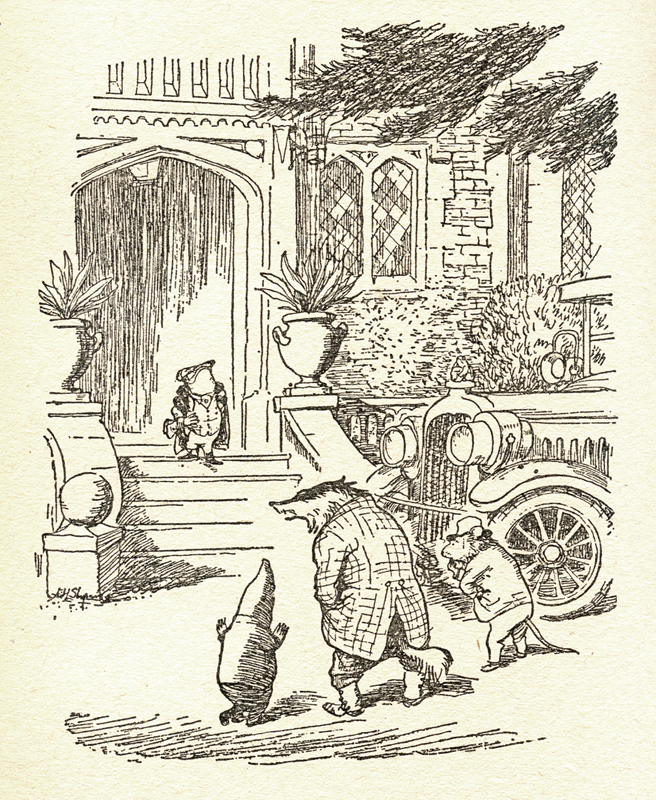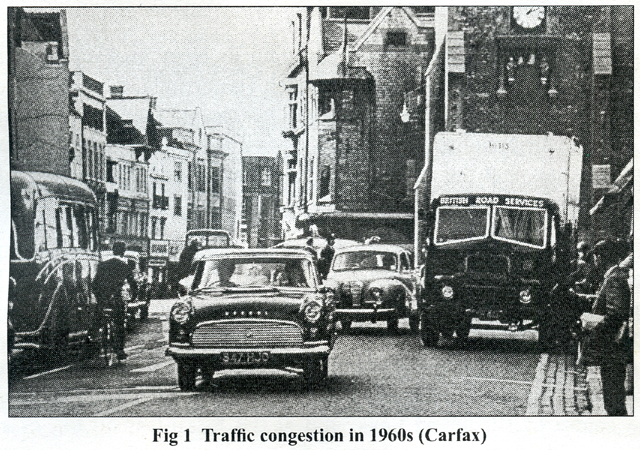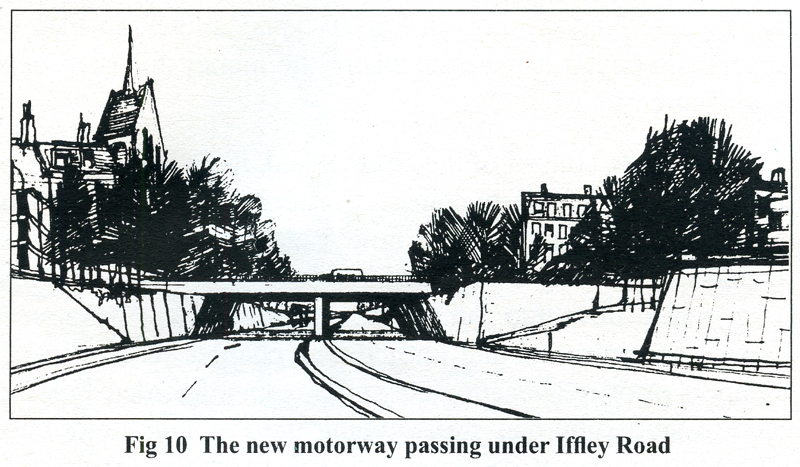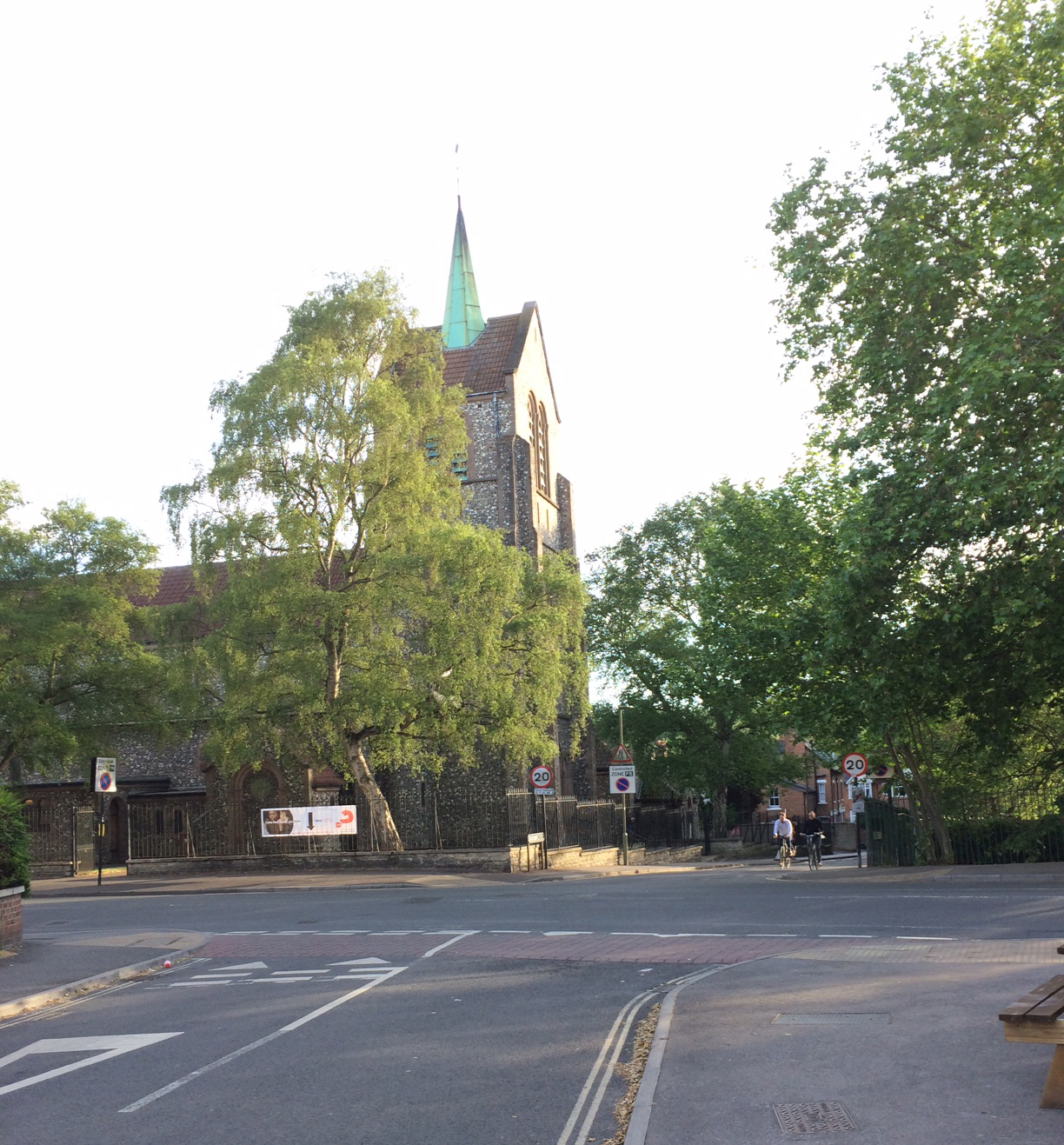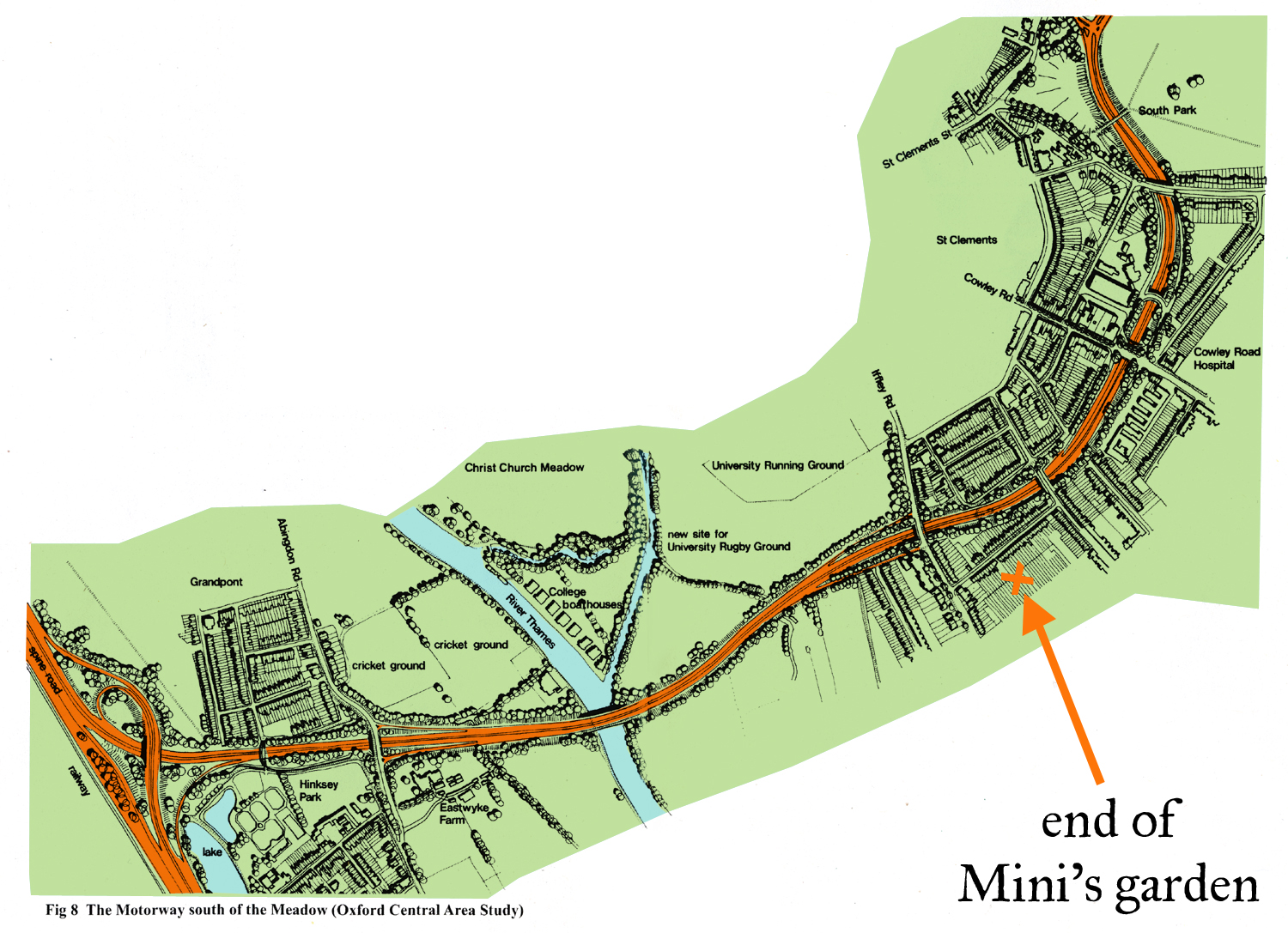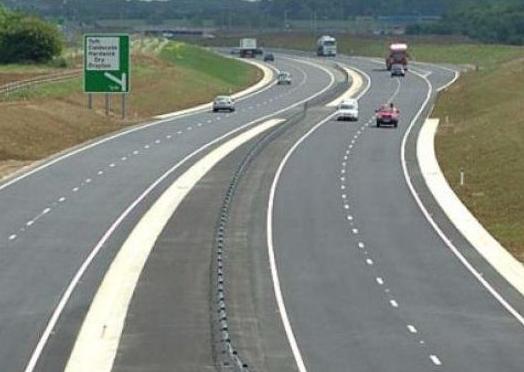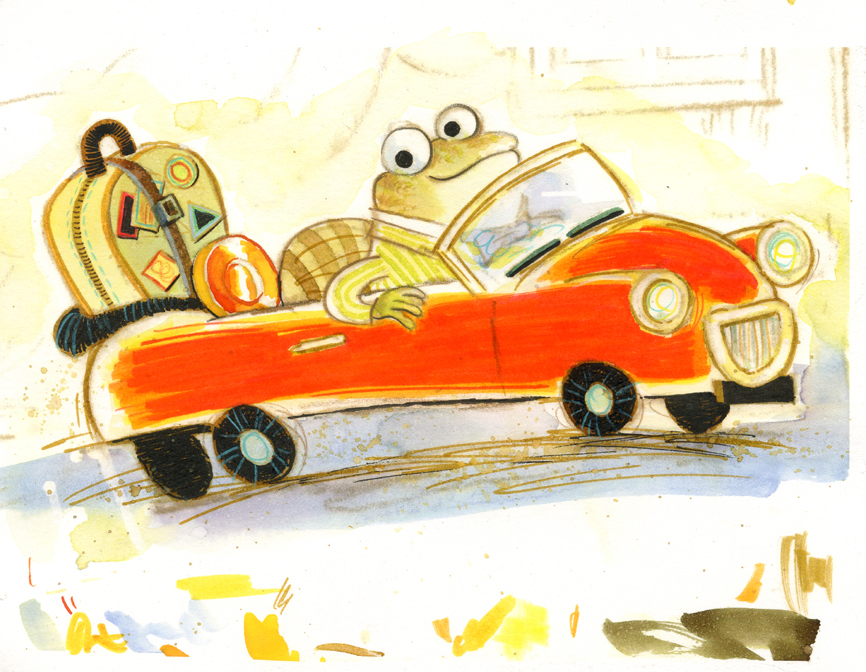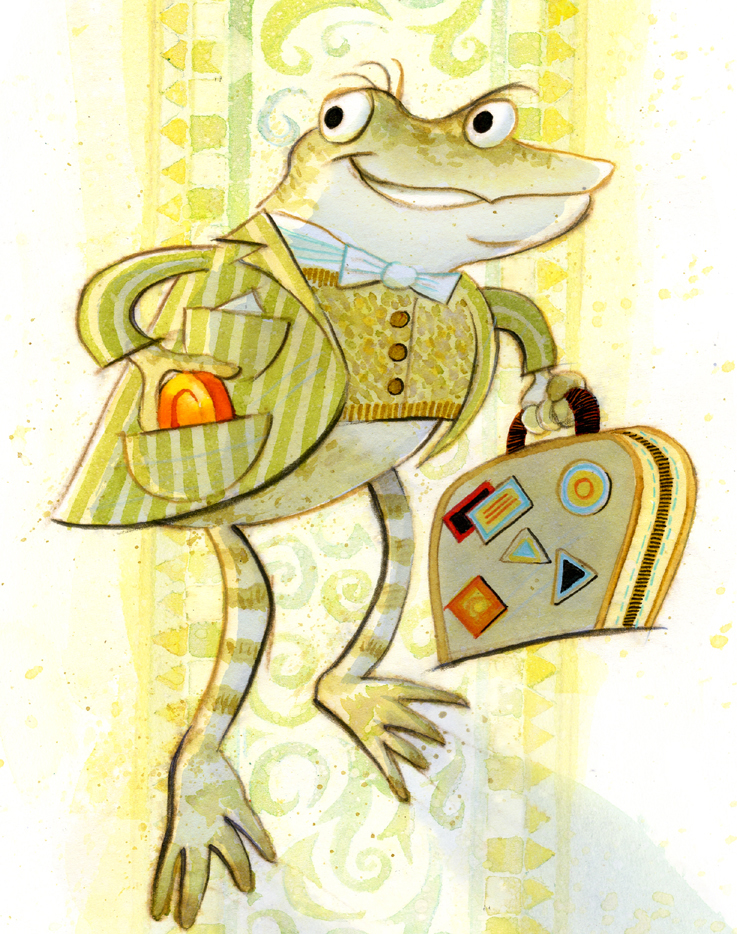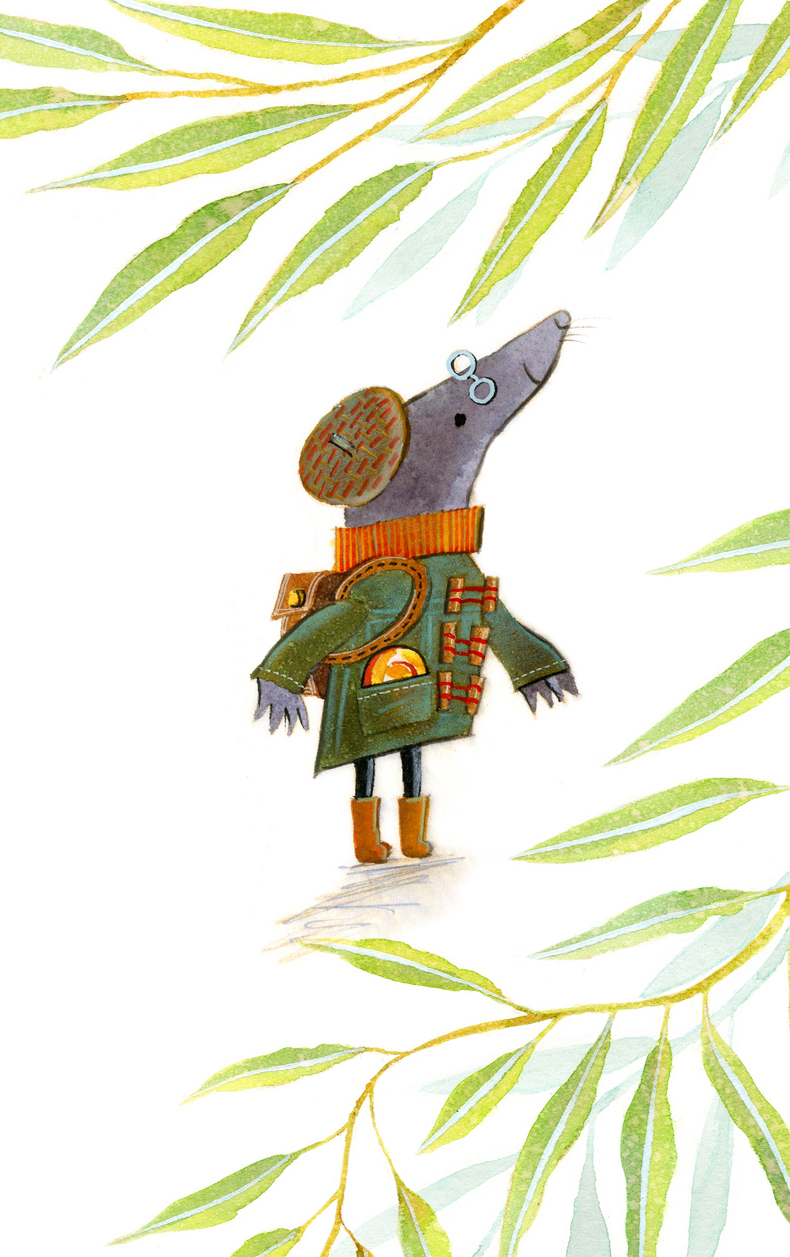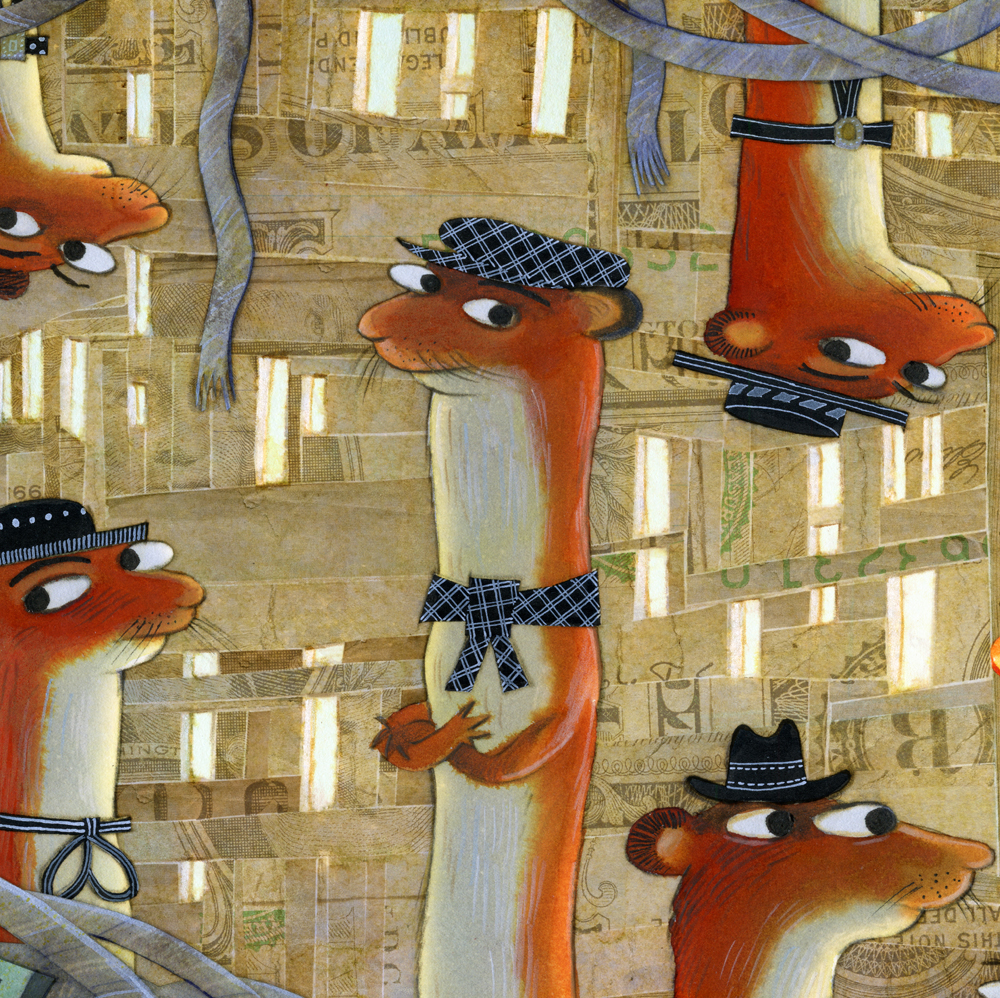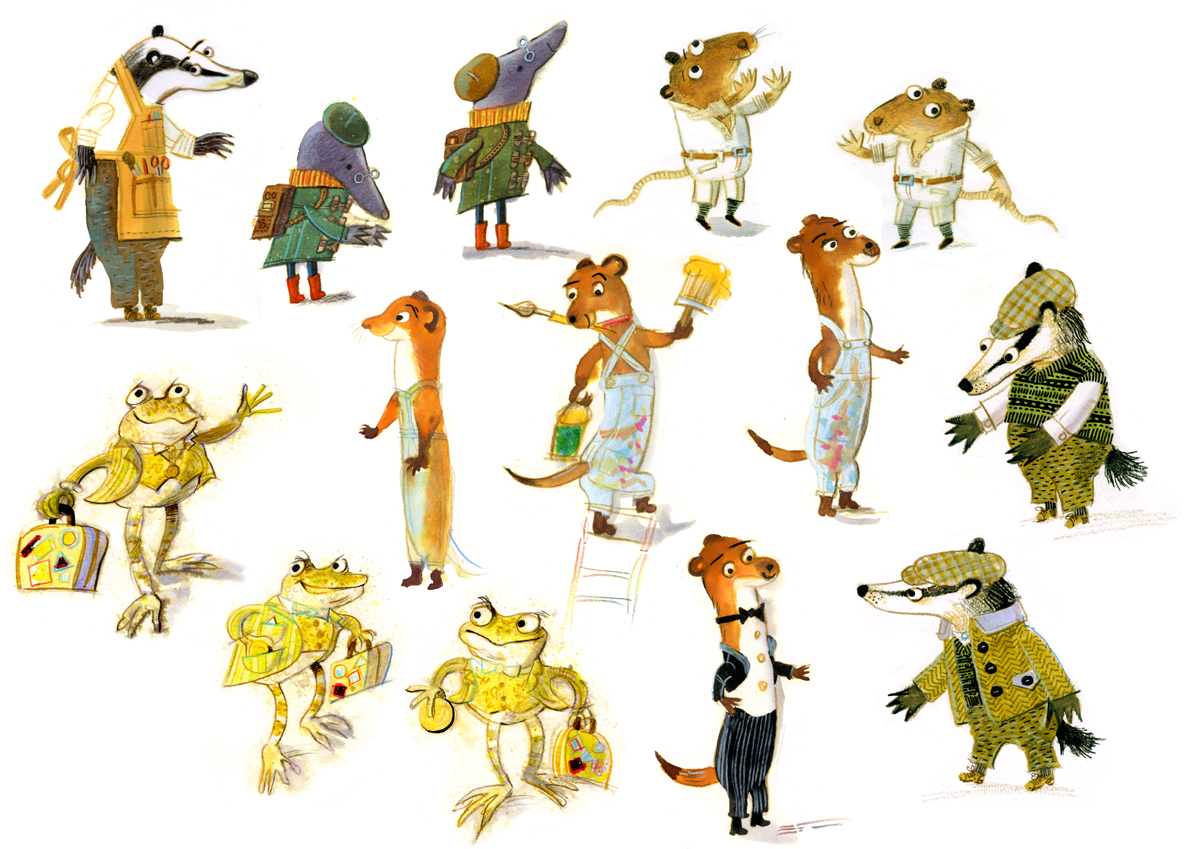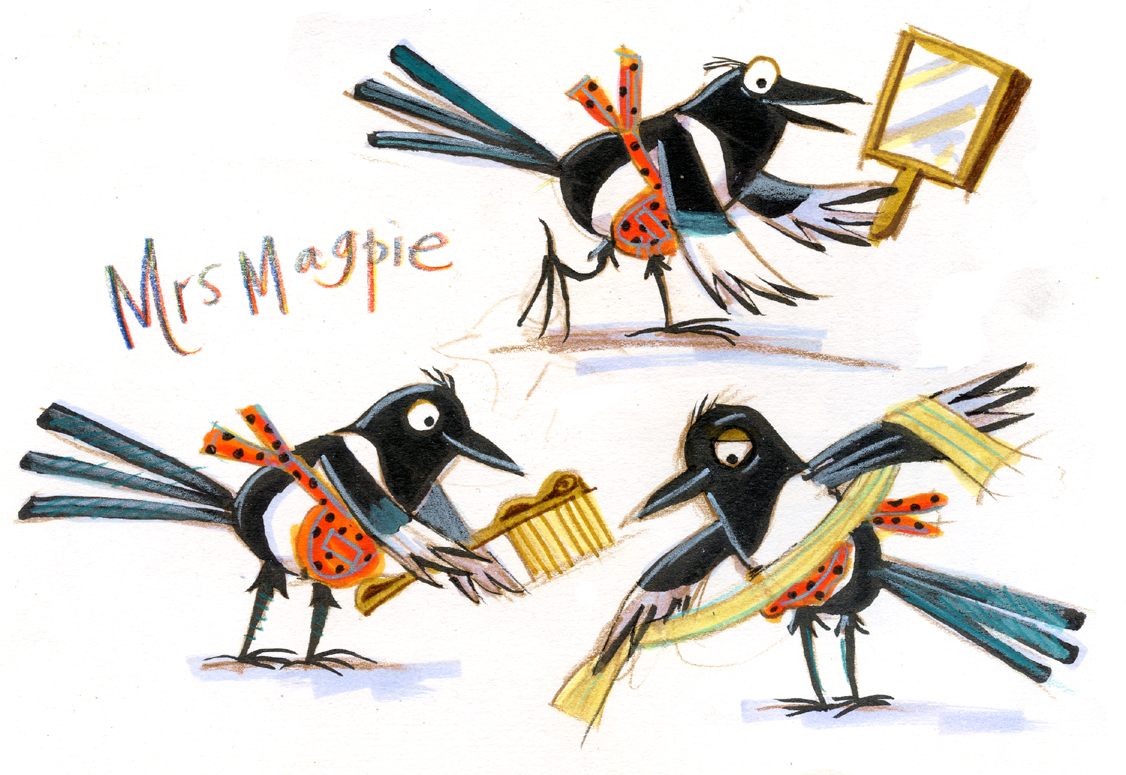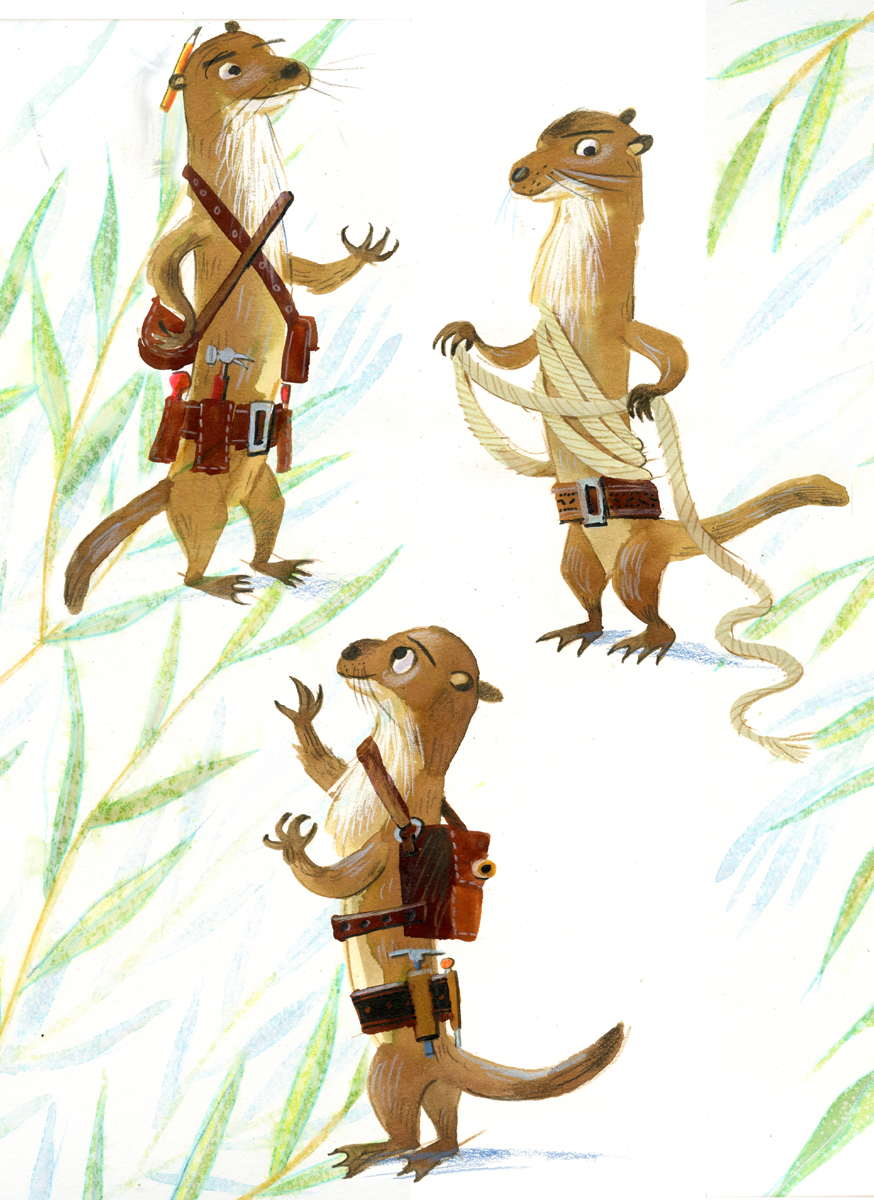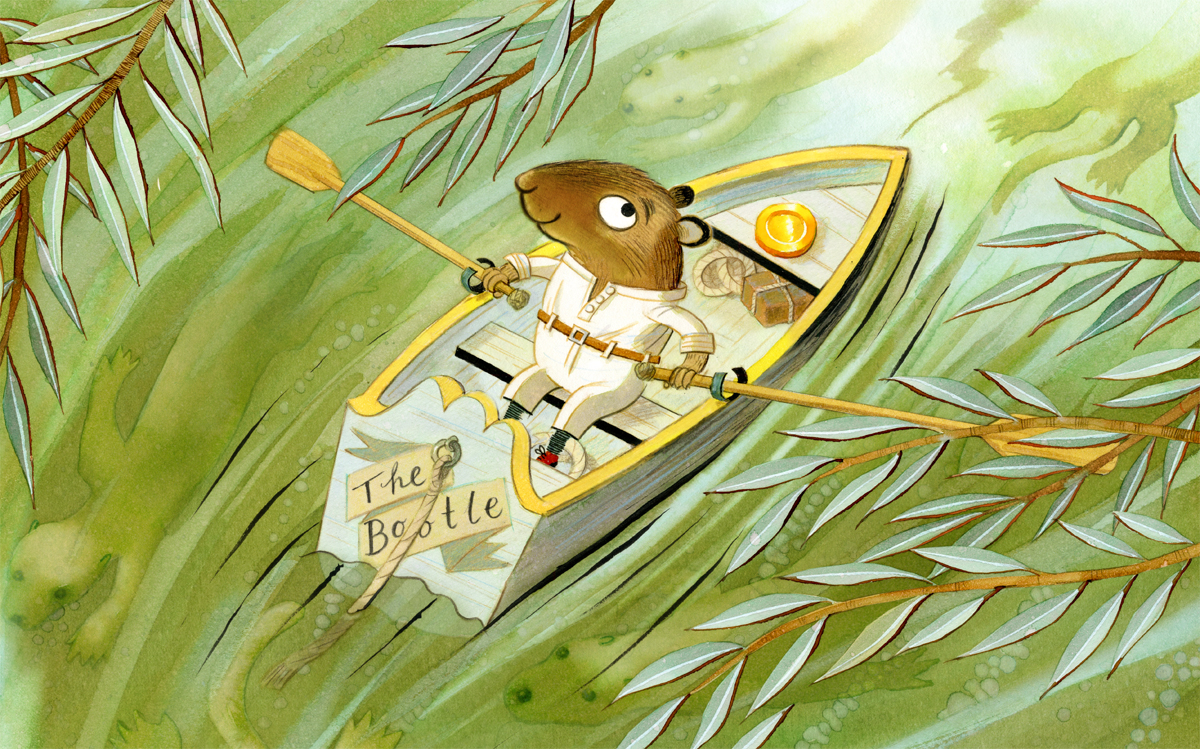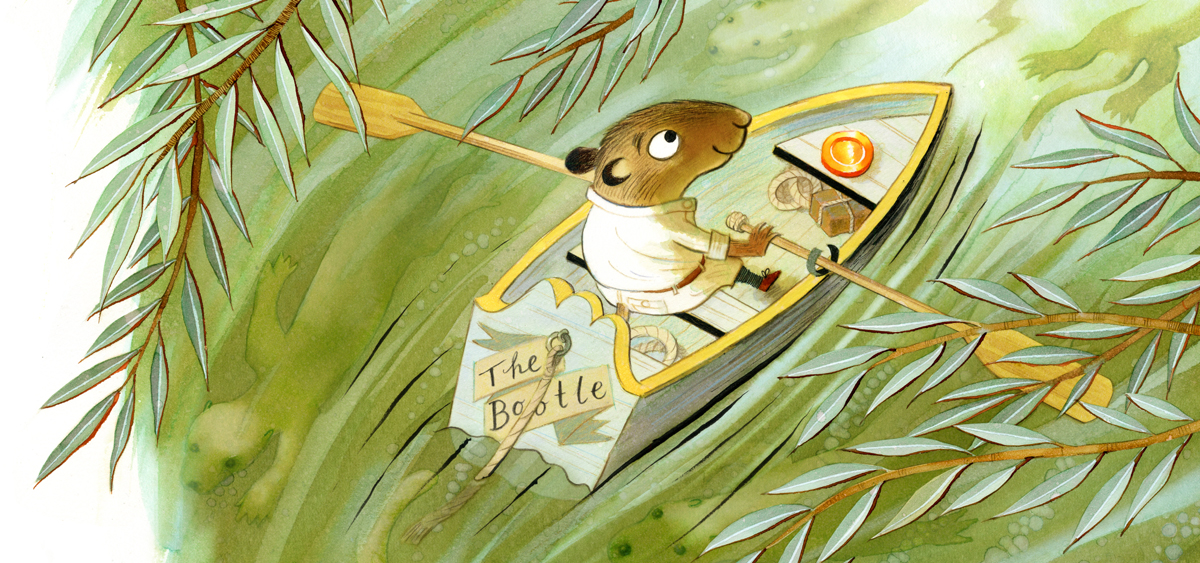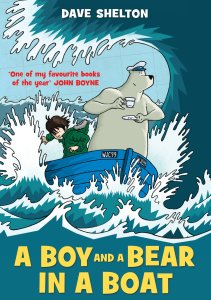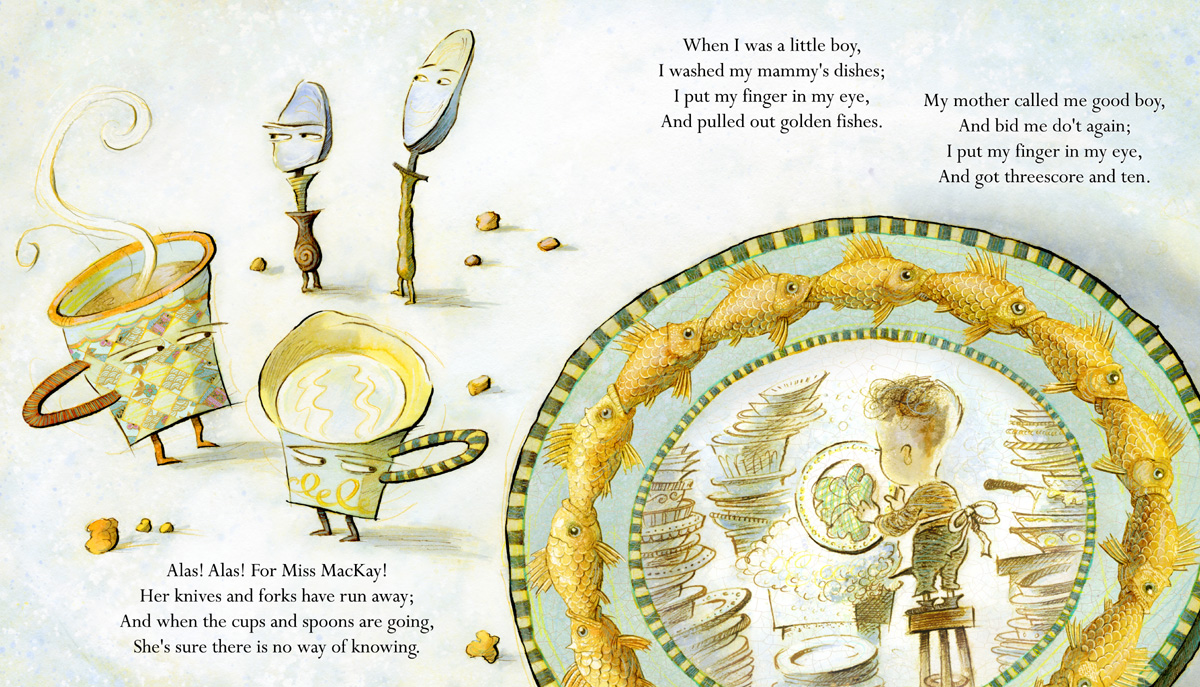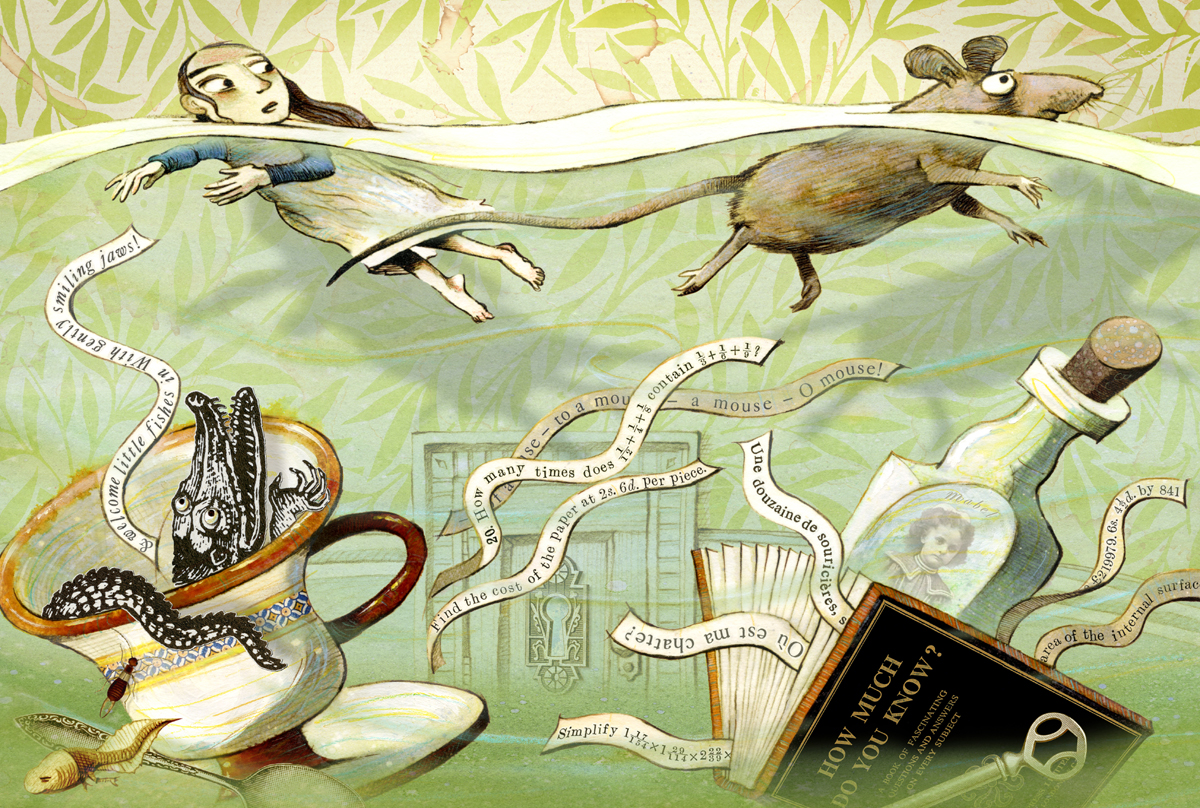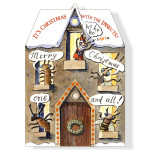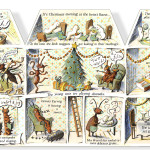This post first appeared on Picture Book Den’s Blogspot 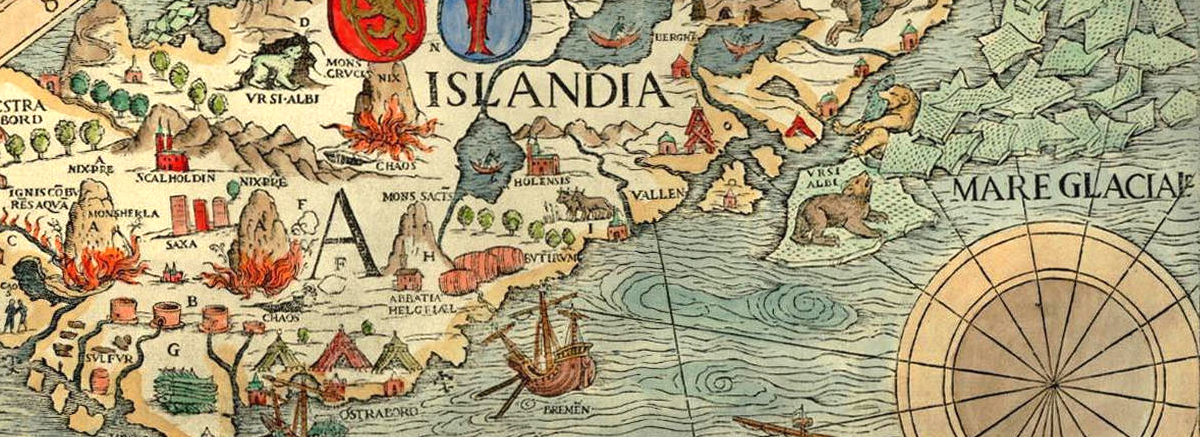 My First Maps
My First Maps
My first map-love as a child was my grandfather’s Reader’s Digest Atlas of the World. 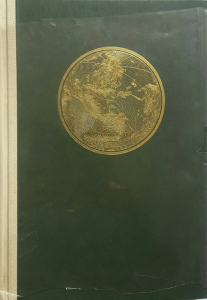 Now I own it, but I used to just visit it at my Grandpa’s house. It was really big, big enough for a small child to be lost in, and my grandpa Noel Grey had inscribed his initials NWG on all the places he had visited, prospecting for oil I suspect. Here he is at large around South America.
Now I own it, but I used to just visit it at my Grandpa’s house. It was really big, big enough for a small child to be lost in, and my grandpa Noel Grey had inscribed his initials NWG on all the places he had visited, prospecting for oil I suspect. Here he is at large around South America.
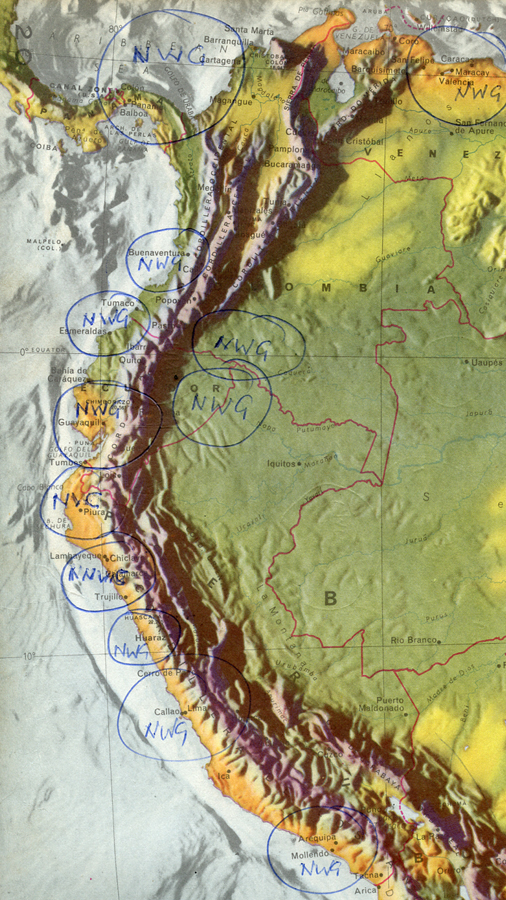
Here’s a photo he took of Ernest Hemingway with an enormous marlin – apparently they went fishing together. 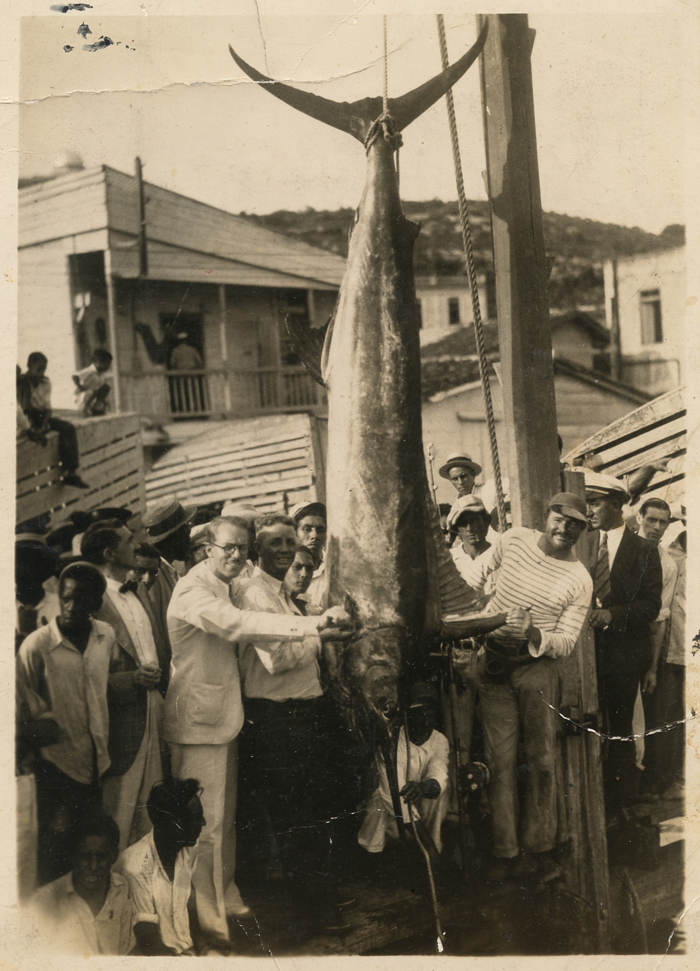 On one map he has urgently written GOLD, somewhere along the Amazon, in Peru.
On one map he has urgently written GOLD, somewhere along the Amazon, in Peru. 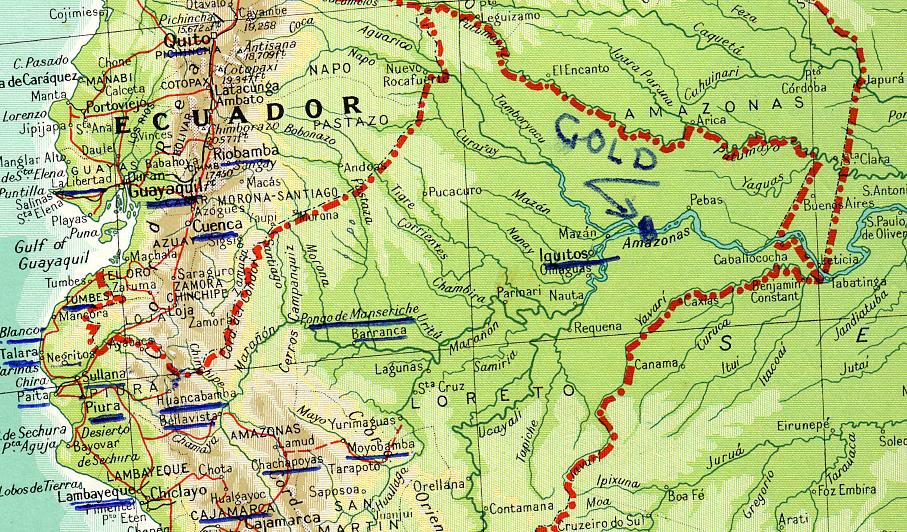
There’s a bit of a diagram too.
I started writing this post before the fires in the Amazon had beome the terrifying news they are now. From this perspective my Grandfather’s charting of ‘GOLD’ is a bit bitterly ironic; anyone with any sense now knows that the most precious treasure to be found in the Amazon is the rainforest itself
Maps of Discovery, Power and Plunder
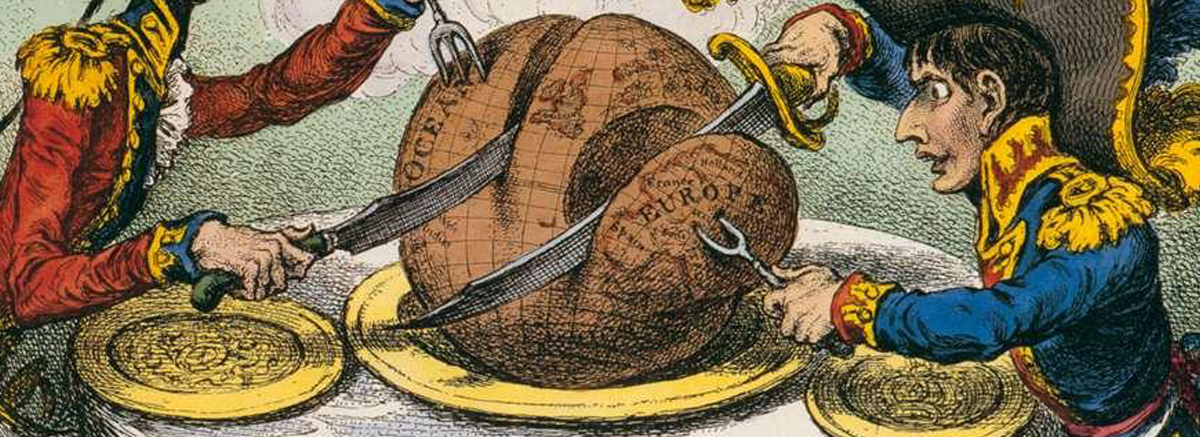
A map is a place to roam about in the imagination. A map is a record of the discovered and the undiscovered – terra incognita. A map is a plan for plundering, or a diagram of how to carve the world up, a record of ownership.
Here is the Carta marina, a wallmap of Scandinavia, by Olaus Magnus. It is the first map of the Nordic countries to give details and place names, initially published in 1539.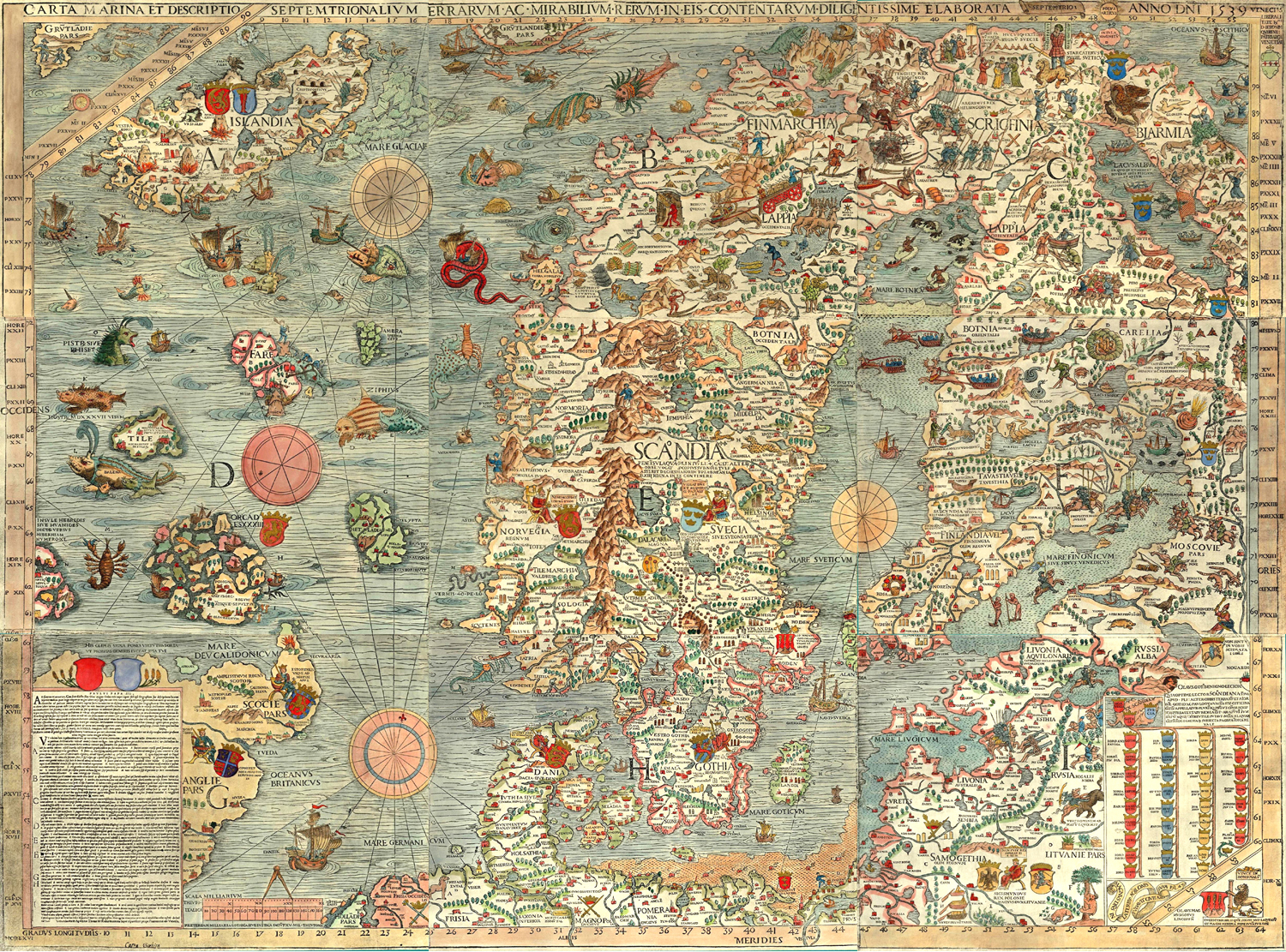
It seems to be awash with splendid mythical beasts. Did the map-maker think they were real, or was drawing the map of the far-away giving them permission to invent the most bizarre creatures they could concoct? Creatures include a literal sea-cow and sea-unicorn, whales with flowing tresses, a sea-elephant or Rosmarus and a Polypus which looks like a giant lobster. But it looks like Magnus was trying to depict what was really there – the land animals are fairly realistic, and many of the sea-creatures could be reinventions of existing ones: the sea unicorn: a narwhal, the Rosmarus: a walrus, the Polypus perhaps an octopus. Because they’re water beasts they are hard to get the measure of without diving equipment. Here are a selection of map-beasts:
You can explore the monsters here:
‘I wisely started with a map and made the story fit,’ JRR Tolkien once wrote.
In older children’s books, a map may well be the only illustration. The map is often a charting of the story journey.
When inventing the Hobbit story JRR Tolkein started with drawing Thror’s map.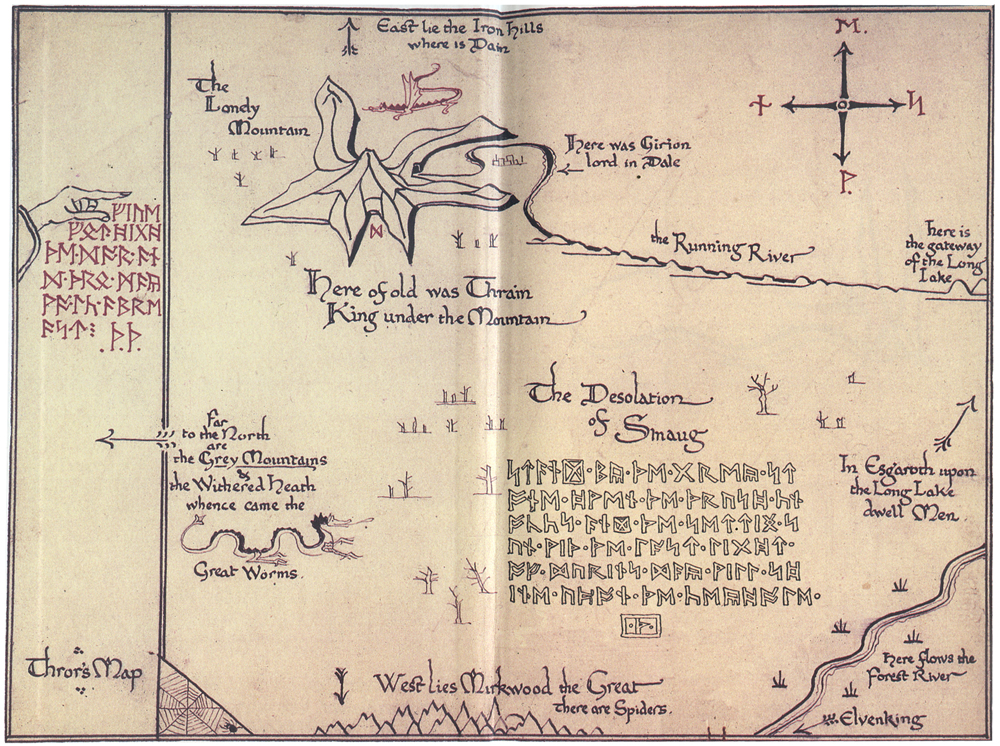
Drawing the map was part of the process of creating the story.
Here’s the map from Winnie the Pooh, drawn by Christopher Robin, with a bit of help from Ernest Shepard,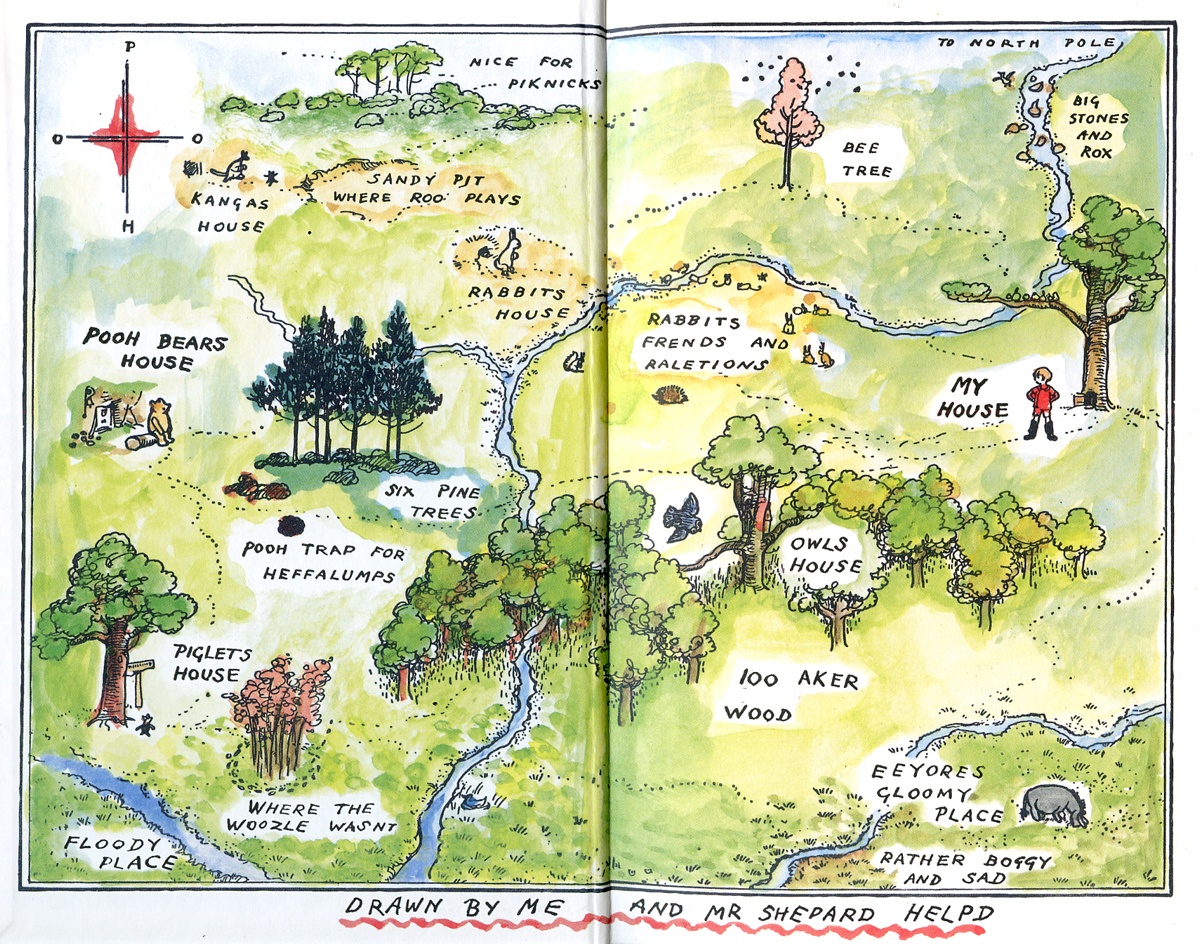
and the map from the beginning of the Narnia book of the Horse and his Boy, mostly desert (by Pauline Baynes.)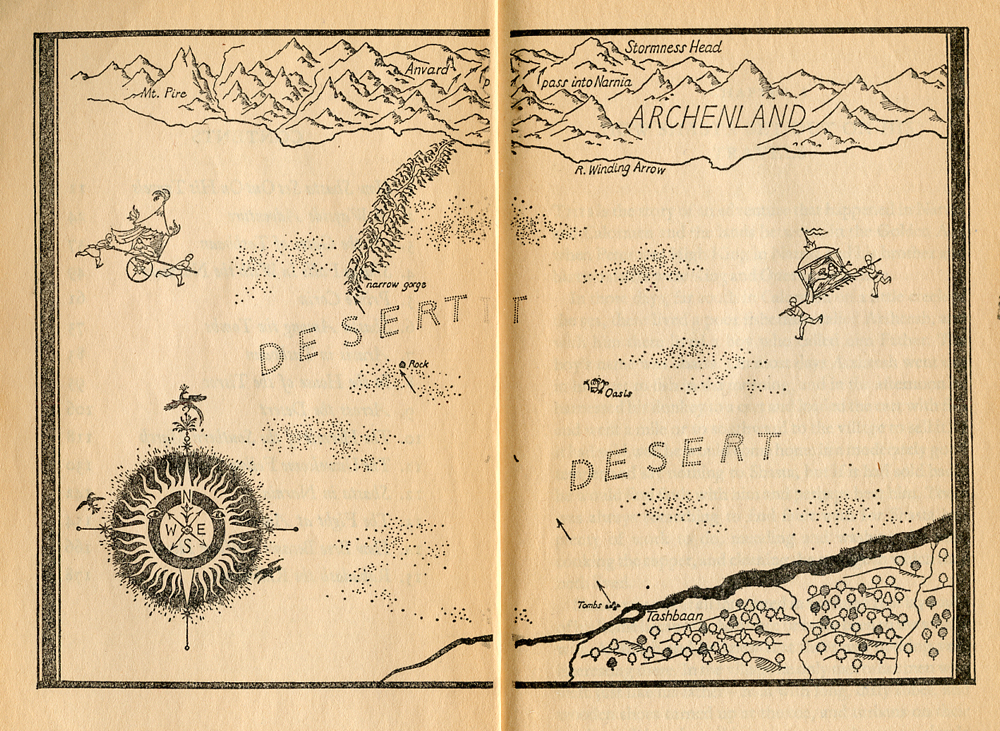
As it was sometimes the only picture in the book I would return to the map again and again, and trace my protagonist’s journey and mull over the places on the way.
And maps lend a touch of reality – a promise that the story may take you to real places.
When Gulliver’s Travels by Jonathan Swift was published in 1726 it was a roaring success but some did not realise it was fantasy.
“It is full of improbable lies, and, for my part, I hardly believe a word of it” exclaimed an eminent bishop. The Duchess of Marlborough was said to be ‘in raptures at it; she says she can dream of nothing else since she read it.’ A tale circulated about one old gentleman who, after reading the book, was alleged to have gone immediately to his atlas to search for Lilliput.
Here’s my map for Money Go Round by Roger McGough – as this book is deep in Wind in the Willows territory I had to start with communing with EH Shepard’s Willows map.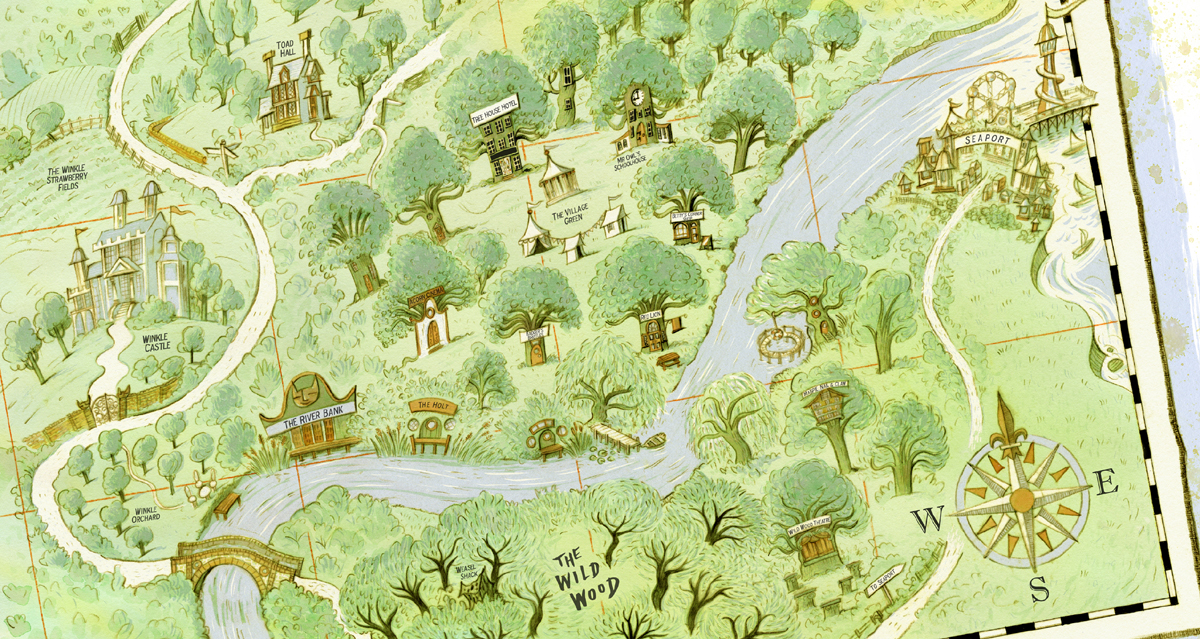
Picture Book Story Maps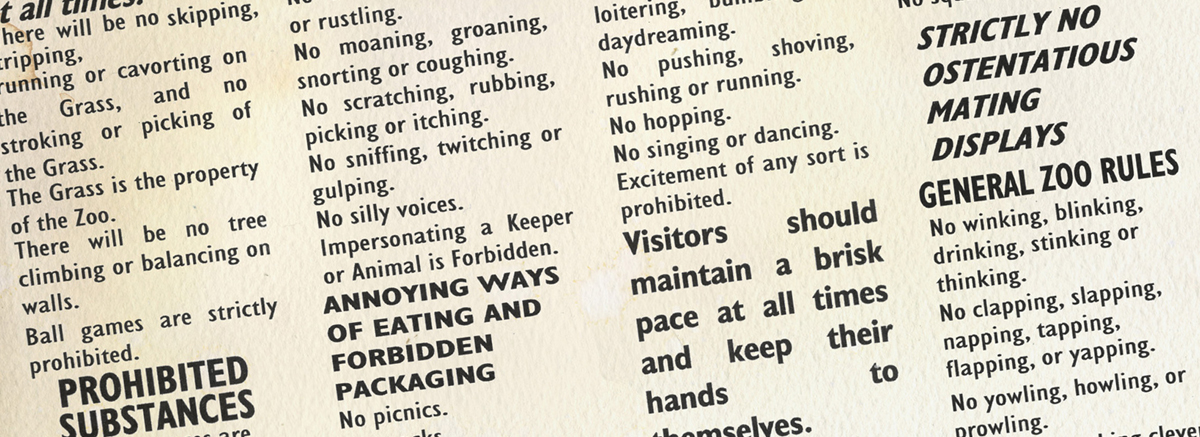
Moving to more picture book territory, a map can be a journey or a map of characters or events.
Here’s Dixie O’Day’s Map from Dixie O’Day in the Fast Lane by Shirley Hughes and Clara Vulliamy.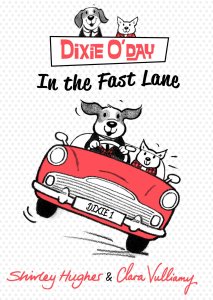
It is used by Dixie in the story and we can find where every event happens in an extremely satisfying way
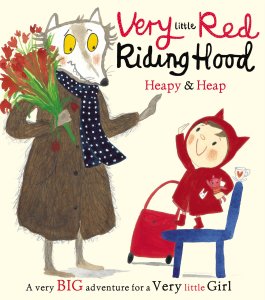 .From a map of events to a map of characters: here is the map from Very Little Red Riding Hood by Teresa Heapy and Sue Heap – the places are the people.
.From a map of events to a map of characters: here is the map from Very Little Red Riding Hood by Teresa Heapy and Sue Heap – the places are the people.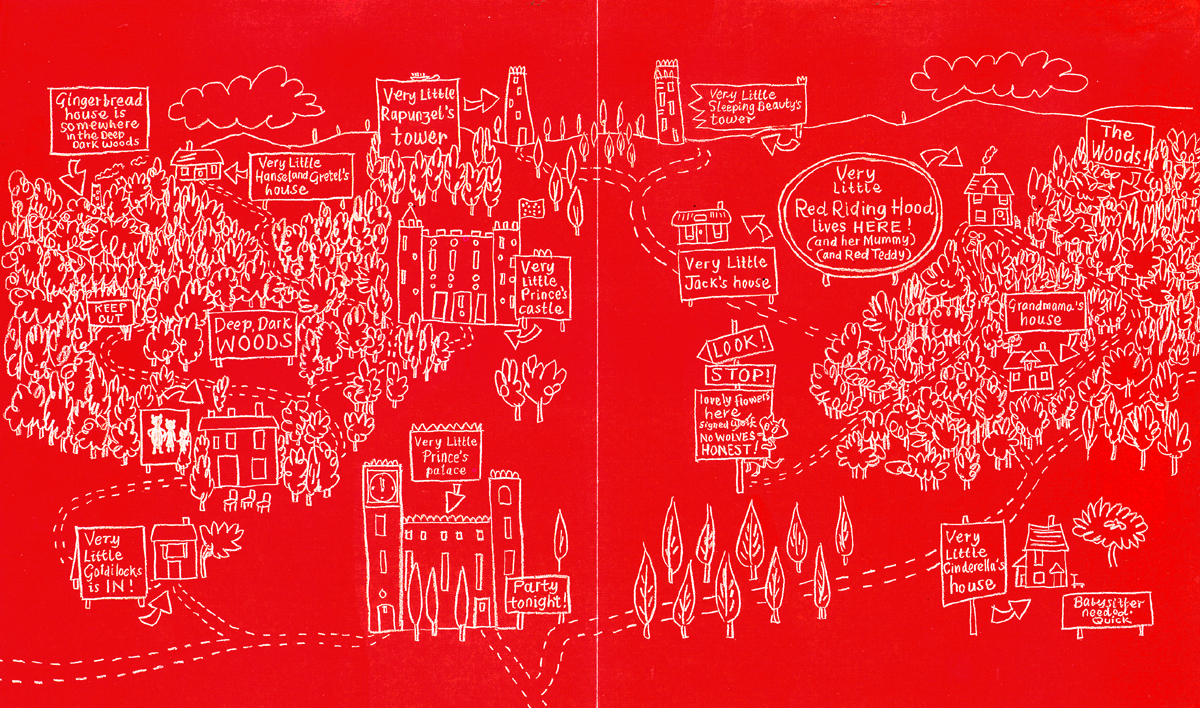
I can’t resist putting in these fresh and lovely animated spreads of the poor wolf getting more than it can deal with from Very Little Red.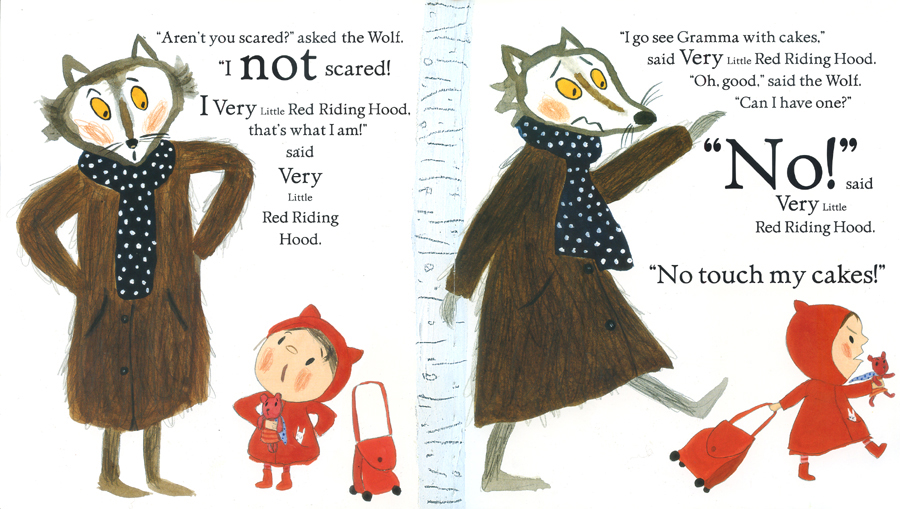
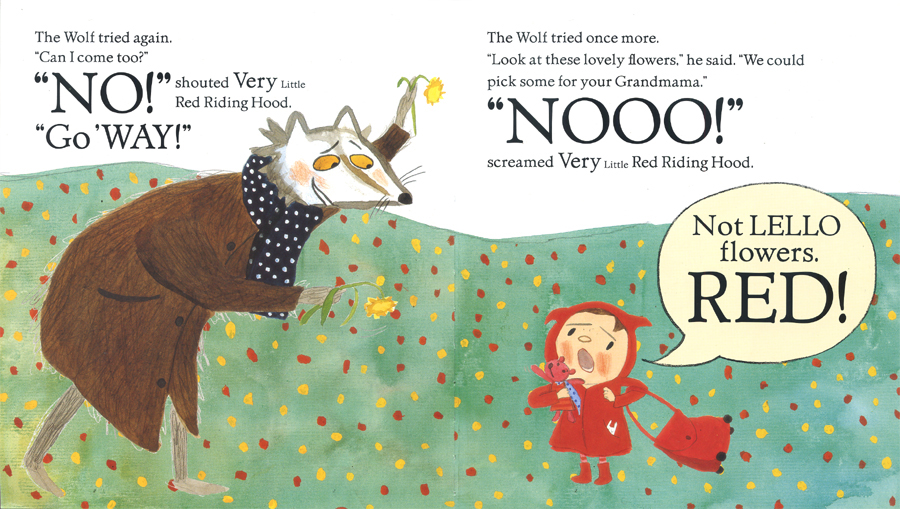
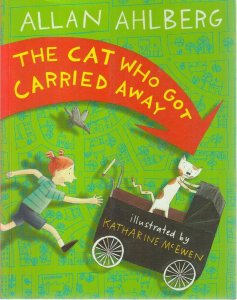 In The Cat Who Got Carried Away by Allan Ahlberg and Katharine McEwen there are three very important maps.
In The Cat Who Got Carried Away by Allan Ahlberg and Katharine McEwen there are three very important maps.
Here’s the first one.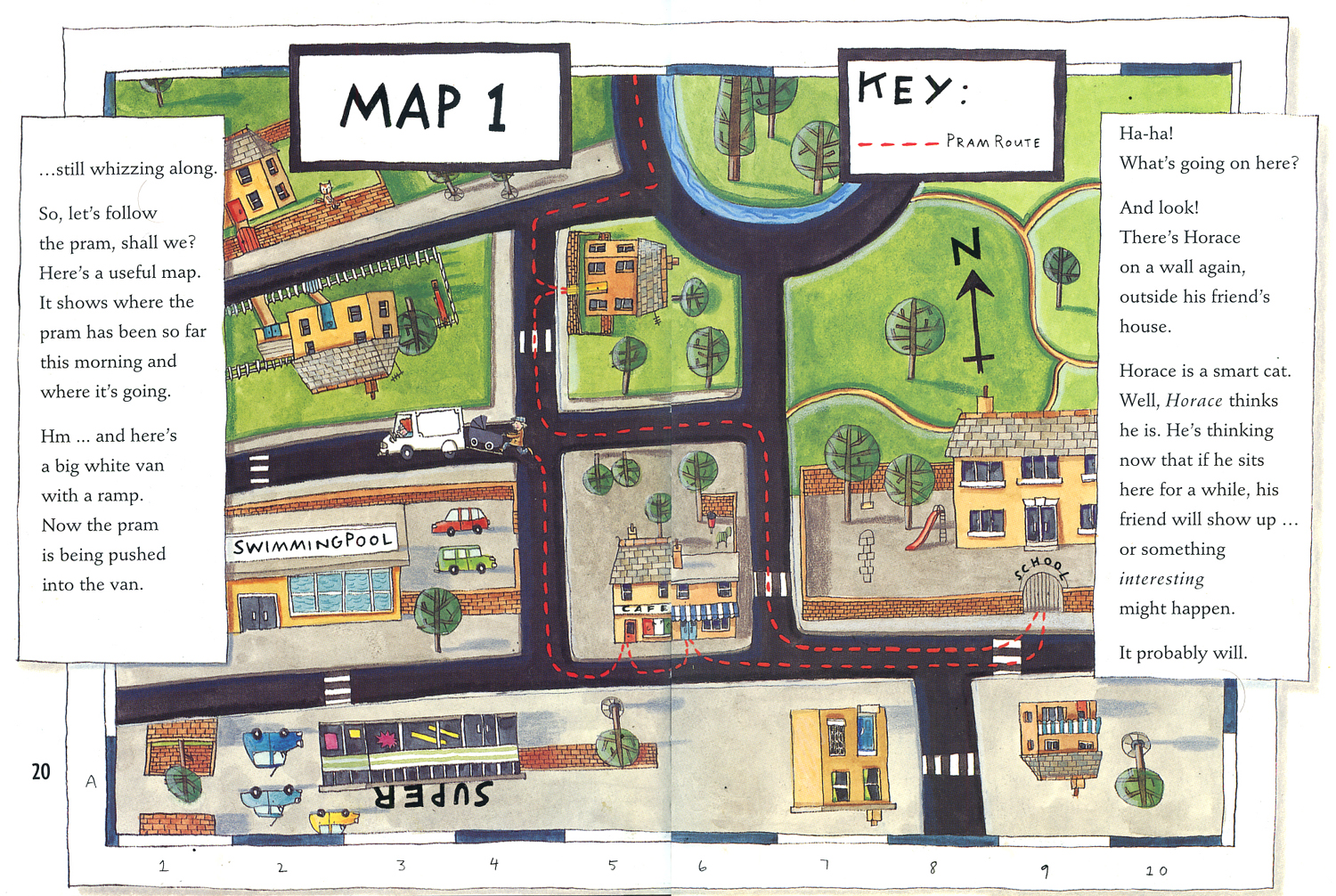
And, oh, how delicious – we can see the cars and the characters and the shady old geezer with the suspicious pram and Horace the cat. This is a useful map of a particular moment, which shows exactly where the pram is, and white van skulduggery, and the impending fate of Horace the cat.
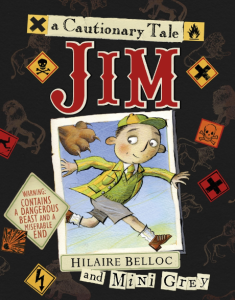 When I was making the book of Jim, the cautionary tale by Hilaire Belloc, I wanted to put in a map of the zoo where Jim meets his lion.
When I was making the book of Jim, the cautionary tale by Hilaire Belloc, I wanted to put in a map of the zoo where Jim meets his lion.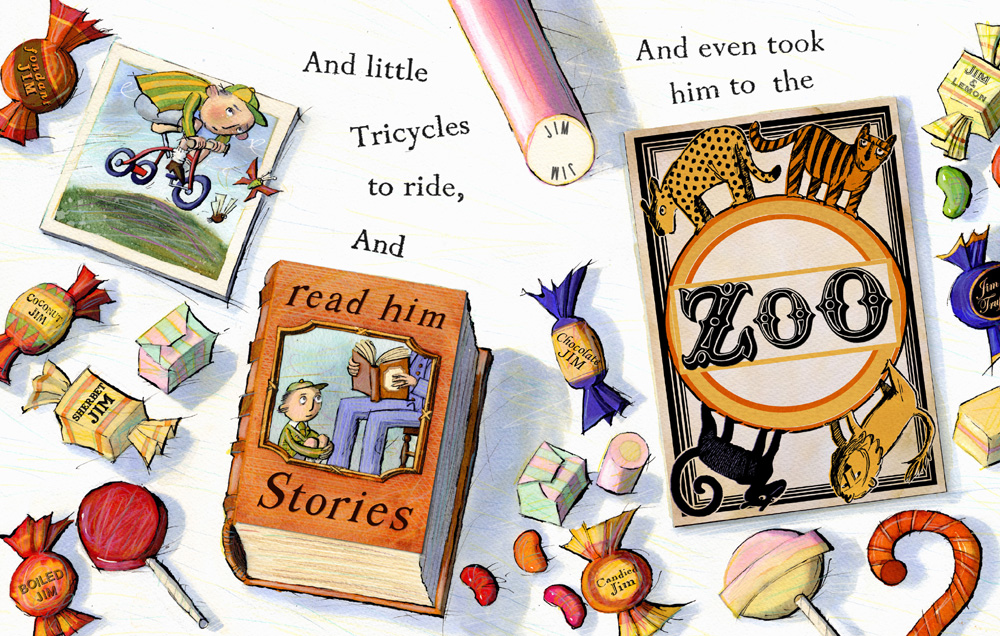
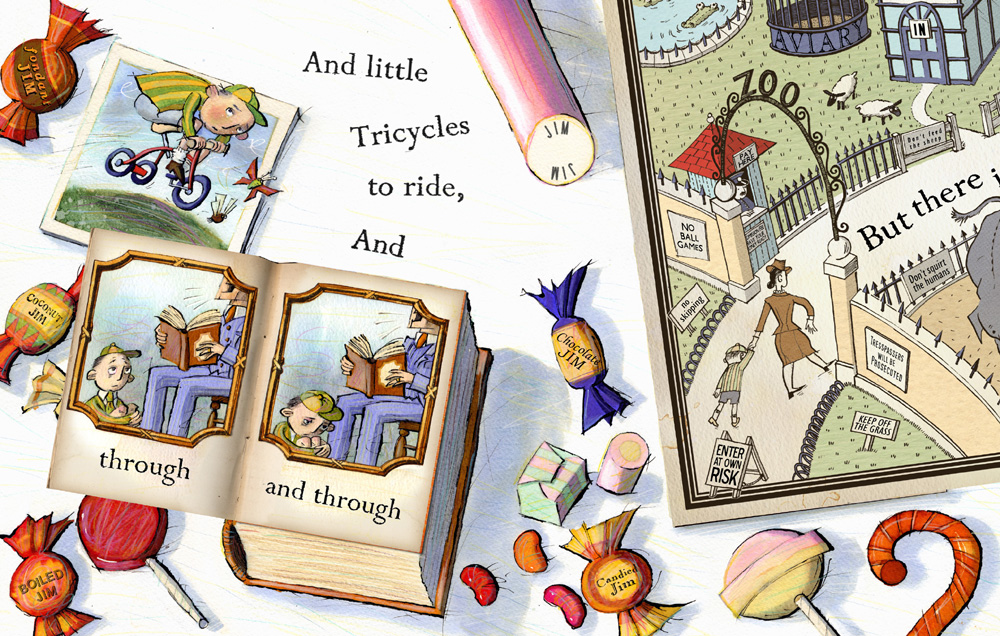
Jim has a yearning to run away, and when I was making the book there seemed to be more and more health and safety rules appearing everywhere and children seemed to be getting less and less freedom. So the Zoo Map is a map of the Safest Zoo in the World, one where everything is either shut or off-limits or prohibited.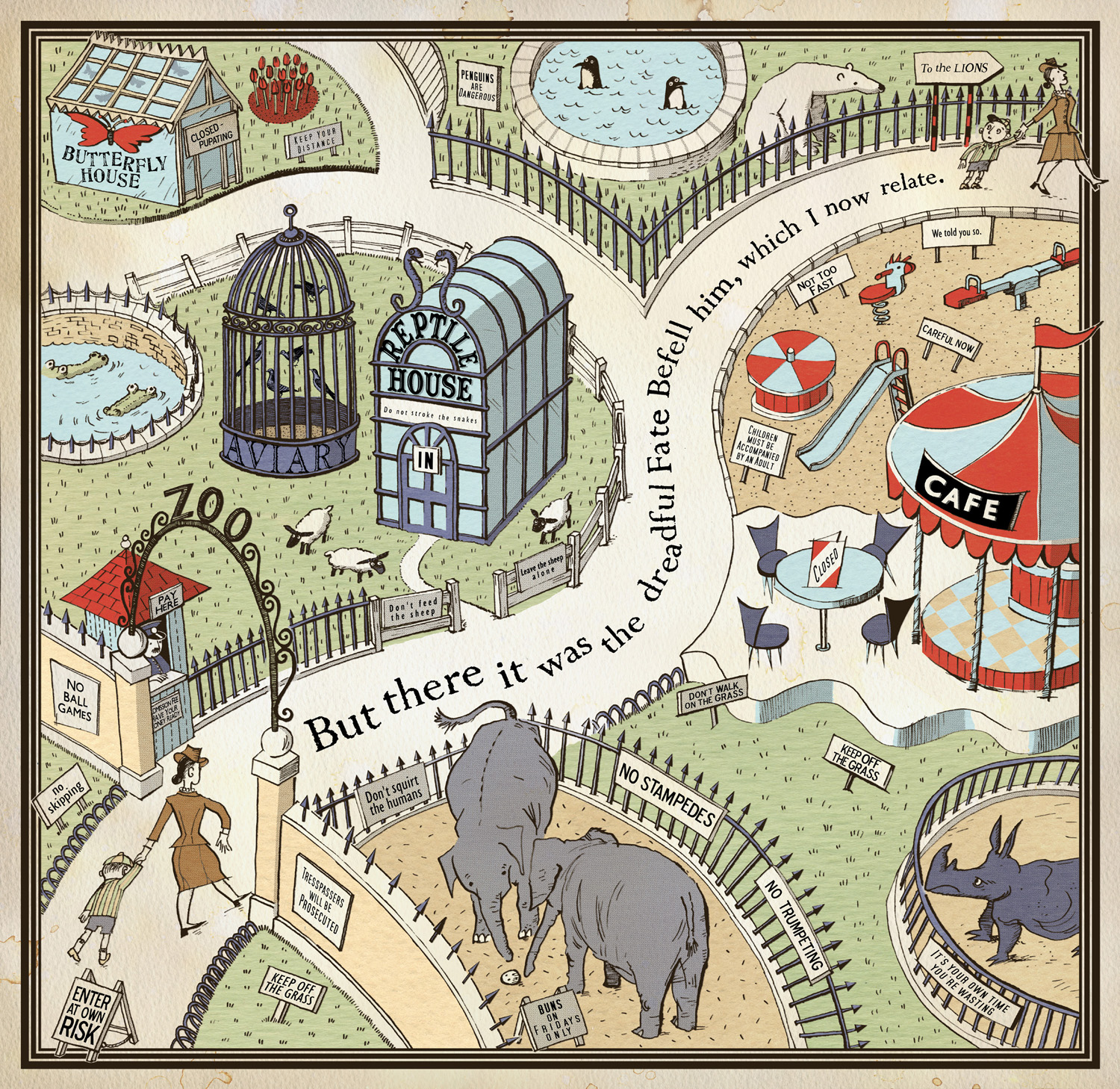
To make sure everything is completely safe, there are Zoo Rules on the back of the map.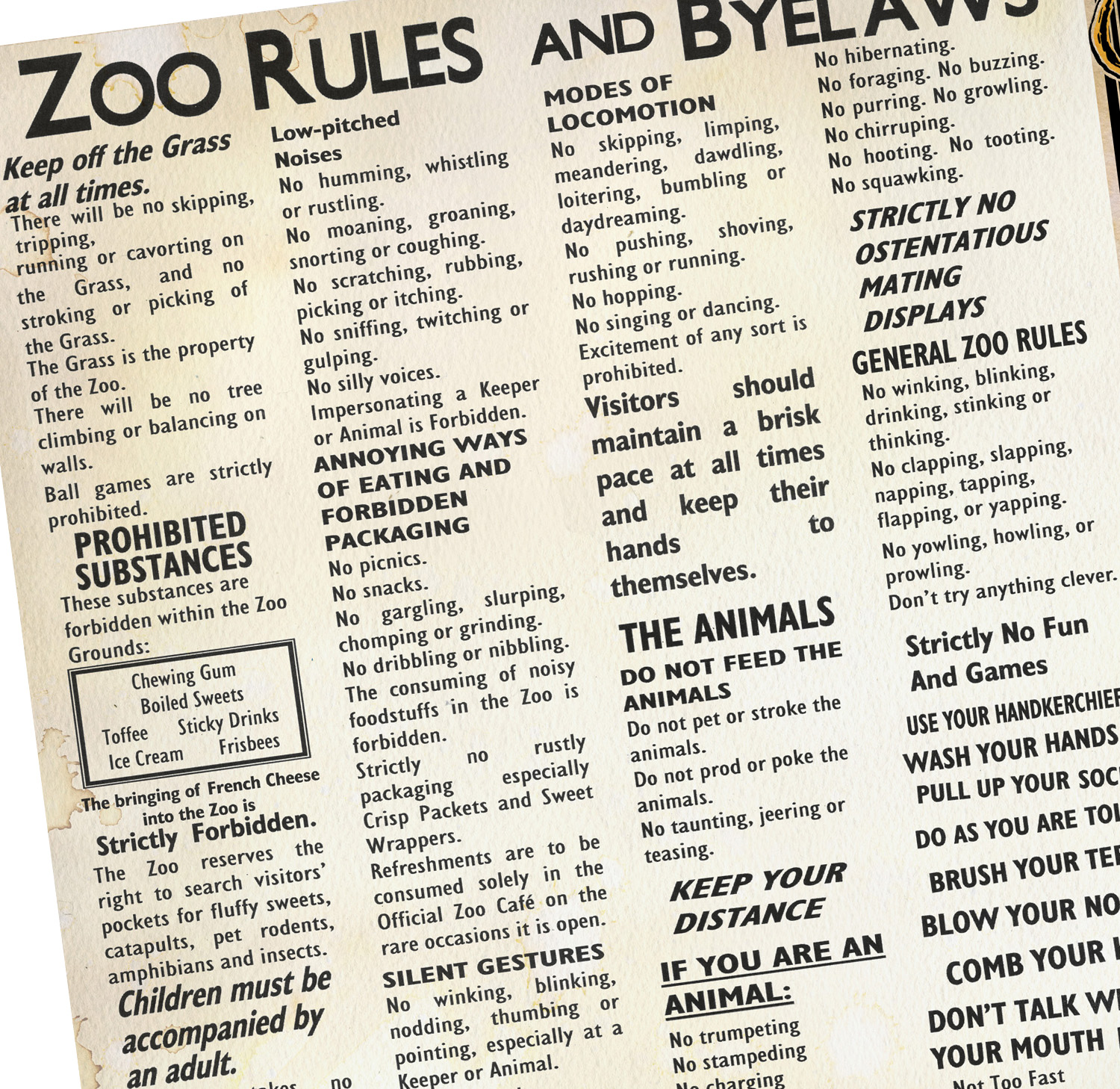
Metaphorical Maps, Maps of the Soul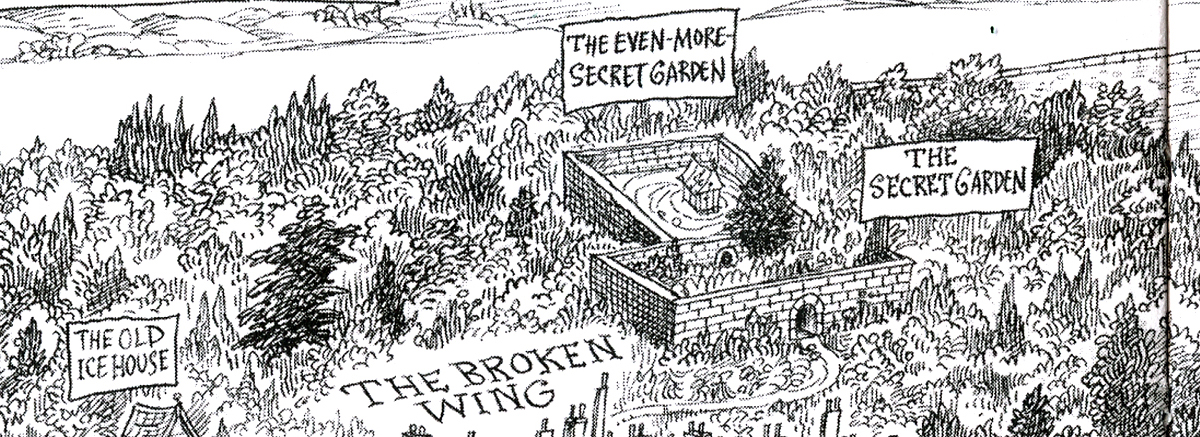
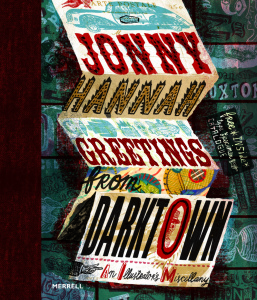 Here is Jonny Hannah’s Dark Town map from Greetings from Dark Town – complete with leviathans, Island of Profound Quotes, Sea of Impossibilities and beasts and more beasts.
Here is Jonny Hannah’s Dark Town map from Greetings from Dark Town – complete with leviathans, Island of Profound Quotes, Sea of Impossibilities and beasts and more beasts.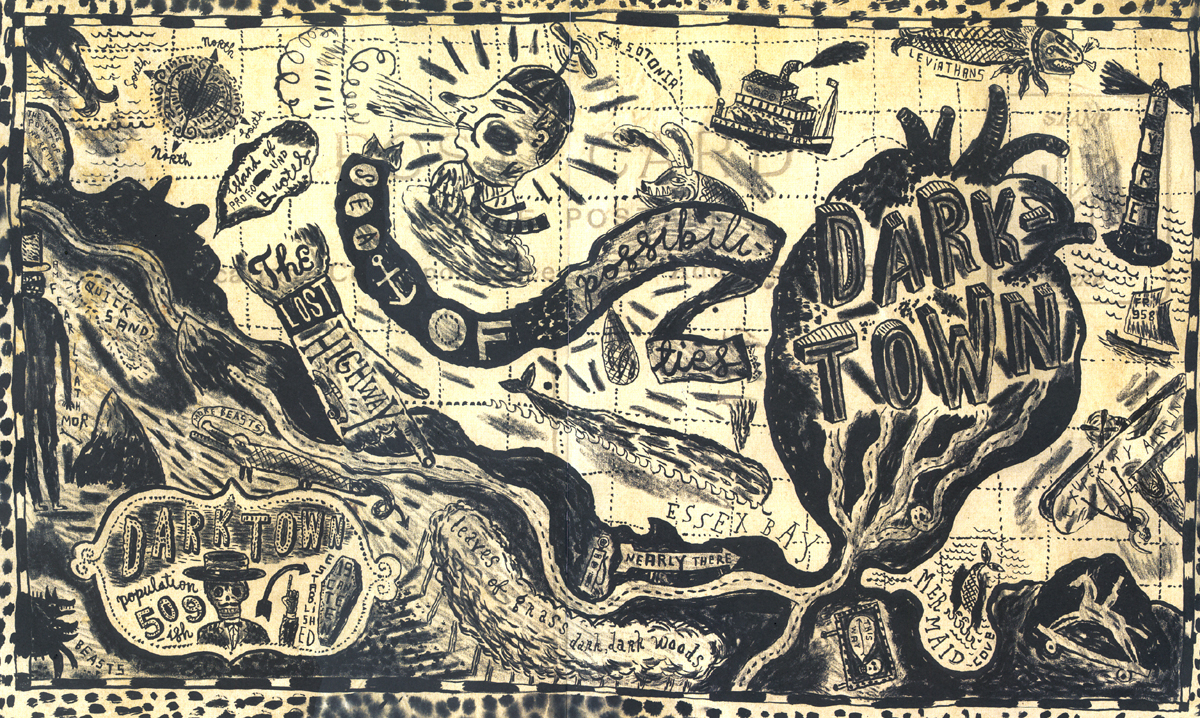
The first metaphorical map may have been for Pilgrim’s Progress, which also may have been one of the first novels (fictional prose narrative) in English. (Interestingly, other early novels include Robinson Crusoe and Gulliver’s Travels, both map-centred-adventure territory.) In Pilgrim we encounter unforgettable fictional places: the Slough of Despond, Vanity Fair, the House Beautiful, The Valley of the Shadow of Death.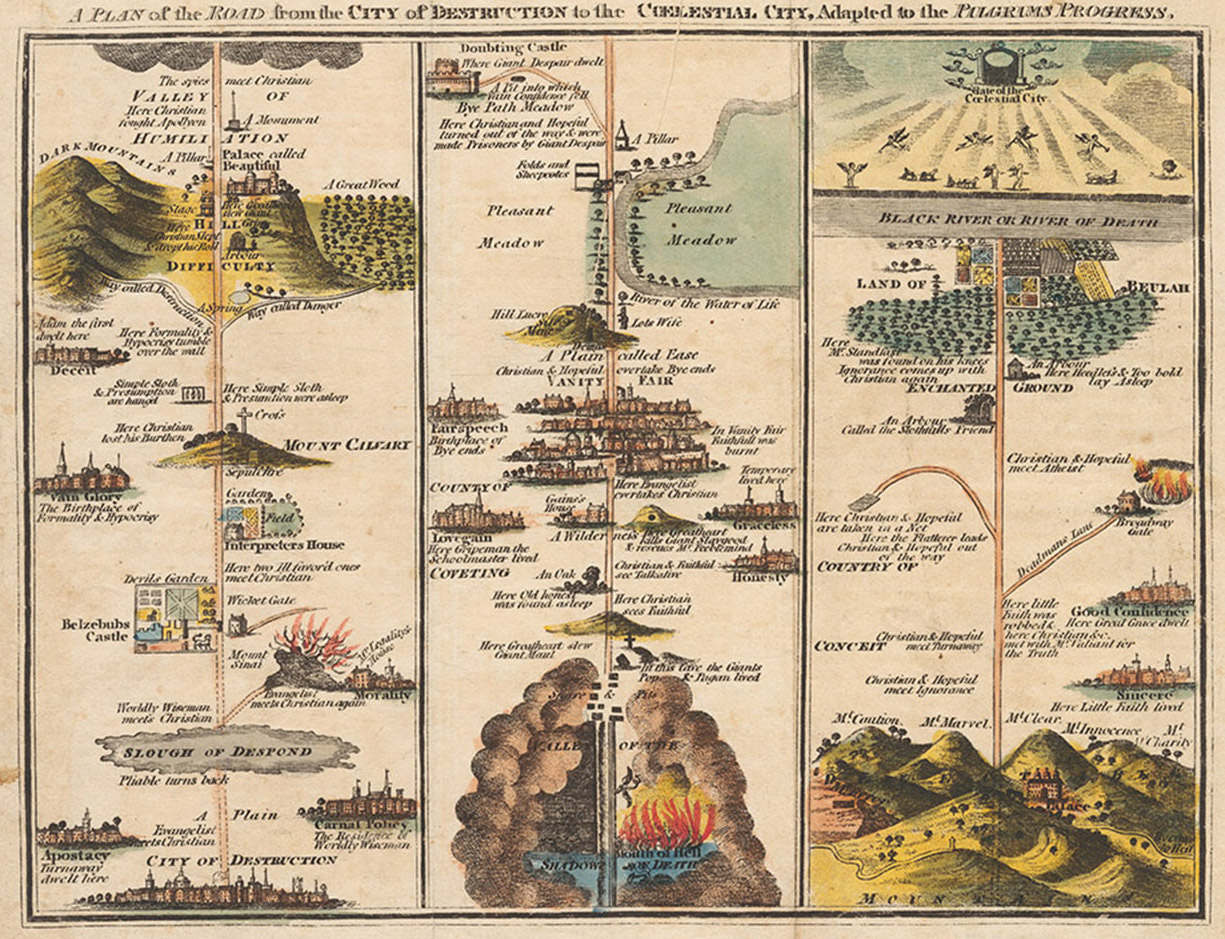
Here’s the Map of Ghastly Gorm Hall from Goth Girl, by Chris Riddell.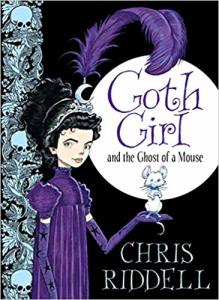
 Note the Hall has an East Wing and a West Wing, but also a Broken Wing. As well as a Kitchen Garden, the Hall is complete with Bedroom Garden and Living Room Garden.
Note the Hall has an East Wing and a West Wing, but also a Broken Wing. As well as a Kitchen Garden, the Hall is complete with Bedroom Garden and Living Room Garden.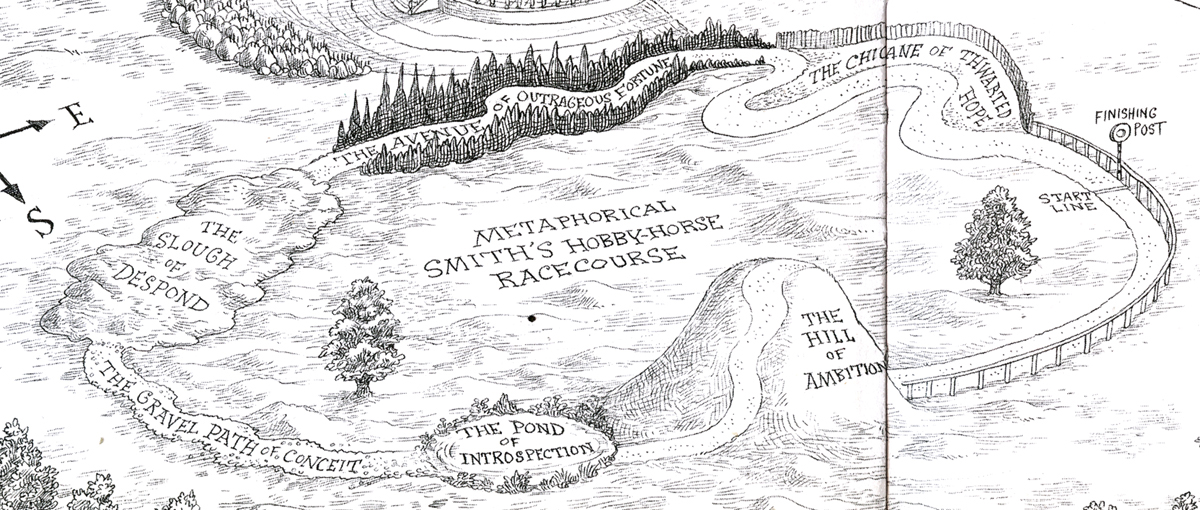
I’m planning my garden improvement already.
One can meander round Metaphorical Smith’s Hobby-Horse Racecourse – with its Hill of Ambition, Gravel Path of Conceit, and Pond of Introspection.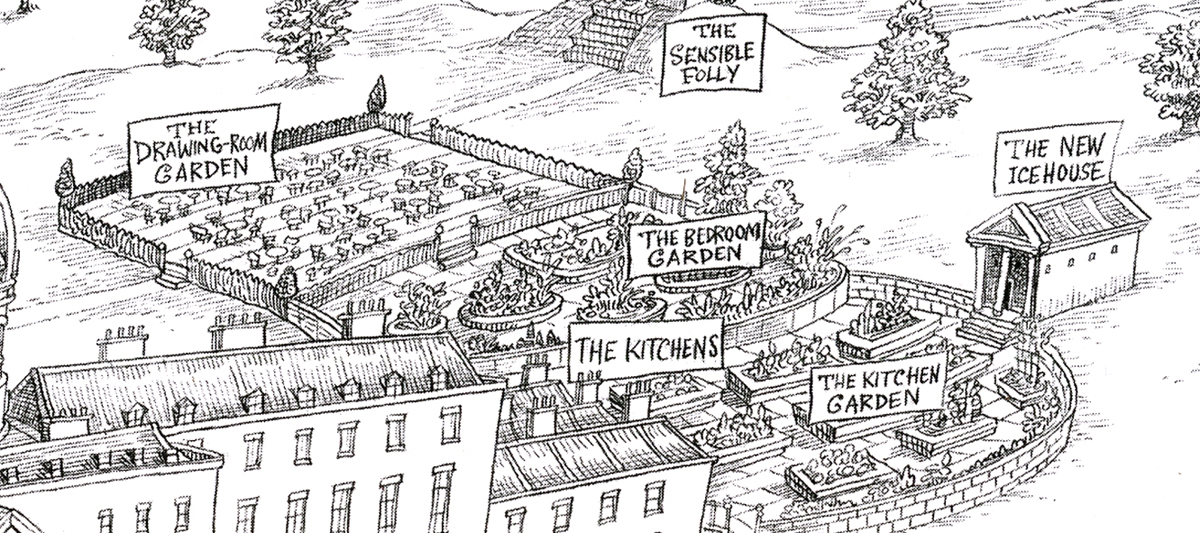
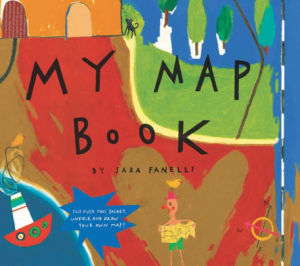 In Sara Fanelli’s My Map Book –we find a Map of my Heart, a Map of my Day.
In Sara Fanelli’s My Map Book –we find a Map of my Heart, a Map of my Day.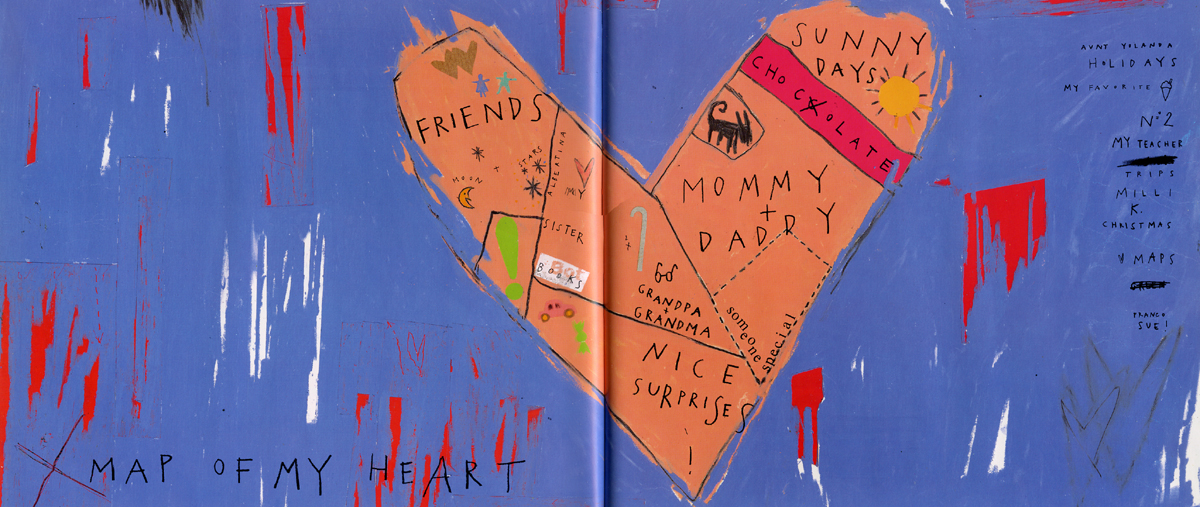
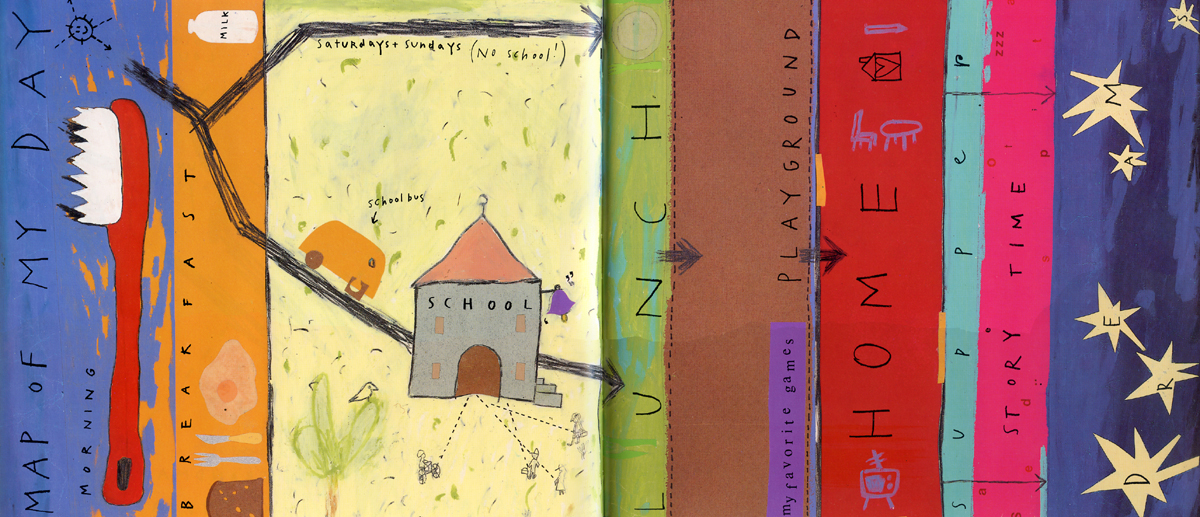
We’re wandering into maps that are states of mind, a map of how you feel, a map of time.
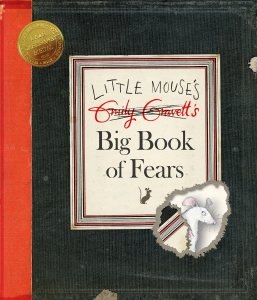 One of my absolutely favourite picture books is Emily Gravett’s Little Mouse’s Big Book of Fears. Mouse battles his terrors with the power of drawing. The book is extremely nibbled and so is Mouse’s pencil.
One of my absolutely favourite picture books is Emily Gravett’s Little Mouse’s Big Book of Fears. Mouse battles his terrors with the power of drawing. The book is extremely nibbled and so is Mouse’s pencil.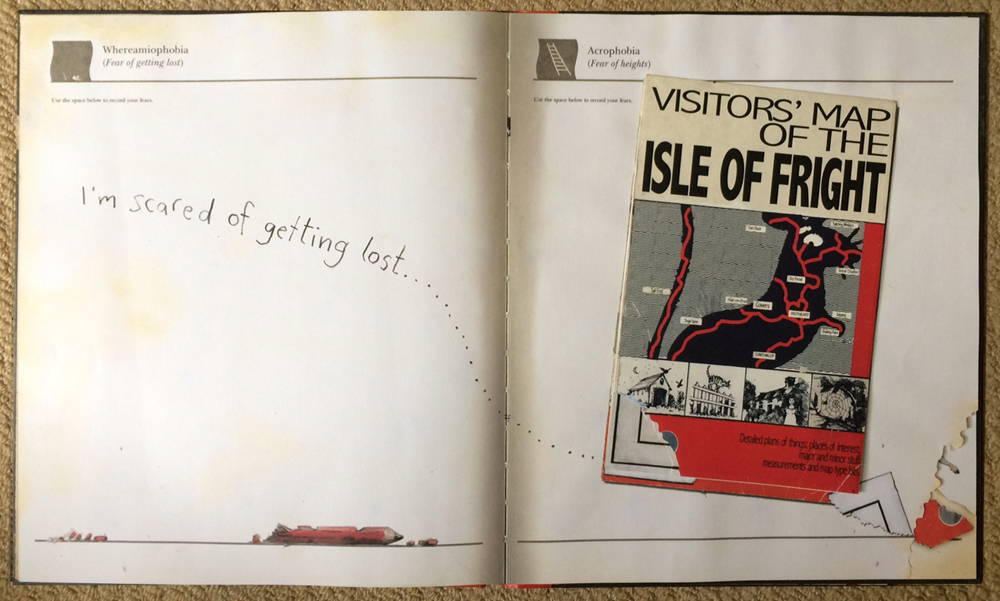
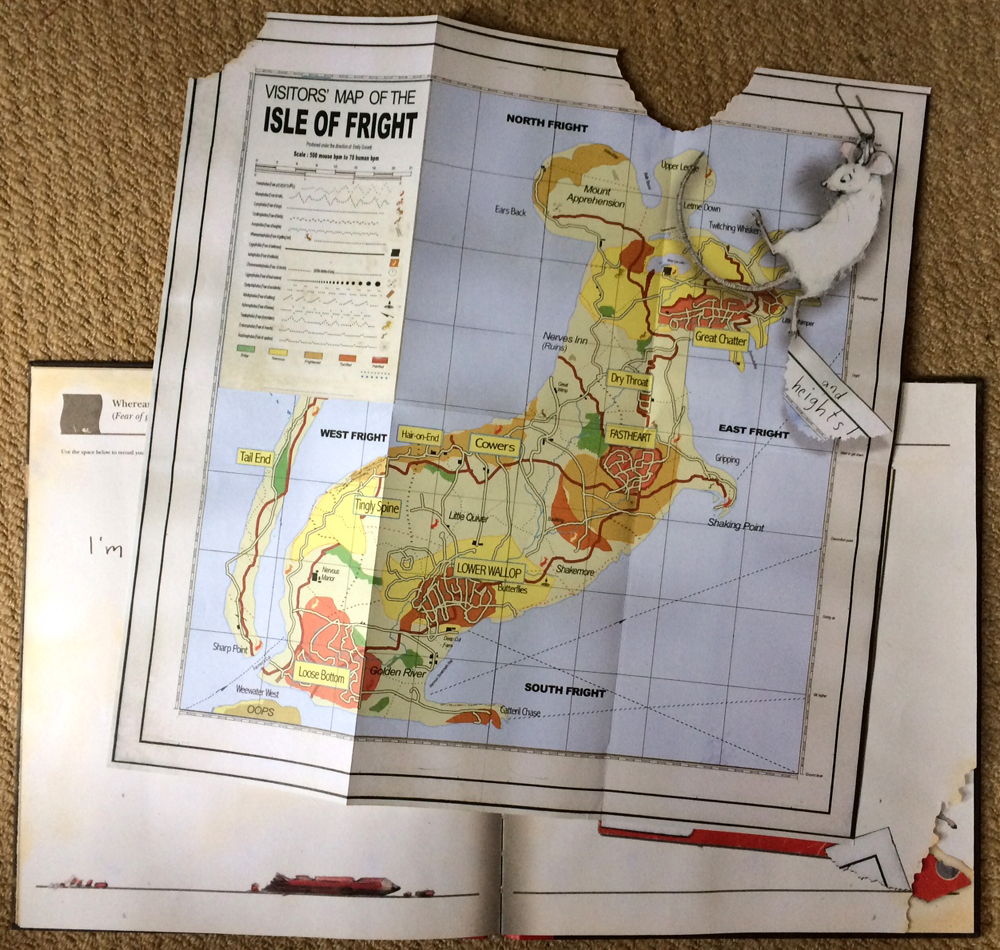
Here is the Map of the Isle of Fright, where the visitor can travel from Twitching Whiskers to Loose Bottom.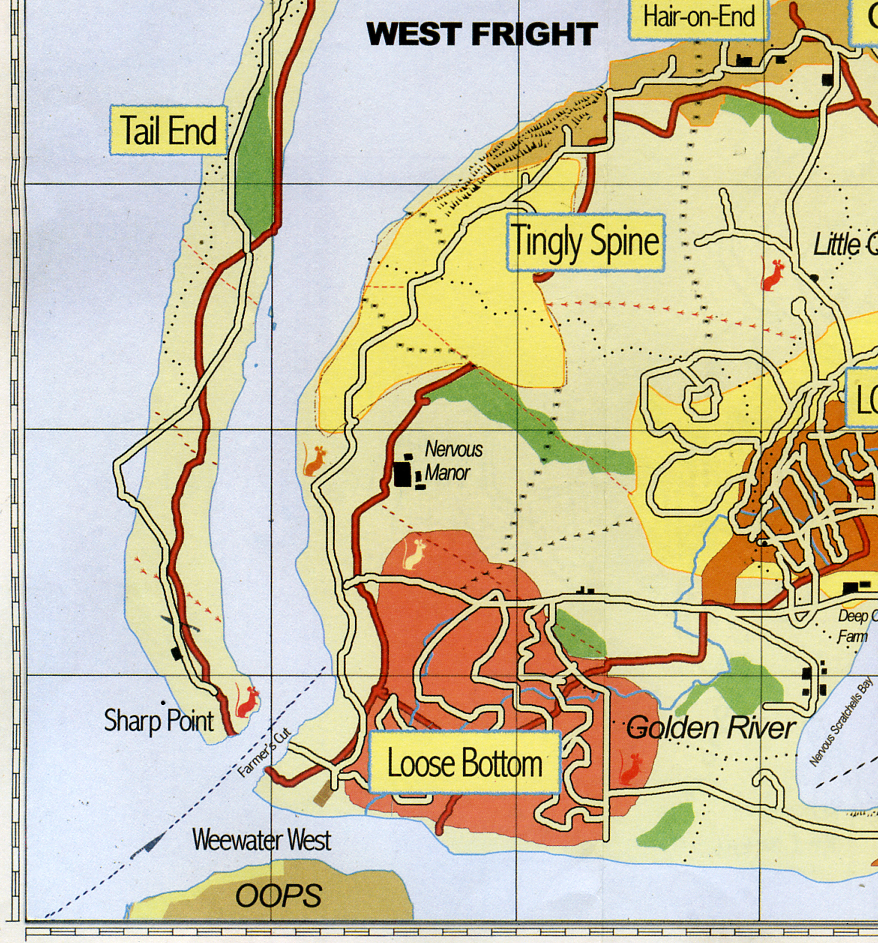
And now – Exclusive to Picture Book Den:
Cut Out & Keep: Make Your Own Metaphorical Landscape Generator.
Simply cut out, combine randomly from column A and B and use the places created to make your own Metaphorical Landscape.
Making a map gives you freedom to map the impossible, to lose yourself in your scale of choice.
In A Boy & Bear in a Boat by Dave Shelton – here’s a map of nowhere. It’s almost not a map at all.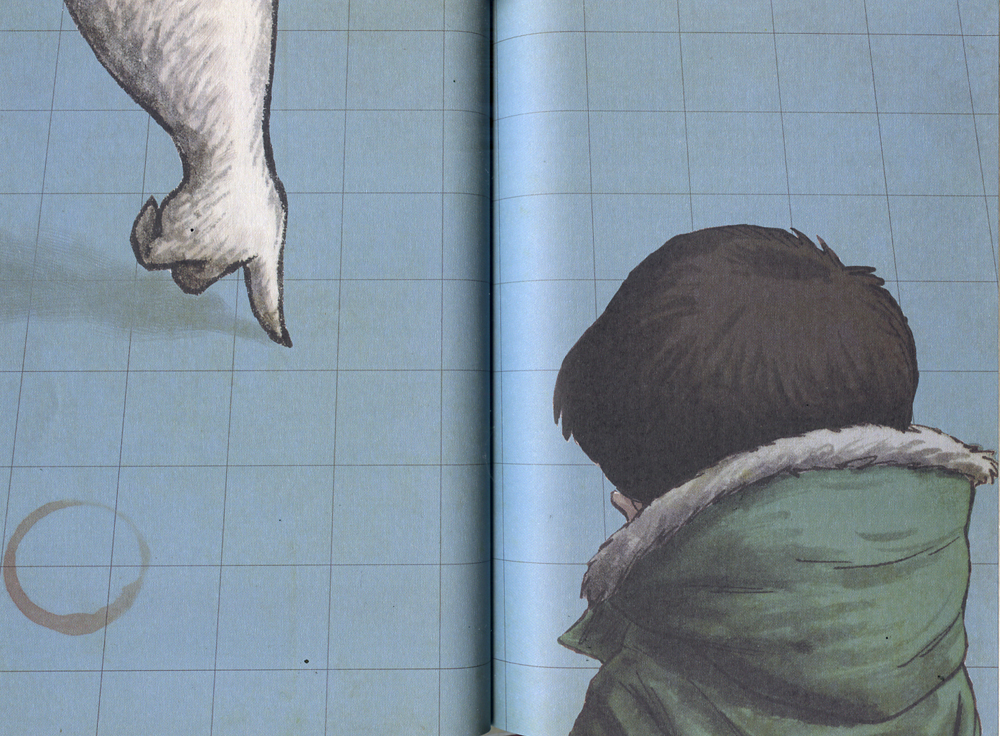
Here’s the map on the cover of the book (from the original hardback version)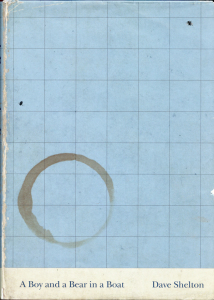
No features at all. Except a mug ring. But then, look again….squinting closely– there are two black splots.
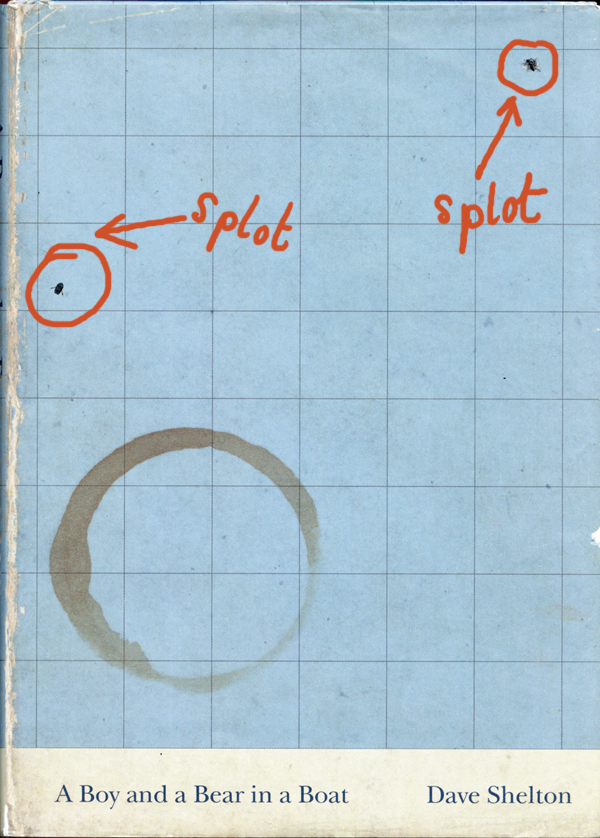
Focus in on one and it’s – yup, just a squashed fly.
Then let’s pull right in on the other splot – I definitely see oars there.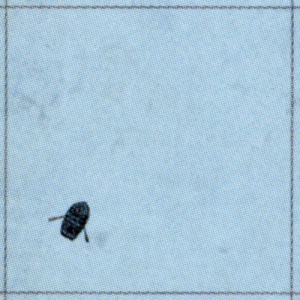
The scale of the bleak emptiness is immense, and I feel like I am falling through infinity.
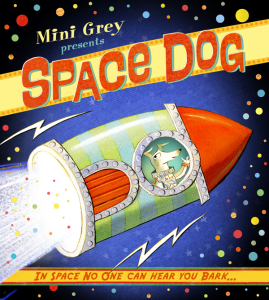 My book Space Dog started with thinking about making a space map. My son Herbie had a brilliant rocket toy. It came from the Early Learning Centre.
My book Space Dog started with thinking about making a space map. My son Herbie had a brilliant rocket toy. It came from the Early Learning Centre.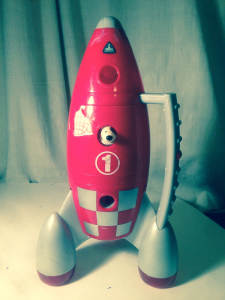
It was shaped a bit like a kettle with a handle, and you could fly it all round your home, exploring the Cistern System, the Pastaroid Belt and the Outer Spooniverse.
I wondered – what would space look like if the whole of the universe was actually everything in your house, in disguise. So here we have some Space Map Planetoids:
FryUp42 with its ketchup volcanoes, the steamy planet of Bathtime 37 and Cornflake 5 and Bottleopolis which are in the Breakfast Cluster.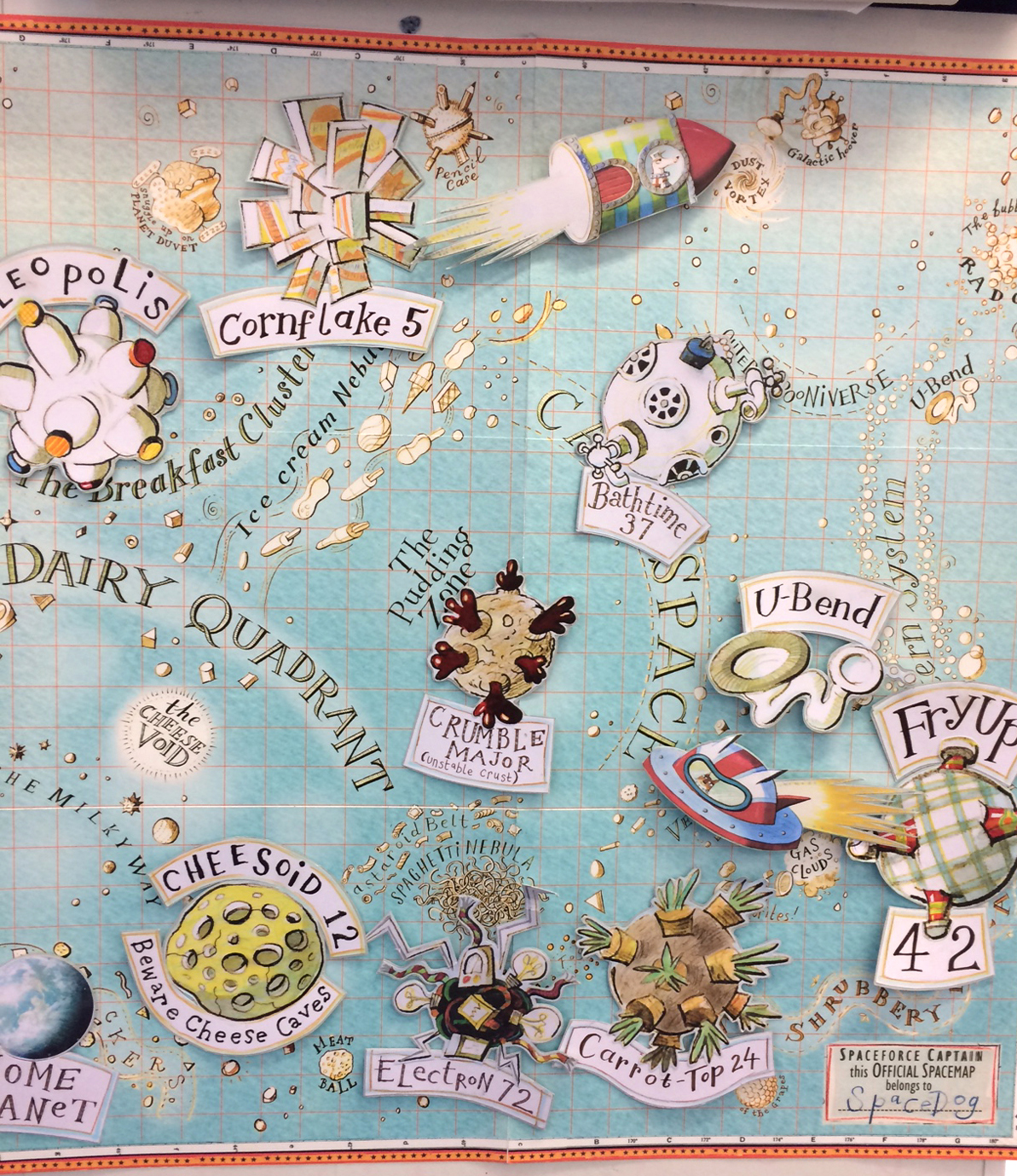
The Space Map was Space Dog’s endpapers, but, alas, they only appeared in the hardback version.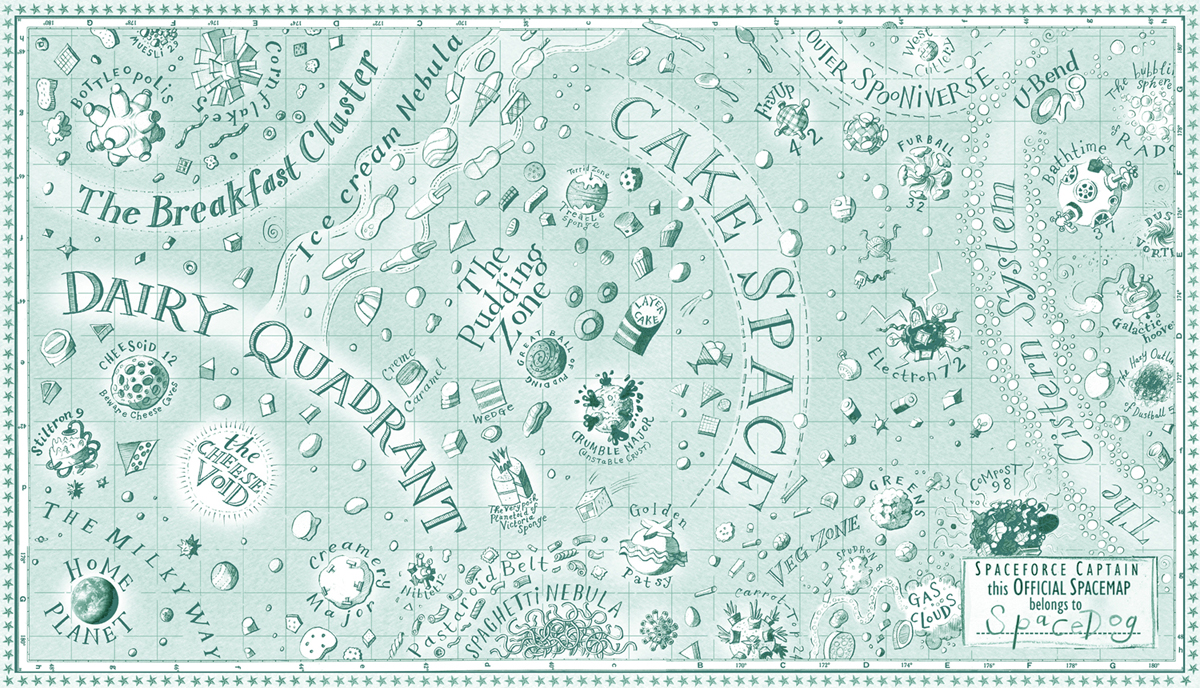
Download your own space map bits here, and make your own Space Map.
Take some words, maybe these ones which are a list of some things you might forget: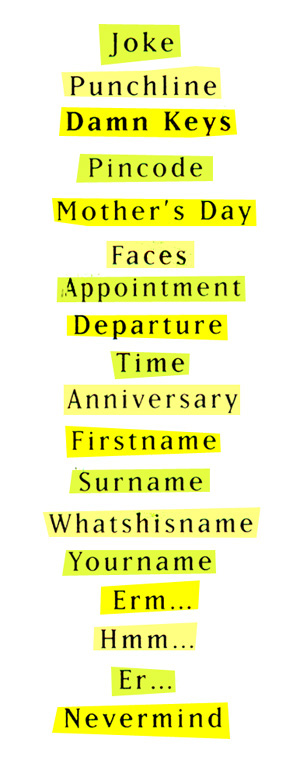
Take a diagram of some islands, maybe these ones: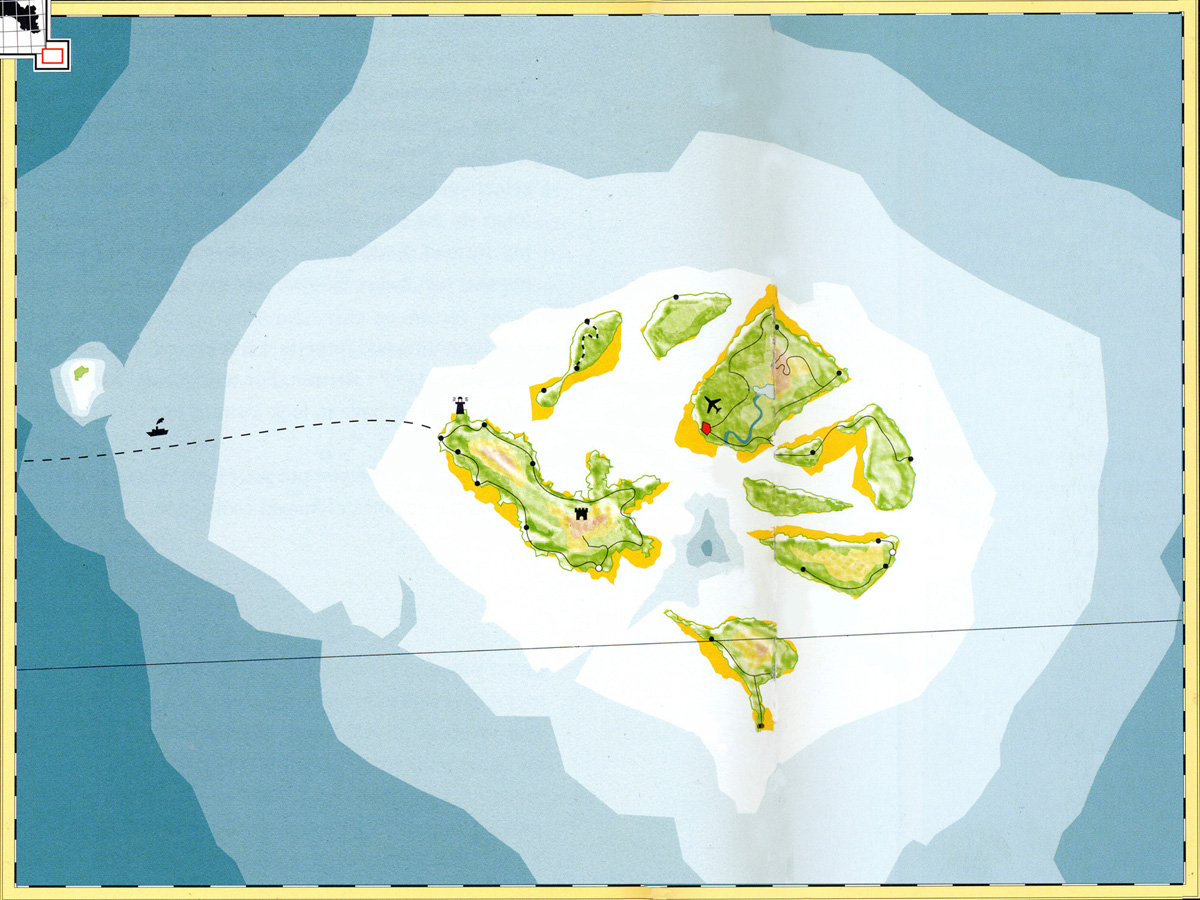
Put them both together, and what have you got?
The Isles of Forgetfulness.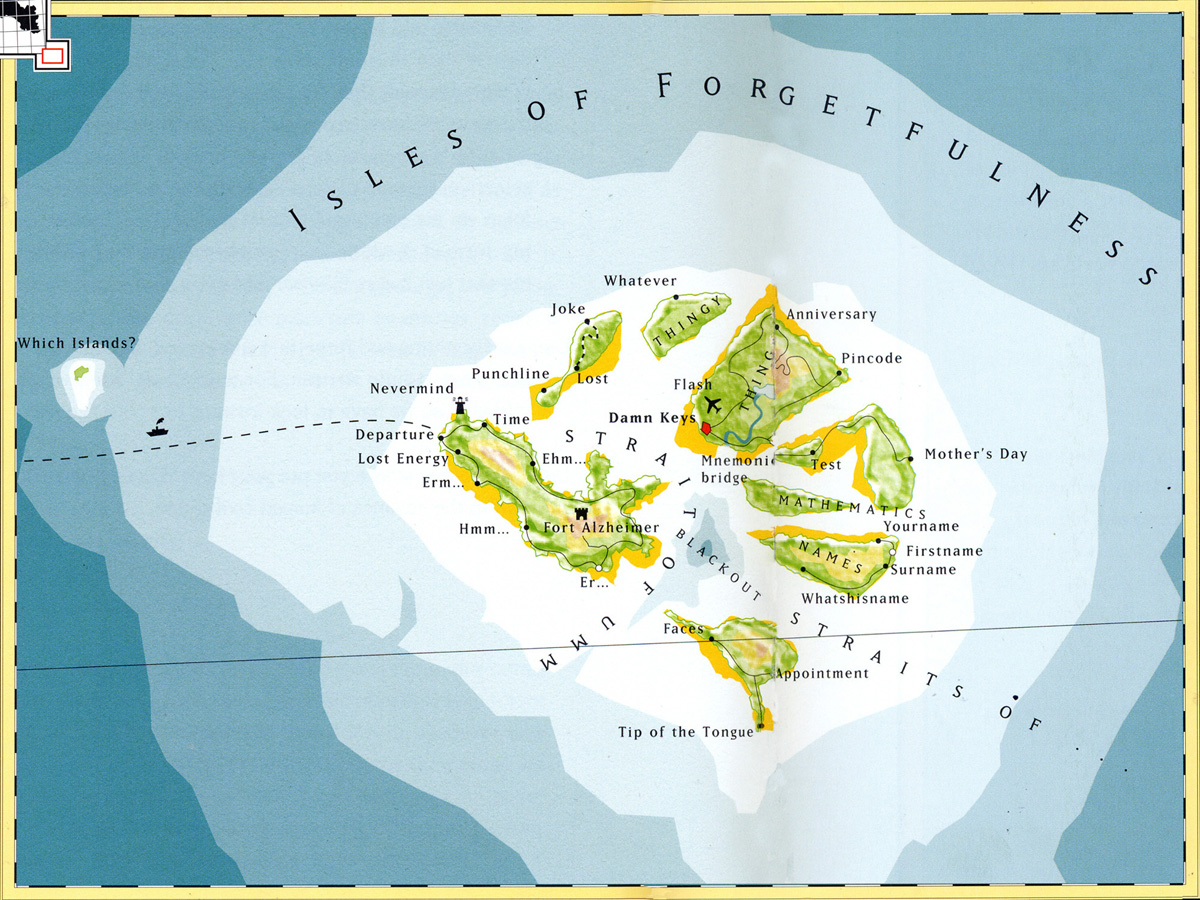
This page comes from The Atlas of Experience by Louise van Swaaij and Jean Klare, which charts the human journey through life, with maps drawn in Subjective Projection and reproduced in Unimaginable Scale.
Maps demonstrate the alchemy of words and pictures, that magic picture book double act. Words & Pictures and your imagination are doing the work of together creating a whole new thing. And because your imagination helped make it, it’s unique. So the map is words and pictures glued all together with a tremendous projection of imagination.
Falling into a Map, endless Maps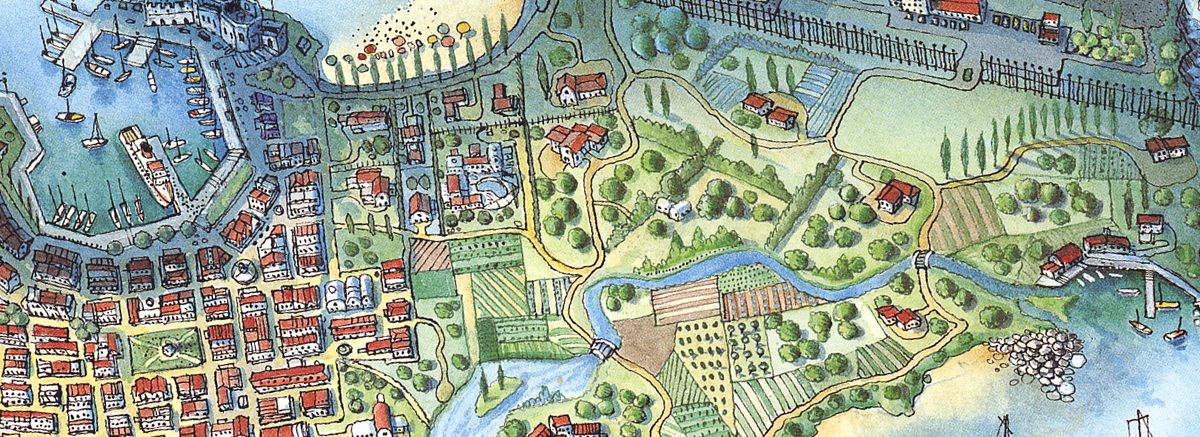
My dream is to be able to actually fall into a map and find myself in another world that I can explore. Or to find a map that I can zoom into or out of forever…from the microscopic atomic scale to the intergalactic.
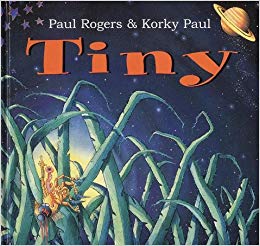 In Tiny by Korky Paul and Paul Rogers, Tiny is a flea on the back of a dog called Cleopatra living at No 72 Hilltop Road.
In Tiny by Korky Paul and Paul Rogers, Tiny is a flea on the back of a dog called Cleopatra living at No 72 Hilltop Road.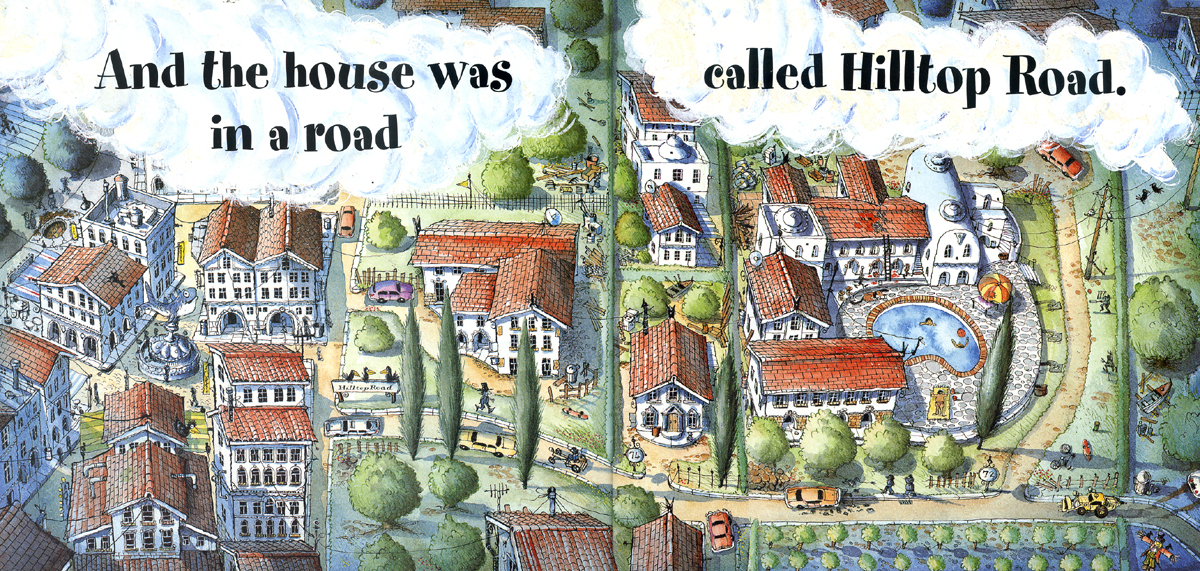
Korky Paul’s marvellously detailed pictures pan out from hairs to streets to islands to planets.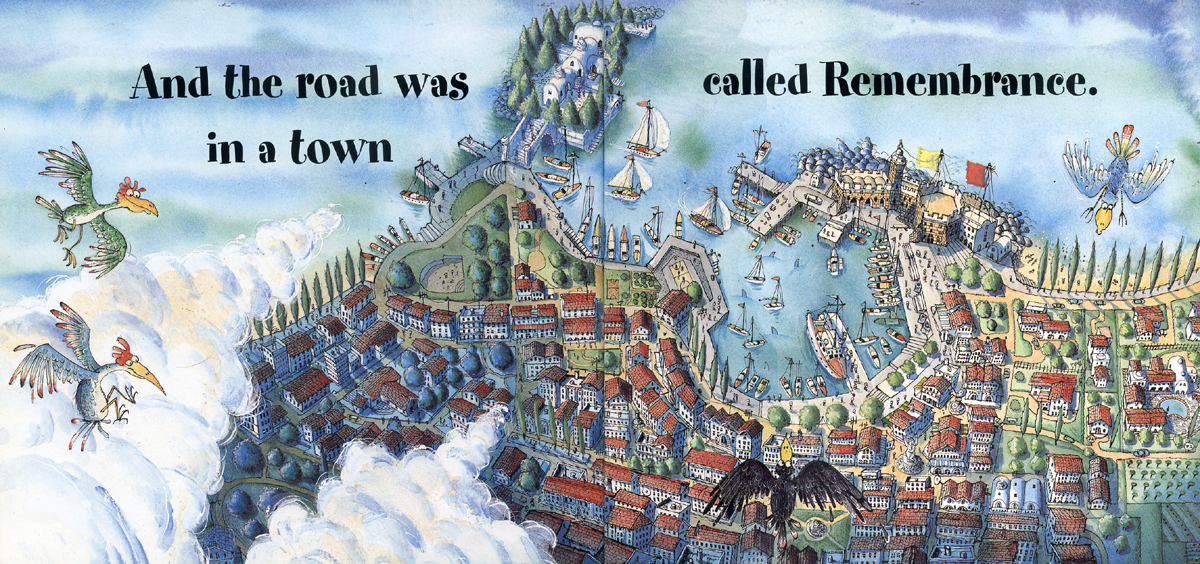
But every time I can still spot the dog, find the house still recognisable at a smaller scale.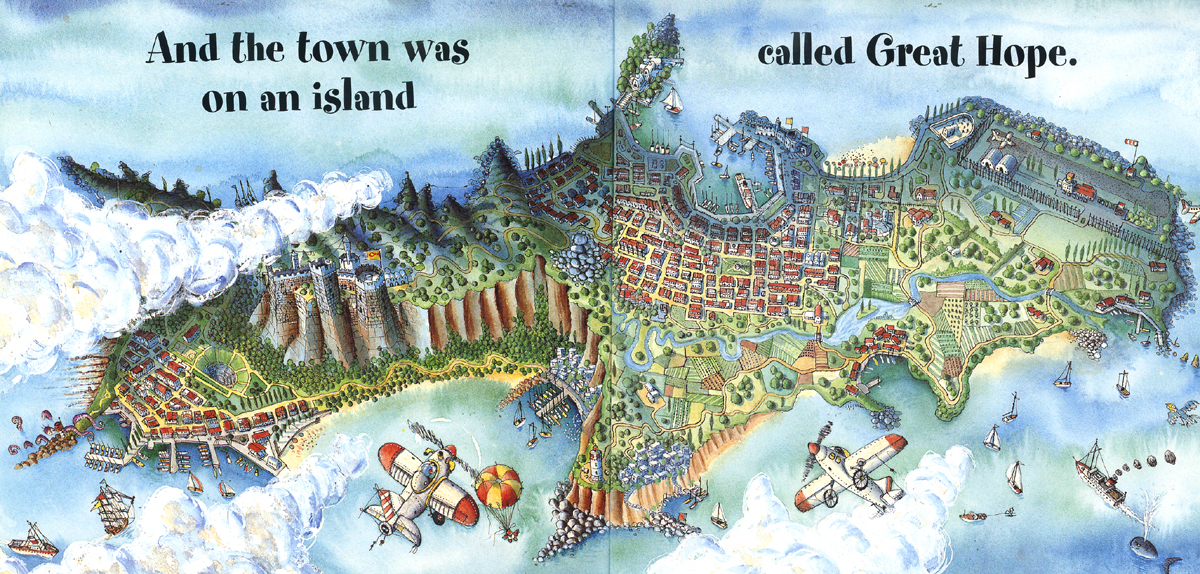
I know if I zoom back in I’ll be able to find EVERYTHING there, every bird, fish, person, dog, insect, molecule. (I love that giant octopus.)
To end with I’m going to tell you about one of the very first picture book maps I ever made.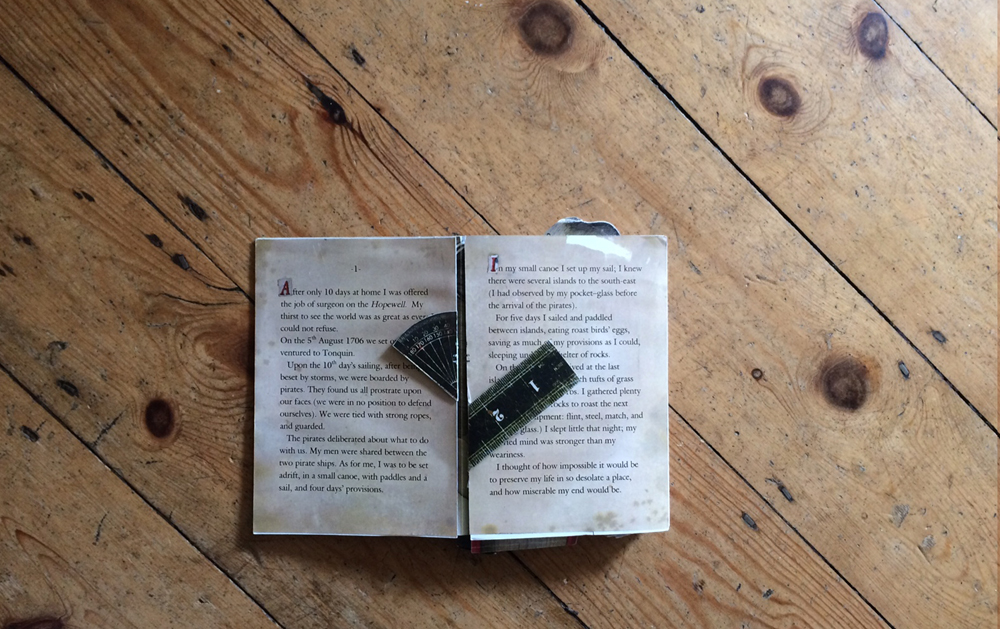
Heres the flying island of Laputa
It was for a student project, adapting Gulliver’s Travels.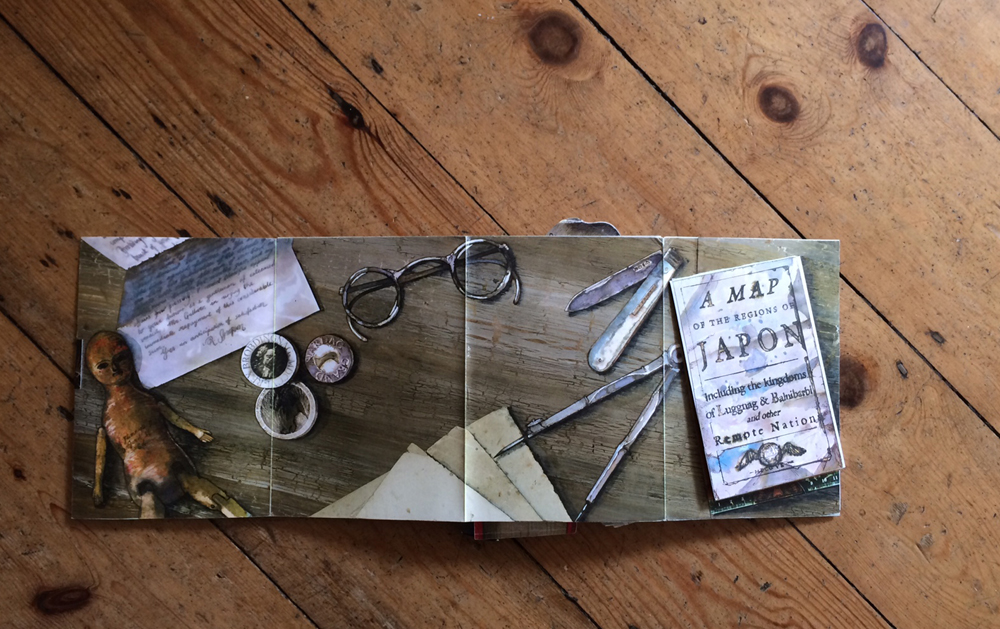
The first page opens out to show Gulliver’s desk and his map.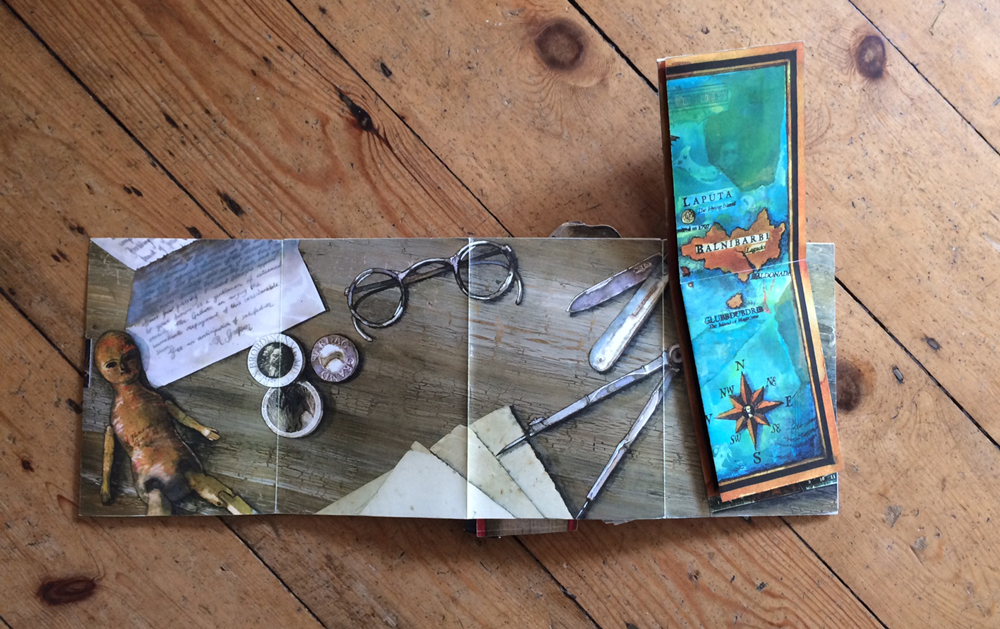
In the map you can make out Gulliver abandoned in a rowing boat, and the flying Island of Laputa about to come over and pick him up.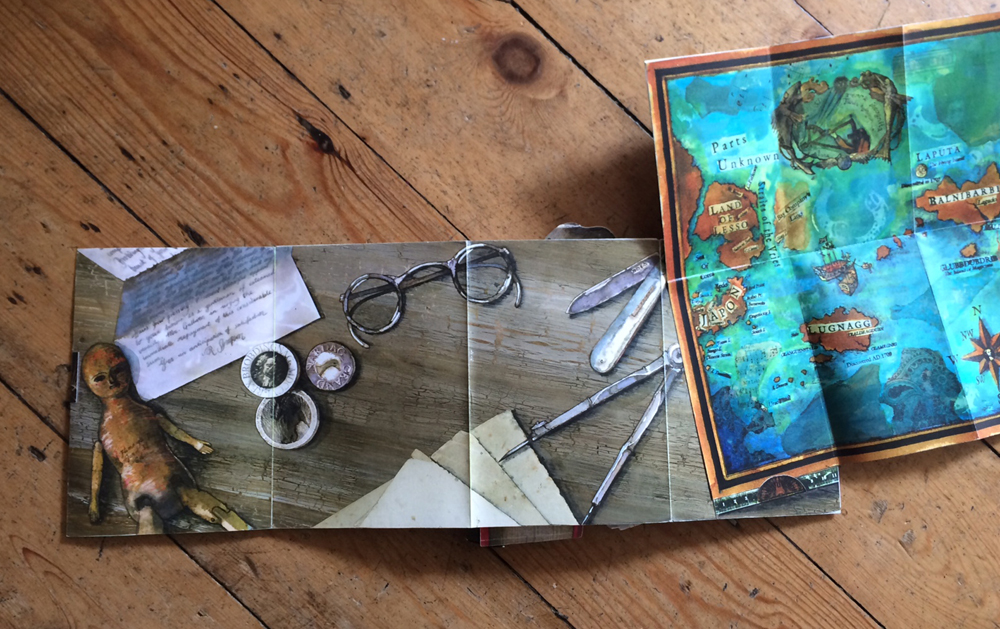
What I really really wanted was for you to be able to zoom in enough to for you to be able to see the waves rippling the water, to smell a bit of spray and hear some seabirds. I did (sort of, badly) manage to do this when I animated my book and falling into the map 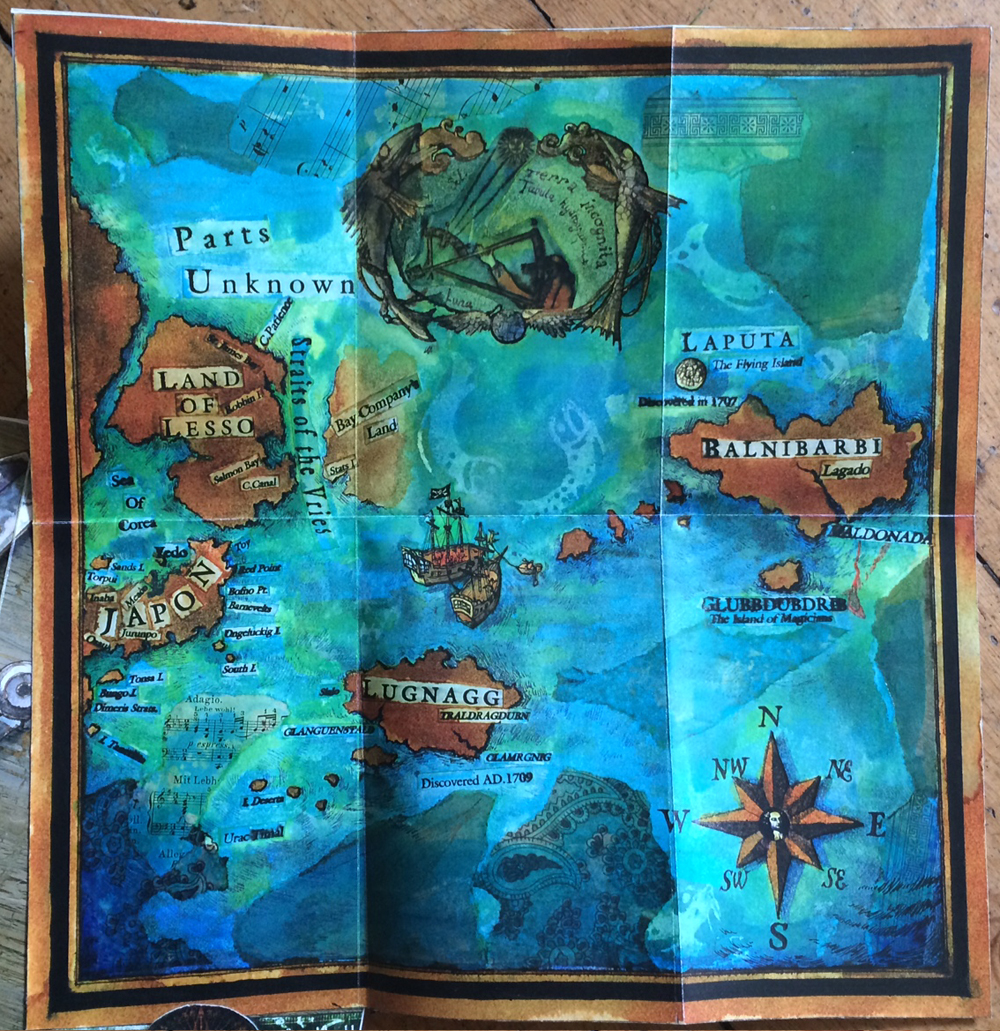 became the beginning of Gulliver’s adventures on the crazy island of Laputa.
became the beginning of Gulliver’s adventures on the crazy island of Laputa.
A map is a place to roam about in the imagination. A map is a record of the discovered and the undiscovered. A map is a plan for plundering, or a diagram of how to carve up the world. A map is a journey, a story, a cast of characters, a portal.
I’ve always been obsessed with the small world. Small worlds are where we are animators as children: the doll’s house, the micro city you made among tree roots, the box of plastic dinosaurs and farm animals ready to journey down the garden. A map is a model world, and in picture books maps can come alive, using the power of words and pictures and your imagination and mine, in yet another feat of picture book magic.
PS: Interested in maps and in Oxford? There’s an wonderful exhibition – Talking Maps – at the Bodleian Library you might like to visit. Details here.

